
oadc.com | info@oadc.com
2024 OADC Annual Convention JUNE 13-15 SUNRIVER RESORT Continuing Legal Education Guidebook

Dan Schanz, Partner, Schanz-Lawler
Katie Smith, Walhood Law Group
Vicki Smith, Partner, Chinn Smith Winters
Grant Stockton, Partner, Brisbee & Stockton
Peter Tuenge, Partner, Keating Jones Hughes
Gordy Welborn, Retired Partner, Hart Wagner
TABLE OF CONTENTS This information and related materials are provided to you as a registered 2024 OADC Annual Convention attendee only. To maintain the integrity of the program, please do not share this with anyone else. CLE Complete Schedule . . . . . . . . . . . . . . . . . . . . . . . . . . . . . . . . . . . . . . . . . . . . . . . . . . . . . . . . . . . . . . . . . . . . . . . . . . . 6 Speaker Profiles . . . . . . . . . . . . . . . . . . . . . . . . . . . . . . . . . . . . . . . . . . . . . . . . . . . . . . . . . . . . . . . . . . . . . . . . . . . . . . . . 8 General Sessions Gaining Trial Experience for Young Attorneys . . . . . . . . . . . . . . . . . . . . . . . . . . . . . . . . . . . . . . . . . . . . . . . . . . . . . . . 18 Mental Health and Substance Abuse . . . . . . . . . . . . . . . . . . . . . . . . . . . . . . . . . . . . . . . . . . . . . . . . . . . . . . . . . . . . . . . 24 Supreme Court Update 63 Trial Technology . . . . . . . . . . . . . . . . . . . . . . . . . . . . . . . . . . . . . . . . . . . . . . . . . . . . . . . . . . . . . . . . . . . . . . . . . . . . . . . . . 88 Ethics Refresher for the Defense Practitioner: Multiple Clients in One Lawsuit . . . . . . . . . . . . . . . . . . . . . . . . . . . 90 Breakout Sessions CONSTRUCTION | Zombie CD Claims- Back from the Dead . . . . . . . . . . . . . . . . . . . . . . . . . . . . . . . . . . . . . . . . . . . 162 EMPLOYMENT | Advising Employers on Advanced Leave Issues 172 PRACTICE MANAGEMENT | Confidentiality and Non-Disparagement Clauses: A Mediator’s Role 208 DIGISTREAM | Principles for Advanced Investigations . . . . . . . . . . . . . . . . . . . . . . . . . . . . . . . . . . . . . . . . . . . . . . . 221 Lightning Round . . . . . . . . . . . . . . . . . . . . . . . . . . . . . . . . . . . . . . . . . . . . . . . . . . . . . . . . . . . . . . . . . . . . . . . . . . . . . 288
2024 OAD C ANNUAL CONVENTION 2
Congratulations to Our
Lifetime Achievement

Lindsey Hughes Attorney On the Rise
 Diane Lenkowsky
Diane Lenkowsky
OADC
3
2024
Award Winners
DEFENSE PRACTICE ACADEMY

Goal
To enrich, enliven, and support the defense bar by providing this service both to the “students” and the firms that send them to the Academy.
Schedule Five-Session Series October 2024 - June 2025
Mastering the Williams v. Simonson Case Embark on a comprehensive journey through the intricacies of the case with our immersive five-part series. Each part of the 2024-25 Defense Practice Academy offers invaluable insights and an opportunity to gain practical skills crucial for success in litigation. All sessions are two hours and include both educational and “mock” components.
Credits
Earn 10 credits with a focus on practical skills.
OADC is here to support the continuing education of newly admitted defense attorneys and junior associates by teaching them how to manage a case from initial intake through arbitration or trial, and everything in between.
Our aim is to provide the kind of nuts & bolts, hands-on training and instruction that most partners and senior associates are simply too busy to provide in today’s legal market.
JOIN THE CLASS OF 2025
Scan for More Information or visit www.oadc.com/defense-practice-academy
4
Download the New OADC Mobile App!
Connect with other members, view the schedule, and more!
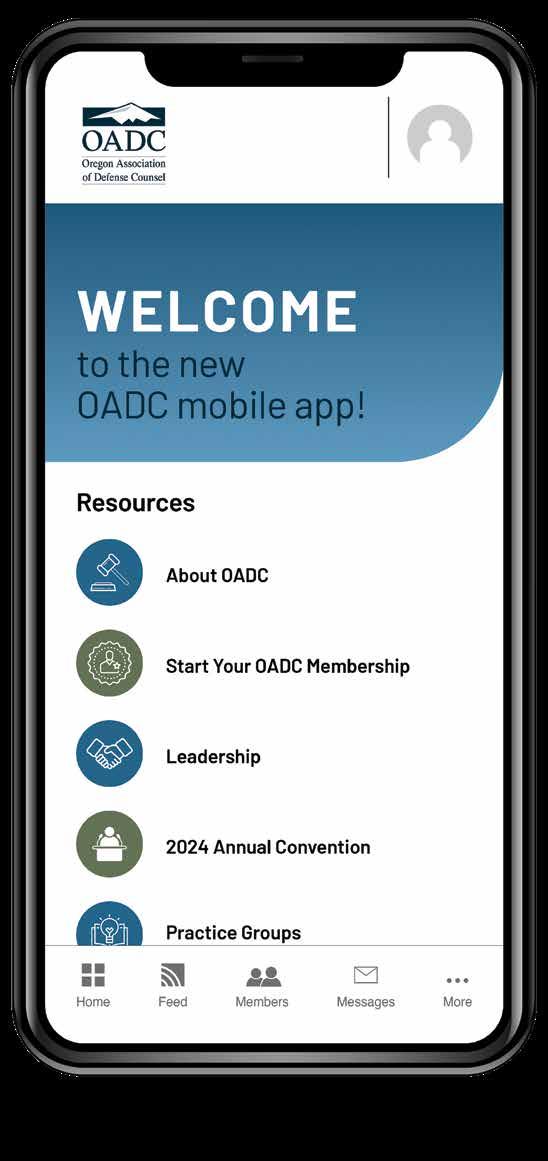
1. Use QR code or search “OR Assoc of Defense Counsel”
2. Download and install on your phone
3. Open the App, click the profile icon on the top right to log in. Follow prompts to obtain access code, make sure to use the email you registered with or associated with your membership account.
4. Now that you’re logged in, you can make changes to your profile.
App Now! App Now!
5
FRIDAY, JUNE 14
HOMESTEAD
7:15am - 7:45amBreakfast
7:45am - 8:00am Welcome & Introduction with OADC Board Members
8:00am - 9:00am Gaining Trial Experience for Young Attorneys
Deschutes County Beth Bagley, and Randy Miller & Multnomah County Judge Ben Souede
Civil trials are less common than they used to be. This presentation will address how to get young/new attorneys courtroom and trial experience and what the judges presiding over the matter expect. Hear from federal and state judges on how they encourage new attorney participation while allowing a more experienced attorneys to assist if/ when needed. Discuss the hurdles of client/insurance approval and how partners can alleviate concerns to facilitate approval for trial appearances.
9:05am - 10:05am Mental Health and Substance Abuse
Kirsten Blume
Many members of the legal community have found the last three years incredibly challenging, stressful, and bordering on unmanageable some days. In a vocation already replete with stress, current circumstances are increasing the level of stress, burnout, and symptoms of mental health conditions for practitioners as well as affecting the functioning of clients. The rates of burnout and mental health conditions have increased exponentially since 2019. Before the pandemic, lawyers already experienced mental health conditions, such as depression, anxiety, and problematic substance use, much more frequently than non-lawyers. It is more important than ever to learn to reach out for help for one’s self and increase our comfort with expressing concern for others.
10:05am - 10:20am NETWORKING BREAK + EXHIBITS
10:20am - 11:50am Supreme Court Update
Thomas H. Dupree
Potential impacts on the current supreme court and decisions from the court on law practice.
11:50am - 12:00pm NETWORKING BREAK + EXHIBITS
12:00pm - 1:00pm Trial Technology
Bob Christie
Using available tech to improve our trial prep and presentation of evidence.
2024 OADC ANNUAL CONVENTION
6
SATURDAY, JUNE 15
7:15am - 7:45amBreakfast
7:45am - 8:00am OADC Awards
8:15am - 9:15am Ethics Refresher for the Defense Practitioner: Multiple Clients in One Lawsuit
Amber Bevacqua-Lynott
CMany times multiple defendants are named in a lawsuit, and lawyers agree to represent more than one defendant because the interests seem aligned. Things may go smoothly through the case, or a conflict may be identified as discovery proceeds. This will be an ethics refresher on best practices for representing multiple clients in one action, advance waivers, identifying when a conflict may arise, and analyzing whether the conflict is waivable or not.
9:15am - 9:30am NETWORKING BREAK + EXHIBITS
9:30am - 10:30am Breakout Sessions
Construction | Zombie CD Claims- Back from the Dead Peter Wilcox-Jones (Heritage 2)
Employment | Advising Employers on Advanced Leave Issues Jaci Houser, Rachel Timmins, & Chet Nakada (Homestead) Practice Management | Confidentiality and Non-Disparagement Clauses: A Mediator’s Role Richard Vangelisti & Karen Bamberger (Heritage 1)
Digistream | Principles for Advanced Investigations Garrett McGinn (Fremont)
10:30am - 10:45am NETWORKING BREAK + EXHIBITS
10:45am - 11:00am Defense Practice Academy Graduation Class of 2024
11:00am - 12:00pm Past President Lightning Round
Moderated by George Pitcher
Lloyd Bernstein, Partner, Bullivant Houser | Taking an absolute hard line in a discovery dispute -- thinking that the Court would dig deep into the weeds to understand all the nuances, read all the conferral communications, and reprimand opposing counsel for what was aggressively argued to be an untenable position.
Dan Schanz, Partner, Schanz-Lawler | How to lose a perfectly good case based upon what is in their file.
Katie Smith, Walhood Law Group | Mediation Mistakes. Have you ever walked away from mediation frustrated with the lack of meaningful settlement negotiations? Here are the biggest mistakes lawyers make coming into mediation that impact the outcome based on my experience both as a participant and mediator.
Vicki Smith, Partner, Chinn Smith Winters | When the best laid plans go awry at trial, it is imperative that you have your client’s trust when you need to pivot your strategy. It is also helpful to review your expert’s file in advance of trial to avoid those plans going awry in the first place.
Grant Stockton, Partner, Brisbee & Stockton | Forewarned is Forearmed: The best way to lose a winning case is by explaining to the opposition exactly how you intend to win at trial by dressing up your defense strategy as a motion for summary judgment.
Peter Tuenge, Partner, Keating Jones Hughes | Help picking a jury – do not leave home without it; and, personal communication – there is never too much
Gordy Welborn, Retired Partner, Hart Wagner | Don’t Do Me Like That--Battle Scars and Tips
CONTINUING LEGAL EDUCATION GUIDEBOOK 7
HOMESTEAD
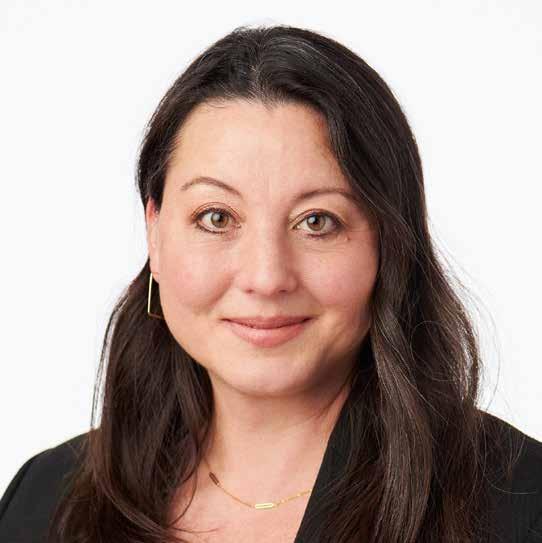

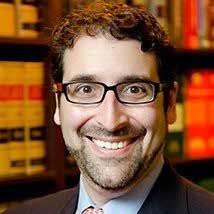
JUDGE BETH BAGLEY
Judge Bagley was elected to the Deschutes County Circuit Court November, 2012, and took the bench January, 2013. Judge Bagley handles general civil, criminal and domestic relations cases. Prior to taking the bench, Judge Bagley was a prosecutor for 13 years, and a criminal defense attorney handling indigent defense cases for 2 years before that.
Judge Bagley received her undergraduate degree from the University of California—Santa Barbara in 1994, and her law degree from the University of Minnesota Law School in 1997. Judge Bagley has lived and practiced law in Oregon since 1997.
Judge Bagley is currently an executive committee officer for the Oregon Circuit Court Judges Association, was one of the founding Board Members of OAPABA (Oregon Asian Pacific American Bar Association), is a member of Oregon Women Lawyers and its affiliate chapter Cascade Women Lawyers, regularly provides training and education to judges and lawyers and is an active volunteer in her local Bar Association and community.
JUDGE RANDY MILLER
Judge Miller was elected in 2014, and presides over all case types including the Deschutes District Attorney’s court connected Veteran Intervention Strategy docket. Judge Miller served as Chair of the OJD SEPAC committee and was a past member of the OJD UTCR committee.
Prior to office, Judge Miller worked as a civil litigator at Schwabe Williamson and Wyatt, an internal auditor with Les Schwab Tire Company, a police officer in Sunriver Oregon, and served in the Marine Corps. Judge Miller loves fly fishing, and funny jokes.
JUDGE BEN SOUEDE
Judge Benjamin Souede has been a Multnomah County Circuit Judge since 2017. Prior to his appointment to the bench, Judge Souede moved between private practice and public service throughout his legal career. His private practice in Oregon (first at Lane Powell and then as a founding member of the Angeli Law Group) focused on complex civil and white collar criminal litigation. His public service career included stints as a Senior Advisory to Senator Hillary Rodham Clinton, and as General Counsel to Oregon Governor Kate Brown.
SPEAKER PROFILES
8
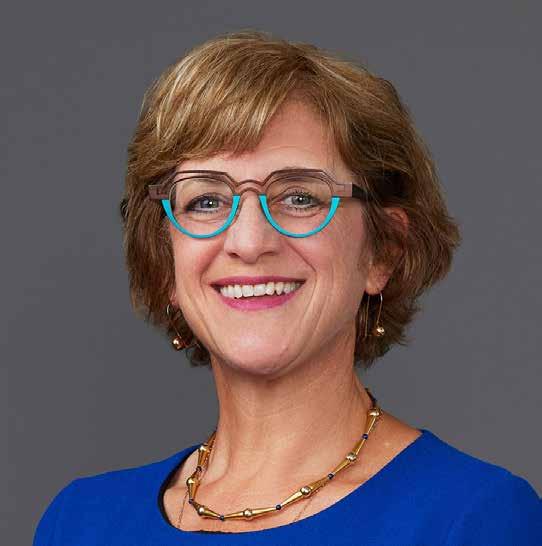
KAREN BAMBERGER
Karen Bamberger is a skilled negotiator who has settled hundreds of cases over her more than 35-year career as a litigator in private practice. She has tried jury and bench trials in both state and federal courts.
Ms. Bamberger has served as lead counsel, focusing primarily on personal injury and product liability cases running the gamut from soft-tissue injuries to wrongful death cases. The types of injuries have been as varied as the contexts in which they occur—from motor vehicle accidents to construction sites to dram shop liability scenarios. She is known for her thorough preparation, knowledge of the law, ability to develop rapport with the parties and collegiality in dealing with opposing counsel. As a mediator, she looks forward to working with parties to resolve claims in collaborative and meaningful ways rather than engaging in an adversarial process.
Ms. Bamberger has served as an arbitrator on three-member UIM panels throughout her career, as well as an arbitrator for mandatory arbitration cases for over a decade. She takes pride in being selected to serve in these capacities, viewing her selection as a reflection of her reputation for being fair and listening to what every party has to say.

LLOYD BERNSTEIN
Lloyd Bernstein has been protecting the interests of insurers and businesses in the Pacific Northwest for more than 25 years. They rely on him to navigate them through thorny legal issues, resolve insurance coverage and commercial disputes and defend extra-contractual and bad faith claims. Because he has been handling these types of cases for a long time, he has a thorough understanding of the insurance and legal issues involved. He’s also keenly aware of the nuances relative to the local venues and knows the landscape, judges and insurance laws unique to these jurisdictions.
Lloyd’s work often involves extensive motion practice or trial in state and federal court. But he also recognizes that effective representation does not always mean going to trial, and that an arbitrated, mediated or negotiated resolution can oftentimes be more successful. Clients appreciate that he’s a straight shooter and that they can count on his real-life approach and practical advice. Given his significant experience, he’s better prepared to lay out the risks and counsel clients on the best path for resolution.
SPEAKER PROFILES
9


KIRSTEN BLUME
Kirsten Blume, JD, MA-candidate, was born and raised in Eugene, Oregon. She earned her law degree from Northeastern University School of Law in Boston, Massachusetts. Kirsten is in the process of obtaining her Masters in Counseling from Oregon State University. Prior to joining the OAAP in 2022, Kirsten served those in need of legal service across the globe, including a fellowship in women’s health human rights in Delhi, India, advocating to the UN Human Rights Commission in Geneva on the issue of homelessness in the U.S., working at a firm in Hawaii, clerking for Clackamas County Circuit Court in Oregon, engaging in Title IX and non-discrimination investigations in higher education, and directing a housing advocacy program for a non-profit. In addition to her professional accolades, she is a certified yoga instructor, avid runner and hiker, urban farmer, and parent to two young children.
AMBER BEVACQUA-LYNOTT
Amber Bevacqua-Lynott is Senior Counsel in the Firm’s Portland and San Diego offices, and a member of the Firm’s Professional Responsibility and Litigation Practice Groups.
Ms. Bevacqua-Lynott provides guidance and legal representation to attorneys, licensed professionals, and other business clients, including firms and in-house legal departments. Her practice centers on legal ethics, risk management, and discipline defense. She acts as outside counsel to clients in a variety of industries, providing advice and counsel on all manner of ethics issues, including conflicts, confidentiality, malpractice, risk management, and fee issues.
In addition, Ms. Bevacqua-Lynott represents lawyers, students, and other professionals in front of regulatory authorities and bar associations on licensing, admissions, reinstatement, reciprocity, character and fitness, consumer protection, unauthorized practice of law, and disciplinary matters.
Ms. Bevacqua-Lynott has more than 20 years of legal experience, including extensive civil trial experience. Prior to joining Buchalter, Ms. Bevacqua-Lynott worked in the Oregon State Bar’s Disciplinary Counsel’s Office (DCO) as an Assistant Disciplinary Counsel, where she enforced the Oregon Rules of Professional Conduct through the investigation and prosecution of alleged misconduct. During her time in DCO, Ms. Bevacqua-Lynott successfully first-chaired several dozen civil trials, and investigated or prosecuted hundreds of disciplinary matters. The last six years of her tenure with DCO, she was the Chief Assistant Disciplinary Counsel and Deputy Director of Regulatory Services, and also acted as Chief Trial Counsel.
Ms. Bevacqua-Lynott’s prior experience as a Bar prosecutor, offers her clients a unique insight and expertise on ethics issues and professional obligations.
Intimately versed in legal ethics, Ms. Bevacqua-Lynott developed, updated, and presented Legal Ethics Best Practices, a semi-annual “ethics school” for attorneys. She also prepared and edited the annual annotations of all Bar formal proceeding dispositions, requiring that she be expertly familiar with each stipulated and adjudicated case result.
She regularly presents seminars on ethics issues, both locally and nationally, and frequently provides ethics advice to attorneys.
SPEAKER PROFILES
10

BOB CHRISTIE
Bob Christie is the founding principal of Christie Law Group, PLLC. A trial lawyer for over 39 years, Bob has tried over 100 cases throughout Washington State and the U.S. District Courts in Washington and Alaska, argued appeals in all divisions of the Washington Court of Appeals, the Washington State Supreme Court, the Ninth Circuit Court of Appeals, the Federal Circuit Court of Appeals, and the U.S. Supreme Court (on briefs). Bob is widely recognized as one of the foremost lawyers defending police officers and their agencies in civil rights cases in Washington. He also represents professionals, individuals, and companies in litigation ranging from malpractice, products liability, transportation liability, road design, premises liability, commercial litigation, employment, construction, and many other categories of civil disputes. He works extensively in cases involving death and serious injury and is often called to serve as trial counsel in defense of significant claims. Working occasionally on behalf of catastrophically injured individuals and damaged business owners, Bob has also achieved several multi-million-dollar verdicts and settlements.
Bob is a member of two prestigious peer selected international defense lawyer organizations--the Federation of Defense & Corporate Counsel (FDCC), and the Association of Defense Trial Attorneys (ADTA), which invites only one defense trial attorney per million population for each city. He has recently completed his tenure as President and is now a Board Chair of the FDCC. Bob is also a board member for DRI, the country’s largest defense counsel organization, and a board member of Lawyers for Civil Justice.

OLIVIA COUROGEN
Olivia A. Courogen is an Attorney with Buchalter, at the Portland office and a member of the Firm’s Litigation and Labor and Employment Practice Groups. Her practice is focused on complex business, commercial, and employment litigation.
Ms. Courogen’s employment practice focuses on defending employers against claims in a variety of labor and employment litigation areas, including wrongful termination, harassment, discrimination, retaliation, and wage and hour violations.
In addition, as part of her professional responsibility practice, Ms. Courogen represents clients in malpractice and professional liability litigation. She advises lawyers, law firms, in-house legal departments, and other professionals on a variety of legal ethics and risk management issues.
Prior to joining Buchalter, Ms. Courogen practiced at a Portland firm where she focused on business and commercial litigation, real estate litigation, and employment litigation.
SPEAKER PROFILES
11

THOMAS DUPREE
Thomas H. Dupree Jr. is co-partner in charge of the Washington, DC office of Gibson, Dunn & Crutcher, co-chair of the firm’s nationwide Appellate and Constitutional Law practice group, and a member of the firm’s litigation department.
Mr. Dupree is an experienced trial and appellate advocate. He has argued more than 100 appeals in the federal courts, including in all thirteen circuits as well as the United States Supreme Court. He has represented clients throughout the country in a wide variety of trial and appellate matters, including cases involving punitive damages, class actions, product liability, arbitration, intellectual property, employment, and constitutional challenges to federal and state statutes. Chambers and Partners has named Mr. Dupree one of the leading appellate lawyers in the United States every year from 2012 through 2023, and The Legal 500 has similarly recognized Mr. Dupree for years as one of the nation’s “leading lawyers.”
Mr. Dupree previously served in the United States Department of Justice. He was appointed Deputy Assistant Attorney General for the Civil Division, and later became the Principal Deputy Assistant Attorney General. In that capacity, he served as the division’s second-in-command, overseeing the more than 900 lawyers in the Civil Appellate, Commercial, Federal Programs and Torts branches, as well as the Office of Immigration Litigation and the Office of Consumer Litigation. Mr. Dupree was responsible for managing many of the government’s most significant cases involving regulatory, commercial, constitutional and national security matters on behalf of virtually all of the federal agencies, the White House, and senior federal officials. Before being named the division’s top deputy, Mr. Dupree ran its largest litigating branch, managing a staff of 280 lawyers.
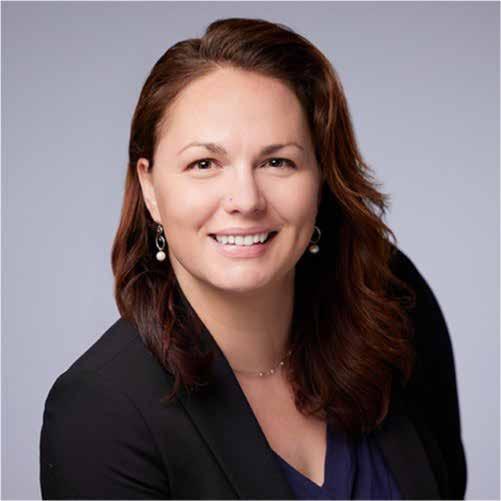
JACQUELINE HOUSER
Jacqueline E. Houser is a thoughtful counselor and proactive problem solver. Jacqueline has extensive experience representing employers of all sizes in litigation in both state and federal court in the Pacific Northwest.
Jacqueline also provides advice and counseling to employers on an extensive variety of workplace issues, including best practices for avoiding litigation and on employee-related policies and procedures, including performing handbook analysis for compliance with state and federal laws, and advising on discipline and termination decisions.
SPEAKER PROFILES
12
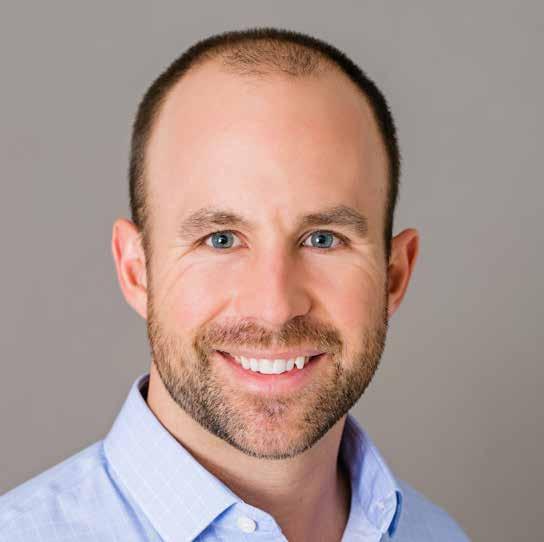
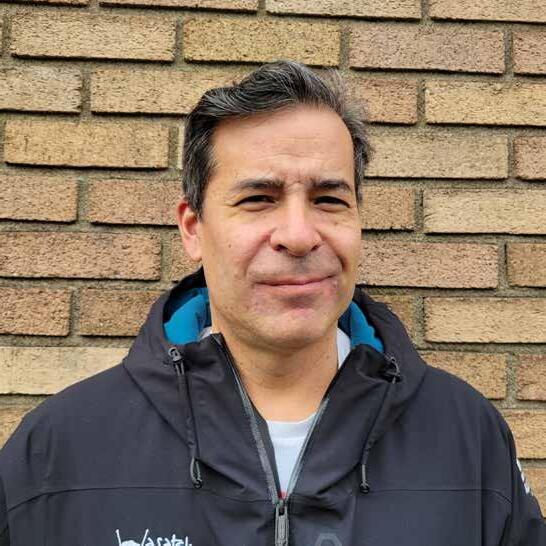

GARRETT MCGINN
Garrett McGinn is a Partner with DigiStream Investigations’ R&D Department and its complex investigations company UpStream Intelligence. He has over 17 years of investigative experience and is a Certified Fraud Examiner, a licensed Private Investigator and holds a master’s degree in Transatlantic Relations from Jagiellonian University in Krakow Poland, and a bachelor’s degree in International Relations from the University of California, Davis. Mr. McGinn trained in advanced surveillance tactics in the United Kingdom, achieving a Level III Advanced Award in Foot & Mobile Surveillance. Prior to his employment with DigiStream in 2006, Mr. McGinn was a Research Analyst for Glass, Lewis & Co., an institutional investment advisory firm.
CHET NAKADA
Chet Nakada is a Training and Development Specialist with the State of Oregon Bureau of Labor and Industries Employer Assistance program. A University of Oregon graduate, he has been with BOLI for over twenty years. He conducts employer seminars and helps employers comply with Oregon’s Wage and Hour and Civil Rights Laws. Prior to working for Employer Assistance he worked as a Senior Civil Rights Investigator and prosecuted cases for the Agency in the Administrative Prosecution Unit.
DAN SCHANZ
Dan began his legal career as a Law Clerk for the Honorable Judge Edmonds at the Oregon Court of Appeals. In 1996, he joined Spooner & Much, P.C. In 2013, he and Jim Lawler formed Schanz Lawler, P.C. Dan has tried multiple jury trials and hundreds of arbitrations. He also represents clients before the Oregon Court of Appeals and the Oregon Supreme Court. Dan was admitted to practice in the State Courts of Michigan in 1994. His practice is now exclusively in the State Courts of Oregon and the U.S. Federal District Court.
Dan has also been a speaker on a number of legal topics. He has authored various articles on defense of first-party cases and personal injury medical issues. Since 1996, Dan has been a proud member of the Oregon Association of Defense Counsel (OADC), which is an organization of approximately 700 Oregon attorneys who defend individuals and businesses in civil litigation. He served as the President of OADC for 2014. He also serves on the Board for the Union Gospel Mission in Salem, which provides shelter and food for the homeless.
SPEAKER PROFILES
13
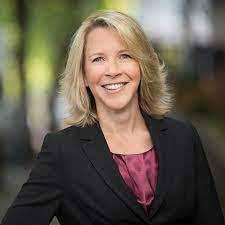
KATIE SMITH
Katie Smith received her Juris Doctorate degree from St. Mary’s University School of Law in San Antonio, Texas in 2003 and obtained her law license in the State of Oregon. She began her legal career as a JAG in the United States Air Force, stationed in Colorado where she was both a criminal prosecutor and served as general legal counsel for the base she was assigned. Katie returned to the Pacific Northwest in 2007 and began her practice as a civil defense litigator, specializing in construction defect litigation and other casualty and business disputes. Over the course of her career, she worked as staff counsel for an insurance company, managed her own practice for 7 years and served as managing partner for a firm with offices in Oregon and Washington, before joining Walhood Law Group, LLC.
With her extensive experience as a litigator involving complex construction defect claims, casualty claims and business disputes, along with her ability to view even the most challenging of cases with a lens towards compromise and resolution, Katie Smith also provides mediation and arbitration services.
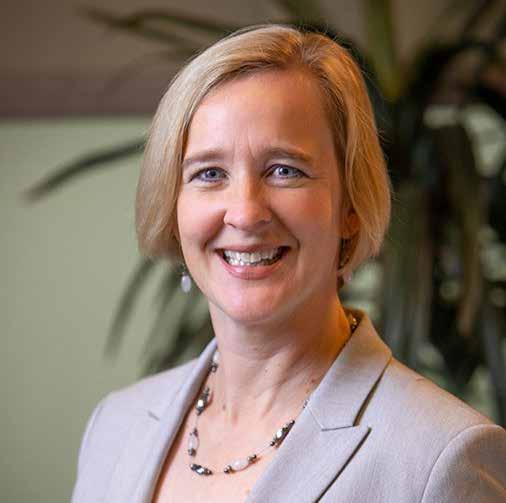
VICKI SMITH
Vicki is a lead trial lawyer who regularly handles and tries cases involving insurance coverage, civil rights, product and warranty claims, professional liability claims, personal injury and wrongful death claims, and other commercial disputes. She advises and represents individuals, businesses, and insurance clients in and outside of litigation throughout all Oregon and Washington.
Martindale-Hubbell assigned Vicki an AV® Peer Review Rating — the highest rating an attorney can obtain for legal ability and ethical standards. Best Lawyers in America lists Vicki in the category of Insurance Litigation. She has also been listed as an Oregon Super Lawyer for 2020 - 2022.
SPEAKER PROFILES
14
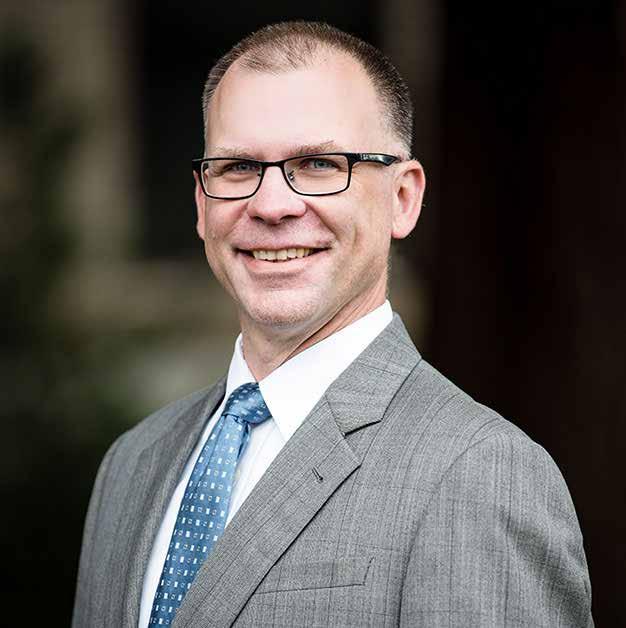
GRANT STOCKTON
Grant is a civil attorney who focuses on defending complex liability claims on behalf of businesses, professionals and insurers in Oregon and southwest Washington. His caseload is focused on the defense of professional malpractice and catastrophic injuries, but also includes matters of general liability. In addition to litigated matters, Grant represents professional clients before state administrative agencies and professional licensing boards.
Grant is peer review rated AV Preeminent by Martindale-Hubble. He currently serves on the Board of Directors for the Oregon Association of Defense Counsel, and is the Board Liaison to the Professional Liability Practice Group. With the OADC, Grant is also a frequent contributor to the quarterly publication and CLE speaker. He has been a guest presenter for professional organizations, business groups and insurers.
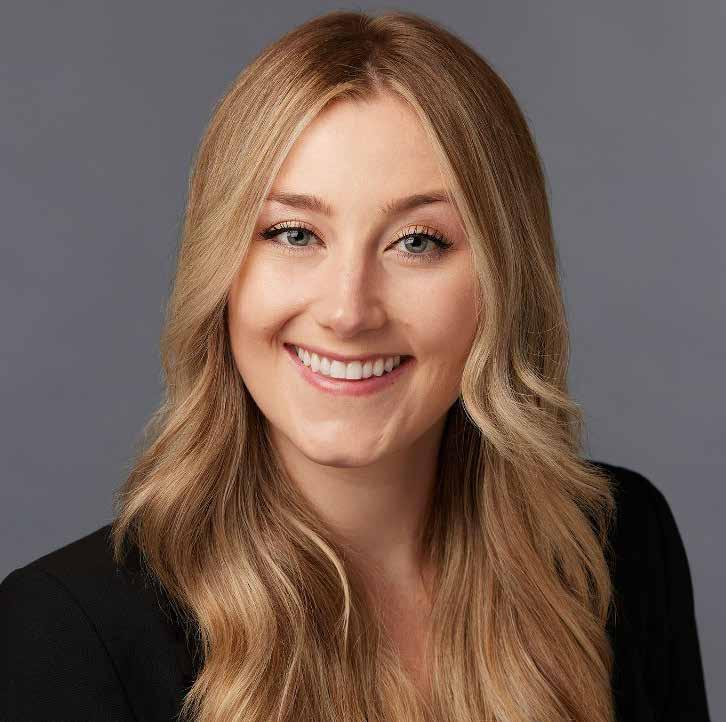
RACHEL TIMMINS
Rachel is an associate in Tonkon Torp’s Labor & Employment Practice Group. She represents employers in a variety of employment-related disputes including discrimination, harassment, retaliation, leave issues, disability issues, and wage and hour claims. Rachel also represents clients in labor matters both in front of the NLRB and the Oregon Employee Relations Board, and at the table negotiating collective bargaining agreements.
Rachel is known for her light-hearted and positive personality and her ability to quickly engage with and understand a client’s business, enabling her to offer tailored advice and solutions.
Before joining Tonkon Torp, Rachel was an attorney with Ogletree Deakins. During law school, Rachel served as a judicial extern with the Hon. Stacie F. Beckerman at the U.S. District Court for the District of Oregon. She also interned at Adidas. Rachel is a cum laude graduate of Lewis & Clark Law School, where she was lead article editor at the Lewis & Clark Law Review.
SPEAKER PROFILES
15
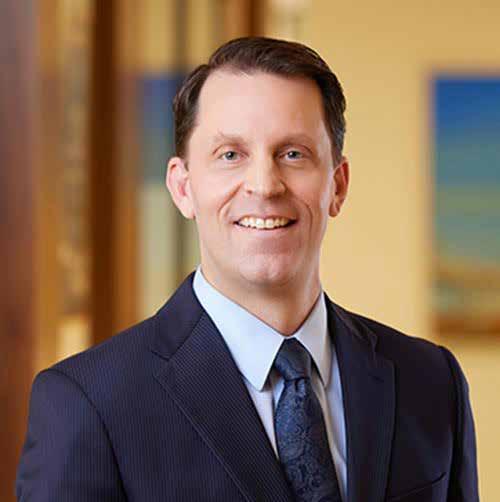
PETER TUENGE
Peter is a trial lawyer and an advocate for medical and dental professionals in all forums. He is a past President of the Oregon Association of Defense Counsel, the state-wide association of Oregon lawyers who practice civil litigation defense. Peter is regularly selected by his peers as a “Super Lawyer®” and recognized nationally as one of the “Best Lawyers in America.®” In 2020, Peter was inducted into the American Board of Trial Advocates, a highly selective national association of experienced trial lawyers and judges. He has obtained defense jury verdicts on behalf of the leading healthcare systems in Oregon and Washington, including PeaceHealth, Legacy Health, Samaritan Health Services, and Asante in significant medical cases with the plaintiffs asking the jury for six, seven, and eight figures. Peter has won jury trials for emergency medicine doctors, neurologists, oral surgeons, dentists, and nurses.
Peter graduated from Gonzaga University, and then from the University of Oregon School of Law (Order of the Coif – top 10%). While in law school, he served on the Moot Court Board and as an Articles Editor for the Oregon Law Review. Following law school, Peter clerked for the Honorable Richard B. Sanders of the Washington Supreme Court.

RICHARD VANGELISTI
Richard Vangelisti is a full-time mediator based in Oregon. His mediation practice is focused on personal injury, employment, and insurance matters. Richard has mediation training from the National Judicial College, the United States District Court for the District of Oregon, and the Harvard Law School Program on Negotiation. Richard is a former President of the Multnomah Bar Association and the Oregon Chapter of the Federal Bar Association.
SPEAKER PROFILES
16
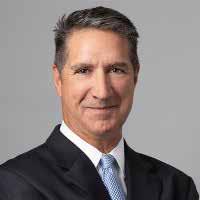
GORDON WELBORN
After a 35 year career trying cases throughout Oregon and Washington, Welborn retired from Hart Wagner LLP at the end of 2022 and began a full time mediation and arbitration practice.

PETER WILLCOX-JONES
Peter Willcox-Jones is an experienced trial lawyer who represents business clients in complex civil litigation related to bid and contract disputes, Construction Contractor Board disputes, commercial disputes, trespass/nuisance, catastrophic injuries, product liability, OSHA defense, and general tort/casualty litigation.
Peter works with clients to develop agreements specific to their needs, as well as aiding in the areas of risk analysis, management and risk shifting, insurance review and analysis, lien foreclosures, lease disputes, and employee related issues.
SPEAKER PROFILES
17
Gaining Trial Experience for Young Attorneys
PRESENTED BY:
Deschutes County Judges Beth Bagley, and Randy Miller & Multnomah County Judge Ben Souede
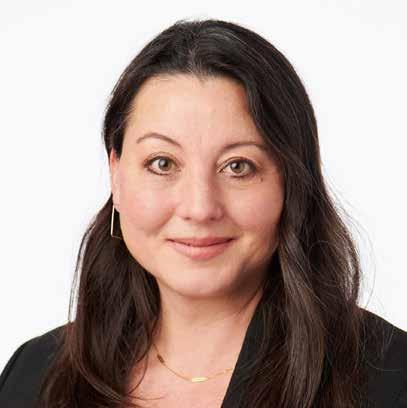


Friday, June 14, 2024 8:00am – 9:00am
2024 OADC ANNUAL CONVENTION CONTINUING LEGAL EDUCATION GUIDEBOOK
OADC Summer 2024 Conference
Sunriver, Oregon
Good n’ Plenty Tips and Tales from the Bench
Presented by,
Honorable Beth Bagley, Honorable Randy Miller, and Honorable Benjamin Souede
Three experienced Circuit Court Judges will share tips, tales and wisdom from the bench on a range of topics, including: professionalism, expert witnesses, technology and Chuck Norris jokes if we don’t know the answer when we get around to the Q & A portion.
I. So you’ve been ambushed . . . .
a. Expert “discovery” in Oregon state courts
i. Expert discovery? Bless your heart….
ii. The Declaration (ORCP 47E)
iii. The IME (ORCP 44)
A153970, Opinion - Opinions Oregon Court of Appeals - State of Oregon Law Library Digital CollecAon (oclc.org)
oregonlegislature.gov/bills_laws/ors/anr047.html
PLO21-1.pdf
Stevens v. Czerniak, 336 Or 392, 400-05 (2004)
b. Expert witness testifying at trial
i. Preparing your witness pre-trial
ii. Qualifying your witness as an expert at trial (OEC 104, 702-705)
iii. Effective direct examination
iv. Effective cross examination (OEC 706)
ORS 40.030 – Rule 104. Preliminary ques=ons (public.law)
ORS 40.410 – Rule 702. Tes=mony by experts (public.law)
ORS 40.415 – Rule 703. Bases of opinion tes=mony by experts (public.law)
ORS 40.425 – Rule 705. Disclosure of fact or data underlying expert opinion (public.law)
ORS 40.430 – Rule 706. Impeachment of expert witness by learned trea=se (public.law)
II. Professionalism:“Poise counts!”
19
a. Preparation: preparing yourself, preparing the court
b. Interactions with the court, staff and opposing counsel before and during trial
c. Technology
Courtroom Decorum, Ethics and Professionalism During the Age of Zoom: A View From the Bench (americanbar.org)
Statement of Professionalism (uscourts.gov)
III. Our top 3 cautionary tales and tips
IV. Q & A
20
Statement of Professionalism
Adopted by the Oregon State Bar House of Delegates and Approved by the Supreme Court of Oregon effective September 16, 2019
As lawyers, we belong to a profession that serves our clients and the public good. As officers of the court, we aspire to a professional standard of conduct that goes beyond merely complying with the ethical rules. Professionalism is consistent conduct that includes compliance with all ethical rules promulgated by the Oregon Supreme Court, courageous representation of clients, striving for the public good and complying with the following principles in dealing with our clients, opposing parties, opposing counsel, the courts and all others:
• I will promote the integrity of the profession and the legal system.
• I will work to ensure access to justice for all segments of society.
• I will avoid all forms of discrimination.
• I will protect and improve the image of the legal profession in the eyes of the public.
• I will support a diverse bench and bar.
• I will promote respect for the courts.
• I will support the education of the public about the legal system.
• I will work to achieve my client’s goals, while at the same time maintain my professional ability to give independent legal advice to my client.
• I will always advise my clients of the costs and potential benefits or risks of any considered legal position or course of action.
• I will communicate fully and openly with my client, and use written fee agreements with my clients.
• I will not employ tactics that are intended to delay, harass, or drain the financial resources of any party.
• I will always be prepared for any proceeding in which I am representing my client.
• I will be courteous and respectful to my clients, to adverse litigants and adverse counsel, and to the court.
• I will only pursue positions and litigation that have merit.
• I will explore all legitimate methods and opportunities to resolve disputes at every stage in my representation of my client.
• I will support pro bono activities.
Oregon State Bar • 16037 SW Upper Boones Ferry Rd • PO Box 231935 • Tigard, OR 97281-1935 503.620.0222 or toll-free in Oregon 800.452.8260 21
News From the Courthouse Tips From the Bench
Practicing Empathy
by Judge Stephen E. Bushong Multnomah County Circuit Court
“Where’s the heart?
Where’s the soul?
Where’s the empathy, From days of old?”
That line, from the Son Volt song, “Living in the uSA,” written by Jay Farrar, touches on the keys to a fulfilling legal career. My dictionary defines “empathy” as the identification with and understanding of another’s situation, feelings, and motives. Practicing law with empathy essentially means following the golden rule. here are some tips on how to do it.
Motion Practice
After opposing counsel serves you with a pleading, many lawyers analyze it to see whether it makes sense to move to dismiss or strike one or more claims, defenses, or allegations. After doing that, your next step should be to call opposing counsel. Don’t send an email; call. Conferral is required by the rules, anyway, so you might as well call. If you don’t know the other lawyer, introduce yourself before getting down to business. And then discuss your analysis. Don’t just threaten to file a motion if opposing counsel doesn’t agree to amend the pleading. Be prepared to compromise. And don’t file a motion just because you can. Consider whether filing the motion is really in your client’s interests and helps move the case toward resolution. If the pleading is poorly drafted but you understand the gist of the claim or defense, it may be fine to just let it go.
Of course, there may be times when the lawyers ultimately agree to disagree and you’ll end up filing the motion. Or there may be issues - such as a statute of limitations issue - that could be dispositive that you will need to litigate. That’s fine. Practicing law with empathy doesn’t mean that you do not zealously represent your client. It just means that you recognize that the lawyer and client on the other side are human beings who deserve to be treated with respect. remember that your dispositive motion, if meritorious, will be granted even if you give opposing counsel the courtesy of some additional time to respond, if needed.
Discovery
The Oregon rules of Civil Procedure give lawyers plenty of discovery tools to help them resolve disputes through settlement or trial. remember that discovery is a tool, not a weapon. Never push the boundaries of discovery to bludgeon the other side into submission. In many cases, the information that might be discoverable under the rules is far broader than what you really need to prepare for trial. Focus your discovery efforts on
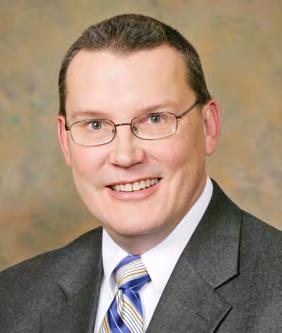
what you need, not on what you think you might be able to get. Similarly, if you are responding to a discovery request, don’t raise every objection that you can think of and refuse to produce any documents until your objections are addressed. It is fine to object to document requests that seek privileged information or are overly broad, but there are usually documents that you can and should produce notwithstanding those objections. So produce them. Opposing counsel might realize after receiving the documents that they have what they need for settlement or trial, thereby avoiding an unnecessary discovery dispute.
Just like you, opposing counsel has other cases, and may be struggling to juggle work demands with the need to deal with childcare, illness, or other personal matters. Their client might be in the same predicament. Practicing law with empathy means understanding that, focusing your discovery efforts on getting what you need when you really need it. It is rarely prejudicial to your client’s interests to give the opposing side a reasonable amount of time to respond to discovery requests, and to schedule depositions for dates that work for everyone. I doubt that anyone ever became a lawyer because they wanted to engage in discovery battles. If you do have a disagreement, confer - as the rules require - and be prepared to compromise.
Trial
Practicing with empathy will make you a better trial lawyer. To understand the other side’s situation, you must think about the case from their perspective and listen carefully to what they say in deposition and at trial. Many trial lawyers only think about the case from their point of view and are so focused on presenting their case that they don’t really hear the other side. During your trial preparation, ask yourself how you would try the case if you were representing the other side. During the trial itself, treat everyone - opposing counsel, witnesses, jurors, court staff, your own assistants - with the utmost respect. remember that jurors and court staff are always watching and listening to you, even when you are off the record.
 by Amanda Nadell, Chair, and Anne Milligan MBA Court Liaison Committee
by Amanda Nadell, Chair, and Anne Milligan MBA Court Liaison Committee
Report from Presiding Judge Judith H. Matarazzo Judge Matarazzo issued a Presiding Judge Order on March 10, ending social distancing effective March 27. Jurors began reporting to the courthouse for jury duty on March 28 for in-person jury selection. This applies to both criminal and civil matters. While remote voir dire allowed the court to safely select the jurors needed for trials during the pandemic, it takes longer and is staff-intensive, and most judges and lawyers prefer in-person jury selection.
Civil and criminal ex parte will continue remotely via phone and video using WebEx, and in person. If you plan on calling in, please make sure any documents are emailed to mul.presiding@ojd.state.or.us the day before your appearance.
Judges have the discretion to hear civil motions either remotely or in the courtroom beginning March 28. Judge Matarazzo encourages attorneys to use the remote method for short matters as opposed to coming to the courthouse.
Masks will continue to be required in the courthouses in Multnomah County, likely through April. Judges will have the discretion to ask someone to temporarily remove their mask.
The new courthouse is set up beautifully for remote testimony and there are two large screens on the wall directly behind the witness box, which is across the room from the jury box. For some witnesses, the parties may consider using the video appearance option as opposed to bringing more people into the courtroom, at least for the next few months as the court transitions to having more people in the space.
More than 30 years ago, Jay Farrar sang with a different band that “we’re all looking for a life worth living.” Isn’t that why we became lawyers in the first place? Practicing law with heart, soul, and empathy will help take you there.
Civil Trials
Three- and four-day civil trials will be held at the East County Courthouse beginning the second week of April.
Courthouse Update from Trial Court Administrator Barbara Marcille reports of COVID-positive cases among the judges, court staff, and others in the courthouses continue to trend downward. The court is optimistic that more people will be present in the courthouses, and that the Central Courthouse will finally be able to operate at full capacity, but recognizes that the end of social distancing will be another challenging transition. There are new judges and court staff as well as many new lawyers who have little to no experience in their roles under “normal” times, and will be learning and adapting to changing business practices and interacting more closely together in unfamiliar physical spaces. Technology in courtrooms will be used differently and will take some practice. With the lifting of social distancing requirements, courthouse operating hours will not change; the Central Courthouse is open to the public Monday through Friday, 7:30 a.m. to 5:30 p.m.
The court just completed interviews for a new hearings referee to be assigned to the high volume dockets, in advance of referee Jon ghastin’s upcoming retirement.
The court is working with the Multnomah County public defense firms to restructure the arraignment process so that lawyers have a more meaningful opportunity to converse with clients prior to arraignment, when decisions about release are being made. Additionally, the criminal arraignment process has been challenged recently due to a significant shortage of public defenders able to take on new
cases. Currently, most people in custody are represented, but as of this report, approximately 90 out-of-custody defendants need attorneys and are still waiting to have one appointed.
The court is continuing its program of education and training in equity, diversity and inclusion. Judges and court staff attended a four-part “opt in” training on interrupting racism, facilitated by rakeem Washington and Kasia rutledge of Engage to Change. The training included building trust and learning to identify and interrupt racism in personal and professional settings.
The court is holding a May training on the Signature Counter Experience, which places an emphasis on the customer, the public, from the moment someone enters the courthouse through every point in the judicial process. A facilitator from the State Courts of Massachusetts provided the first phase of this training for judges and court staff in 2021. The program helps to identify challenges that court staff face while trying to meet the needs of the public and provide them with tools and resources to better serve the public and inspire confidence and trust in the judicial process.
A mural specially commissioned by the regional Arts and Culture Council has been installed in the hallway leading to the Crane room on the second floor of the Central Courthouse. The mural is titled reflections of 2020” and is a collaboration of five artists. In honor of Black history Month, in February placards were placed below the mural with narratives from the artists explaining their concepts and the individuals they featured.
Endnote: The song “Living in the USA” appears on Son Volt’s terrific new album, Electro Melodier, released in 2021. The song “Life Worth Living” appears on Uncle Tupelo’s 1990 album No Depression. Jay Farrar and his childhood friend, Jeff Tweedy, were the creative forces behind Uncle Tupelo. After the band broke up, Farrar formed Son Volt and Tweedy formed Wilco.
10 www.mbabar.org Multnomah Lawyer
22
Professionalism in the Courtroom:
By following the principles of civility and respect, lawyers will enhance their professionalism, as well as the dignity of courtroom proceedings.
Do:
Don’t:
Be prepared for your participation in any court conference or proceeding.
Wear appropriate courtroom attire when appearing in court.
Advise your clients on how to dress appropriately for any scheduled court appearance.
Be on time for all court proceedings. The best practice is to arrive at least five minutes in advance of the scheduled time and check in with the court staff.
If you are going to be late, call the courtroom so those who are waiting are properly informed.
Turn your cell phone and all other electronic devices off or to silent mode before entering a courtroom.
Answer questions from the judge directly and forthrightly.
Be courteous when addressing the judge and opposing counsel.
Treat court personnel with the same respect you would show the judge.
Begin any argument on the record before the judge or jury by saying, “May it please the court.”
Stand whenever you address the judge in the courtroom.
Show all exhibits to opposing counsel before showing it to a witness.
Ask the judge’s permission before approaching a witness during trial or before publishing an exhibit to the jury during an examination.
Speak clearly and enunciate when addressing the judge or a witness to make a clear record.
Agree to stipulate to facts that are not in dispute if they will not adversely affect your client’s interests.
Inform the judge in advance of any delays in the scheduling of witnesses.
Be accurate when setting forth pertinent facts and rules of law.
Bring to the judge’s attention any possible ethics issues as soon as you become aware of it.
Immediately verify the availability of necessary participants and witnesses after a date for a hearing or trial has been set, so you can promptly notify the judge of any problems.
During final argument, be circumspect when summarizing testimony that contains profane words.
Make ad hominem remarks to opposing counsel or be sarcastic in either your oral arguments or written briefs.
Raise your voice when making an objection in a court proceeding or otherwise engage in argumentative behavior.
Make any speaking objections during trial.
Interrupt opposing counsel or the judge.
Argue with the judge or express discontent after the judge has ruled on an objection or other issue.
Tell the judge that he or she has committed a reversible error.
Tell the judge that another judge has ruled a different way without providing a copy of the other judge’s written opinion.
Display anger in the courtroom.
Make facial objections during testimony or during arguments by the opposing counsel.
Bring a beverage to the trial table unless it is in a non-descript glass or cup and only if you determined that the judge does not object to a beverage on the trial table.
Lean or sit on the edge of the trial table, jury box, or any other furniture or fixture in the courtroom.
Move freely around the courtroom once a proceeding is underway without obtaining permission from the judge.
Celebrate or denounce a verdict as it is delivered. Counsel should also advise clients and interested spectators not to do so.
Dos and Don’ts
23
Mental Health and Substance Abuse
PRESENTED BY:
Kirsten Blume, Attorney Counselor Associate, Oregon Attorney Assistance Program
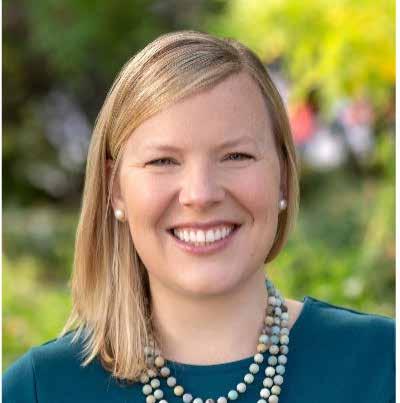
Friday, June 14, 2024 9:05am – 10:05am
LEGAL EDUCATION
2024 OADC ANNUAL CONVENTION CONTINUING
GUIDEBOOK

Oregon Association of Defense Counsel June 14th, 2024
Kirsten Blume, Attorney Counselor Associate
Serving Oregon Lawyers, Judges and Law Students • oaap.org • 503.226.1057
to Reduce Stress
Lawyer Well-Being: Tools
& Secondary Trauma
25


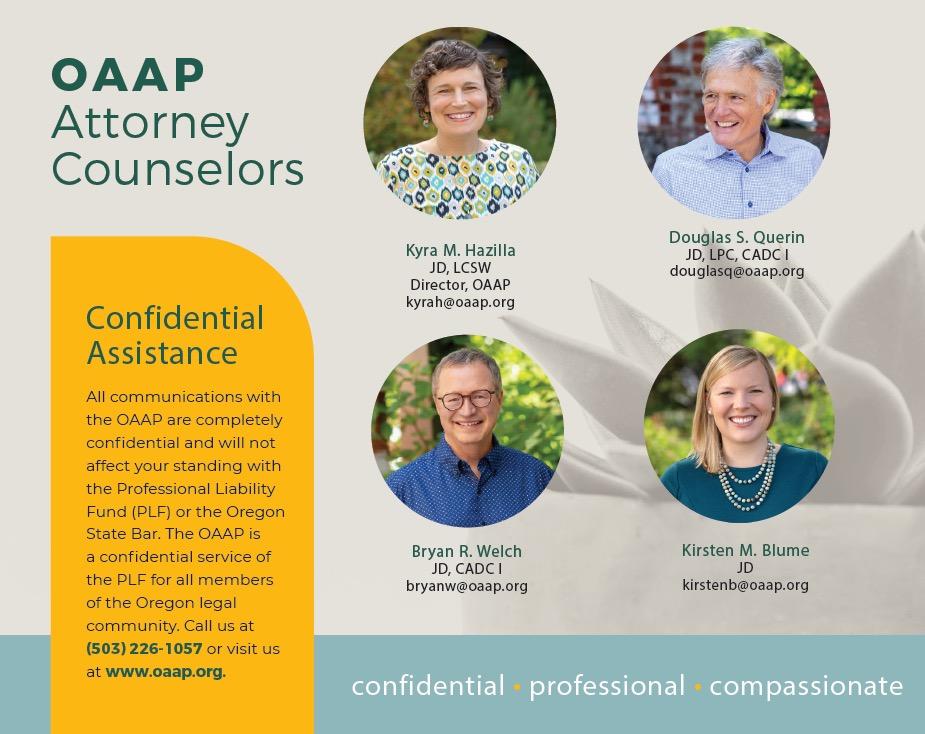

Helping Oregon Lawyers, Judges and Law Students Since 1982 503.226.1057 www.oaap.org 26

Where Are We Going?

Lawyer Well-Being
What is Stress, Secondary Trauma, Burnout, & Problematic Substance Use?
What Can We Do About It?
27

Grounding Breath
28


Lawyer Well-Being
29
What we know about lawyers

• Significant levels of stress (23%), anxiety (19%) and depression (28%) – 2 to 3 times higher than the general population.

• Hazardous, harmful, or potentially dependent drinking at 20% - nearly twice the rate of the general population.
• Rates highest among lawyers under 30 and new lawyers.
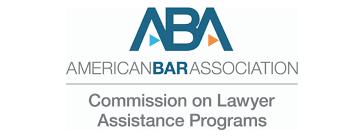
30
Law is the Loneliest Profession Research on Lawyers and Loneliness

Lawyer Personality
31
Reasons For Not Seeking Help

“I’m smart. I don’t need anyone’s help. I can fix this myself.”
“I need to be strong. I can’t show ‘weakness’ to colleagues, clients, family.” “What if the Bar finds out? Employers?”

32
THE ALL-IMPORTANT REPUTATION.
“There’s a common misconception that perfection leads to a good reputation. The truth is that a good reputation is built on resilience, honesty, reliability and hard work. Projecting an invulnerable veneer (portraying to clients and colleagues that you have it all worked out and you possess no weaknesses) may seem like a useful strategy to win clients and impress others, but it is a very harmful tactic when it comes to your mental and emotional well-being.
Whenever we pretend to be something that we know ourselves not to be, we automatically separate ourselves from others. The only way to establish real human connection is to know and be known by someone else, including our vulnerabilities, failures, strengths and dreams.”
Shawn Healy, PhD - Lawyer Loneliness: You’re Not Alone in Feeling Alone www.attorneyatwork.com
33
Let’s Discuss …

• What are your main stressors?
• How do these stressors impact you mentally and physically?

34



The Impact of Stress, Secondary Trauma, Burnout, & Problematic Substance Use On Our Minds & Bodies
35

36

What’s Happening With Chronic Stress & Trauma?
Prefrontal Cortex Executive Functioning
Concentration/Focus
Thought Organization Processing Information Holding a Conversation Emotional Regulation

Amygdala
Fight, Flight, Freeze, Fawn
Hippocampus Memory Center
37
A Trauma Informed Framework
Shift away from thinking "What is wrong with you?"
Toward thinking "What has happened to you?"
Medical Model: You are sick.
Criminal Model: You are bad or what you did is bad.
Trauma-informed Model: You suffered an injury.

38

Vicarious Trauma

“The expectation that we can be immersed in suffering and loss daily and not be touched by it is as unrealistic as expecting to be able to walk through water without getting wet.”
-Dr. Rachel Remen
39
Trauma Exposure Response


Chronic Exhaustion/Physical Ailments


Feeling Helpless and Hopeless A Sense That One Can Never Do Enough Hypervigilance



Diminished Creativity



Inability to Embrace Complexity Minimizing




Inability to Listen/Deliberate Avoidance




Anger and Cynicism








Dissociative Moments Sense of Persecution Guilt Fear


Inability to Empathize/Numbing Addictions


Grandiosity: An Inflated Sense of Importance Related to One’s Work

 - Lara van Dernoot Lipsky and Burk, Trauma Stewardship
- Lara van Dernoot Lipsky and Burk, Trauma Stewardship
40
Traumatized Organizations & Environments
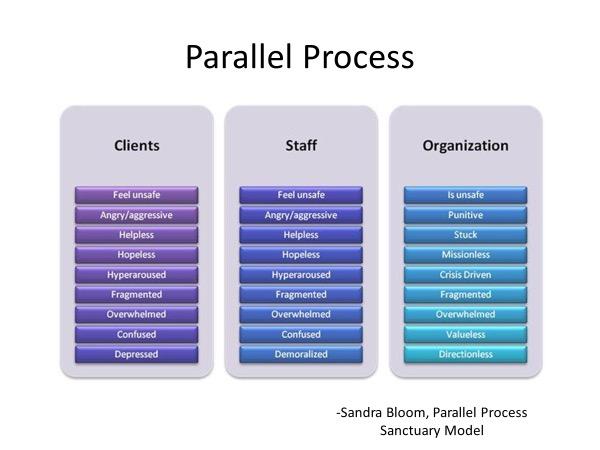
41



Trauma Mastery



42
Is it burnout?
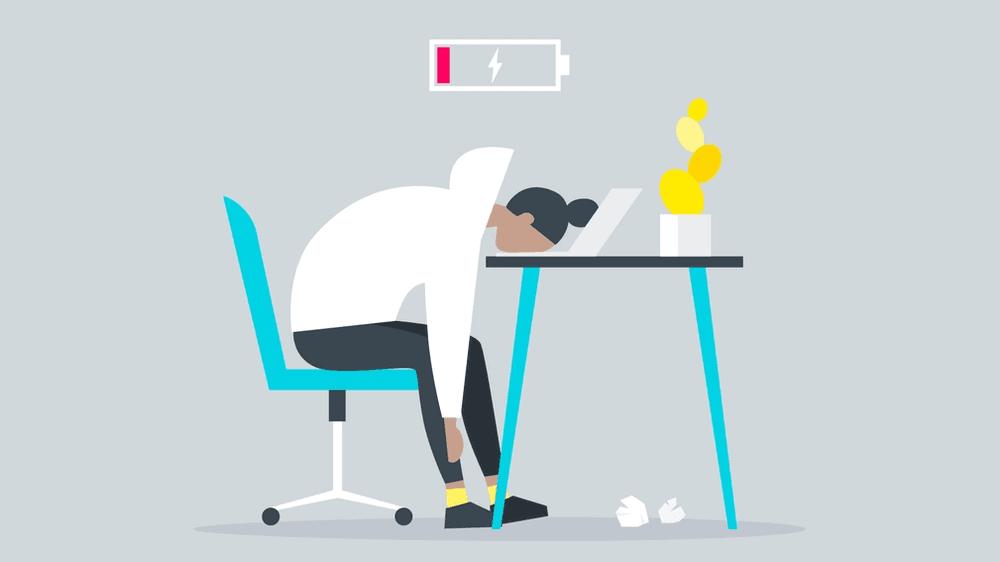
Emotional Exhaustion
43
Cynicism Low Personal Accomplishment Opposite of Engagement
Institute for Well-Being in the Law - Burnout
Study
2021 study by IWIL:
• 771 lawyers – 63% burnout
• 290 support staff – 51% burnout
• Work environment most related to burnout

44

Problematic Substance Use
What
worked for some time, might not work anymore


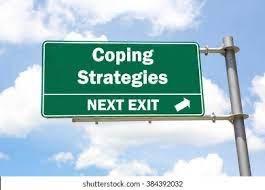
45

Myth: Reality:
Using alcohol and drugs is a choice – addiction is a character flaw.
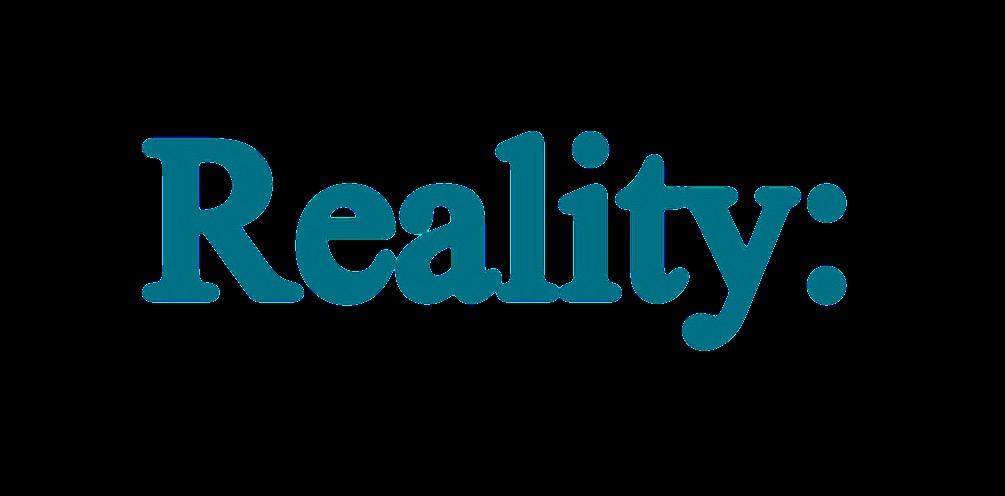
Substance use changes the brain over time in such a way as to significantly impair a person’s ability to choose not to use.
46
Reducing Stigma
People are more likely to ask for help when they know someone who has had a similar experience.
• Be knowledgeable. Understand mental health, stress, and substance use.
• Be vulnerable. Normalize struggles and share successes.
• Conversations with Colleagues. You can do it (but there’s also help if you’d like).
• Describe what you’ve observed with compassion, care, & concern.

47
Let’s Discuss …

• How do you see trauma, secondary trauma, burnout, or problematic behavior impacting you and/or your colleagues?
• What barriers do you have in addressing these issues?
• What barriers do you have being vulnerable with your colleagues and/or at work?
• What would you like it to look like instead?
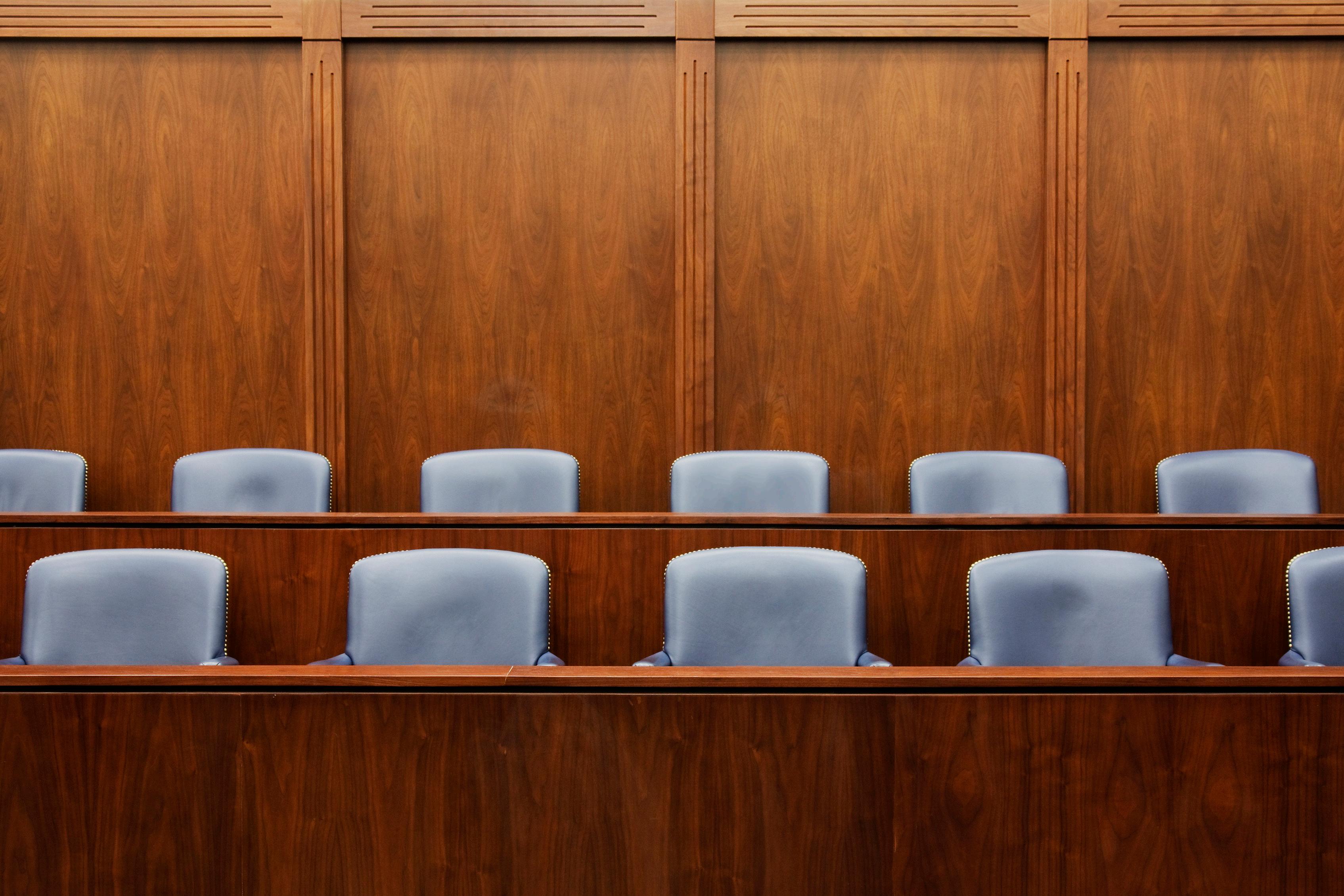
48

What Can We Do About It?
49
Organizational Care
Addressing stress, burnout, and secondary trauma as an organization is crucial
Mental Health America Suggestions for improving organizational care:
• Flexibility
• Employee autonomy
• Input into decisions
Additional Factors:
• Reflective practices
• Peer support / relationship building / communication
• Trust and transparency – explain the why
• Trauma-informed training & supervision
50

Trauma Informed Approach & Services

51

Safety Trustworthiness and Transparency Peer support Collaboration and mutuality Empowerment, voice, and choice Cultural, Historical, and Gender Issues A Trauma-Informed Lens: 6 Key Principles http://www.samhsa.gov/nctic/trauma-interventions 52
Professional Quality of Life Scale (ProQOL)
30 item self-assessment measure
Compassion Satisfaction &
Compassion Fatigue
Compassion Fatigue has two subscales:
Burnout
Secondary Trauma
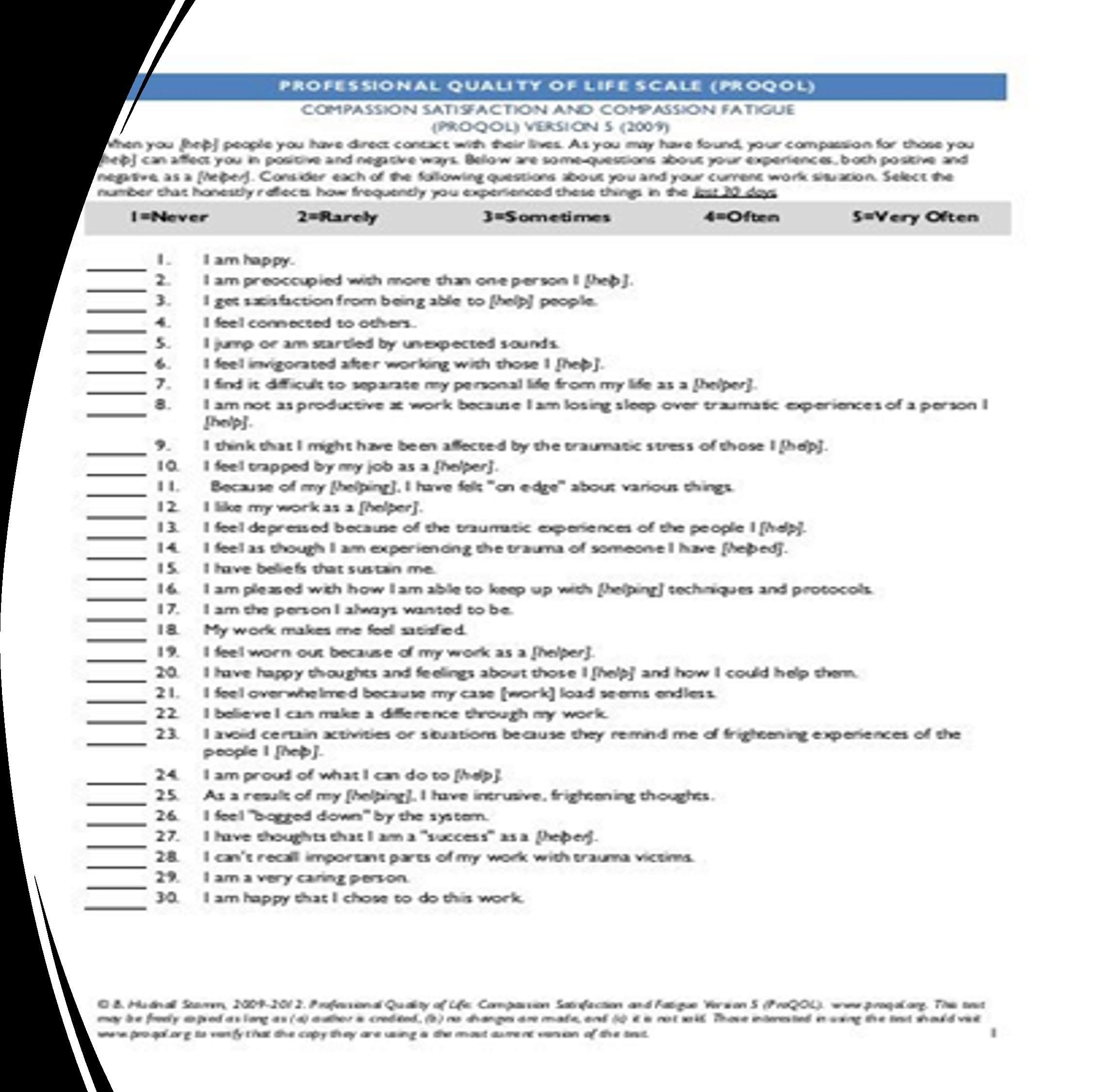

www.proqol.org 53
Personal Well-Being
• Addressing our Systems & Culture: Collectively engaging with others doing so
• The Basics: Sleep, nutrition, exercise
• Use healthcare resources: Doctor appointments, mental health counselors
• Connection & Relationships
• Mindfulness and Meditation: Reduces reactivity, increases productivity
• Remembering to Have Fun
• What works for you?
Journaling, reading, exercise, therapy, music, dance, getting outdoors
54
Sleep Hygiene & Help



55
The importance of relationship & connection

56
Low-Impact Debriefing….
• Helps reduce symptoms of trauma exposure.
• Increases social support and reduces isolation.
• Normalizes the emotional responses.
• Reduces sliming and contagion.
https://www.tendacademy.ca/wp-content/uploads/2021/01/low-impact-2-pager-1.pdf
1. Self Awareness 2. Fair Warning 3. Consent 3. Limited Disclosure Low Impact Debrief
57
Super Communication: Communicating to Understand
• Listen with Intention
• Ask about the underlying value –“what did that mean to you?” “why is/was this important to you?”
• Try to repeat back what they said in their own words
• Check-In: “Did I get that correctly?”

58
Meditation & Mindfulness –Present Moment Awareness



59

Playfulness Connection
Flow
60
Let’s Discuss …

• What has worked best for you to take care of yourself?
• What has worked best for you to take care of your colleagues, your team, and the system you work within?
• What’s worked best for you to build authentic and vulnerable connection with your colleagues?

61
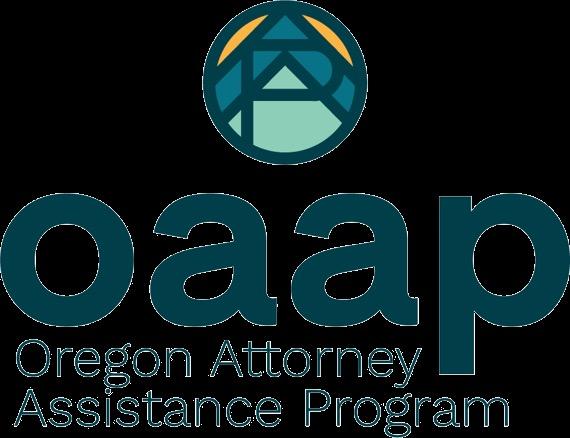
www.oaap.org
Thank You! 503-226-1057
62
Supreme Court Update
PRESENTED BY:
Thomas H. Dupree, Partner, Gibson Dunn

Friday, June 14, 2024
10:20am – 11:50am
2024 OADC ANNUAL CONVENTION CONTINUING LEGAL EDUCATION GUIDEBOOK
U.S. Supreme Court Round-Up
October Term 2023
The Supreme Court Round-Up previews upcoming cases, summarizes opinions, and tracks the actions of the Office of the Solicitor General. Each entry contains a description of the case, as well as a substantive analysis of the Court’s actions.
Cases Scheduled for Oral Argument
OCTOBER CALENDAR
1. Pulsifer v. United States, No. 22-340 (8th Cir., 39 F.4th 1018; cert. granted Feb. 27, 2023; argued Oct. 2, 2023). The Question Presented is: Whether, in order for a defendant to qualify for an exception from a statutory minimum sentence under 18 U.S.C. § 3553(f)(1), a court must find that the defendant does not have more than four criminal history points (excluding any criminal history points resulting from a one-point offense); does not have a prior threepoint offense; and does not have a prior two-point violent offense.
64
Decided Mar. 15, 2024 (601 U.S. __). Eighth Circuit/Affirmed. Justice Kagan delivered the opinion of the Court (Gorsuch, J., joined by Sotomayor and Jackson, JJ., dissenting). The safety valve provision of the federal sentencing law, 18 U.S.C. § 3553(f), permits defendants convicted of drug offenses an escape from mandatory minimums if five conditions are met. One of those conditions concerns the defendant’s criminal history. A defendant qualifies for relief under this provision if the court “finds at sentencing” that “the defendant does not have” more than four criminal history points, a prior threepoint offense, and a prior two-point violent offense. The courts of appeals had split over whether this provision applies if the defendant does not have the combination of these three elements (the defendant-friendly reading) or does not have every one of those elements (the government’s reading). Resolving the split, the Court adopted the government’s view and held 6–3 that a defendant is eligible for safety valve relief only if he “does not have” all three items listed that is, he does not have four criminal history points, does not have a prior three-point offense, and does not have a prior two-point violent offense. While the defendant’s interpretation of the statute was grammatically plausible, the Court concluded it was foreclosed by statutory context. The defendant’s reading, the Court reasoned, would render the four criminal history point criterion surplusage, as any defendant with a three-point offense and a two-point violent offense would always have more than four criminal history points. By contrast, under the interpretation embraced by the Court, each criterion does independent work disqualifying offenders based on particularly concerning aspects of their criminal history. The Court also dismissed the dissent’s invocation of the rule of lenity because, when read in context, the statute was not genuinely ambiguous
2. Consumer Financial Protection Bureau v. Community Financial Services Association of America, No. 22-448 (5th Cir., 51 F.4th 616; cert. granted Feb. 27, 2023; argued Oct. 3, 2023). The Question Presented is: Whether the court of appeals erred in holding that the statute providing funding to the Consumer Financial Protection Bureau (CFPB), 12 U.S.C. § 5497, violates the Appropriations Clause, U.S. Const. Art. I, § 9, Cl. 7, and in vacating a regulation promulgated at a time when the CFPB was receiving such funding.
3. Acheson Hotels, LLC v. Laufer, No. 22-429 (1st Cir., 50 F.4th 259; cert. granted Mar. 27, 2023; argued Oct. 4, 2023). The Question Presented is: Whether a self-appointed Americans with Disabilities Act “tester” has Article III standing to challenge a place of public accommodation’s failure to provide disability accessibility information on its website, even if she lacks any intention of visiting that place of public accommodation.
65
Decided Dec. 5, 2023 (601 U.S. 1). First Circuit/Vacated and remanded. Justice Barrett delivered the opinion of the Court (Thomas, J., and Jackson, J., separately concurring in the judgment). Plaintiff Deborah Laufer ran online searches to identify hotels that failed to provide accessibility information and would then sue them for failure to comply with the ADA. After the Court granted certiorari to decide whether Laufer who has no intention of staying in those hotels had Article III standing, Laufer voluntarily dismissed her pending suits with prejudice and filed a suggestion of mootness in the Supreme Court. Although the Court acknowledged that it could resolve the two jurisdictional issues standing and mootness in any order it chose, the Court dismissed on mootness grounds without reaching the standing question on which it granted review. Unlike the majority, which concluded that Laufer had not engaged in strategic litigation behavior by voluntarily dismissing her claims, Justice Thomas “would not reward Laufer’s transparent tactic for evading . . . review” and would instead have held that Laufer lacked standing. As Justice Thomas reasoned, Laufer had not asserted a violation of her own rights, but had rather “cast[] herself in the role of a private attorney general” who sued to enforce compliance with the law. Separately concurring in the judgment, Justice Jackson urged the Court to reconsider its practice, under United States v. Munsingwear, Inc., 340 U.S. 36 (1950), of vacating a lower court judgment when a case has become moot on appeal, an invitation the majority expressly declined. Rather than automatically vacate a judgment in these circumstances, Justice Jackson would engage in “a particularized assessment of whether the conditions and circumstances of the particular case warrant vacatur of the lower court’s judgment.”
4. Great Lakes Insurance SE v. Raiders Retreat Realty Co., LLC, No. 22-500 (3d Cir., 47 F.4th 225; cert. granted Mar. 6, 2023; argued Oct. 10, 2023). The Question Presented is: Whether, under federal admiralty law, a choice of law clause in a maritime contract can be rendered unenforceable if enforcement is contrary to the “strong public policy” of the state whose law is displaced.
Decided Feb. 21, 2024 (601 U.S. 65). Third Circuit/Reversed and remanded. Justice Kavanaugh delivered the opinion of the Court (Thomas, J., concurring). The Court held that choice-of-law provisions in maritime contracts are presumptively enforceable as a matter of federal maritime law This presumption facilitates maritime commerce which “traverses interstate and international boundaries”—by discouraging forum-shopping and reducing uncertainty about which jurisdiction’s law governs potential disputes The Court recognized that the presumption of enforceability admits of “narrow” exceptions. For example, “courts should disregard choice-of-law clauses in otherwise valid maritime contracts when the chosen law would contravene a controlling federal statute” or the contracting parties “can furnish no reasonable basis for the chosen jurisdiction.” The Court declined, however, to create a new exception that would relieve the contracting parties of a choice-of-law provision when it would contravene the public policy of the state with the “greatest interest” in the contract dispute. “A federal presumption of enforceability would not be much of a presumption if it could be routinely swept aside based on 50 States’ public policy determinations.” The Court concluded that the inevitable “disuniformity” that would result from such an exception “would undermine the fundamental purpose of choice-of-law clauses in maritime contracts: uniform and stable rules for maritime actors.”
66
5. Murray v. UBS Securities, LLC, No. 22-660 (2d Cir., 43 F.4th 254; cert. granted May 1, 2023; argued Oct. 10, 2023). The Question Presented is: Whether, under the burden-shifting framework that governs Sarbanes-Oxley cases, a whistleblower must prove his employer acted with a “retaliatory intent” as part of his case in chief, or is the lack of “retaliatory intent” part of the affirmative defense on which the employer bears the burden of proof.
Decided Feb. 8, 2024 (601 U.S. 23). Second Circuit/Reversed and remanded. Justice Sotomayor delivered the opinion of the Court (Alito, J., joined by Barrett, J., concurring). The Sarbanes-Oxley Act’s whistleblower-protection provision provides that no covered employer may “discriminate against an employee in the terms and conditions of employment because of” protected whistleblowing activity. 18 U. S. C. § 1514A The Court held that “retaliatory intent” on the part of an employer, understood to mean “something akin to animus,” is not a required element of a whistleblower claim The Court reasoned that, as ordinarily understood, to “discriminate against an employee” requires only a disparity in treatment, not animus. The Court further stated that requiring a showing of retaliatory intent would be inconsistent with the statutorily mandated burden-shifting framework, under which the plaintiff must first show that his protected activity “was a contributing factor in the unfavorable personnel action alleged in the complaint.” The burden then shifts to the employer to show that it “would have taken the same unfavorable personnel action in the absence of” the protected activity. The Court rejected concerns that the absence of a retaliatory intent requirement would sweep in innocent employers, explaining that liability could be avoided based on an affirmative showing that the same unfavorable personnel action would have been taken in the absence of the protected behavior. This “same-action” defense, which must be established by clear and convincing evidence, will prove a critical line of defense for employers in future cases. Further emphasizing that the statute provides guardrails for employers, Justice Alito, joined by Justice Barrett, wrote separately to underscore that the Court’s “rejection of an ‘animus’ requirement does not read intent out of the statute.” A whistleblower plaintiff “must still show intent to discriminate.”
6. Alexander v. South Carolina State Conference of the NAACP, No. 22-807 (D.S.C., 649 F. Supp. 3d 177; direct appeal; probable jurisdiction noted May 15, 2023; argued Oct. 11, 2023). The Questions Presented are: (1) Whether the district court erred when it failed to apply the presumption of good faith and to holistically analyze South Carolina Congressional District 1 and the South Carolina General Assembly’s intent; (2) Whether the district court erred in failing to enforce the alternative map requirement in this circumstantial case; (3) Whether the district court erred when it failed to disentangle race from politics; (4) Whether the district court erred in finding racial predominance when it never analyzed District 1’s compliance with traditional districting principles; (5) Whether the district court clearly erred in finding that the General Assembly used a racial target as a proxy for politics when the record showed only that the General Assembly was aware of race, that race and politics are highly correlated, and that the General Assembly drew districts based on election data; and (6) Whether the district court erred in upholding the intentional-discrimination claim when it never even considered whether let alone found that District 1 has a discriminatory effect.
67
7. Culley v. Marshall, No. 22-585 (11th Cir., 2022 WL 2663643; cert. granted Apr. 17, 2023; argued Oct. 30, 2023). The Question Presented is: Whether courts should apply Mathews v. Eldridge, 424 U.S. 319 (1976), or Barker v. Wingo, 407 U.S. 514 (1972), to determine whether due process requires a post-seizure, prejudgment hearing to challenge the government’s retention of property a retention hearing during a civil forfeiture proceeding.
Decided May 9, 2024 (601 U.S. __). Eleventh Circuit/Affirmed. Justice Kavanaugh delivered the opinion of the Court. (Gorsuch, J., joined by Thomas, J., concurring) (Sotomayor, J., joined by Kagan and Jackson, JJ., dissenting). Halima Culley loaned her car to her son, while Lena Sutton loaned her car to a friend. Police seized both cars after pulling over the borrowers and finding drugs. Alabama initiated civil forfeiture proceedings, which eventually resulted in the return of the cars to Culley and Sutton pursuant to the State’s “innocent owner” defense. While the forfeiture proceedings were pending, Culley and Sutton each filed suit in federal court alleging that Alabama violated due process by retaining their cars during the forfeiture process without holding preliminary hearings focused on the “probable validity” of the seizures. Although due process requires a timely post-seizure forfeiture hearing when states seek civil forfeiture of personal property, the Court rejected Culley and Sutton’s argument that due process requires states to hold a separate preliminary hearing before the forfeiture hearing. This conclusion followed from United States v. Von Neumann, 474 U.S. 242 (1986), where the Court concluded that “a timely forfeiture proceeding, without more, provides the post-seizure hearing required by due process to protect the plaintiff’s property interest.” The Court nevertheless went on to survey state and federal statutes dating back to the Founding that contained “similar forfeiture provisions” but “lacked anything resembling a separate preliminary hearing.” Indeed, before the late 20th century, no “federal or state statutes” “required preliminary hearings in civil forfeiture cases.” That consistent “historical practice,” the Court concluded, “is weighty evidence that due process does not require such hearings.” Justice Gorsuch, joined by Justice Thomas, concurred to emphasize that many aspects of modern civil forfeiture practice appear to lack historical support and raise significant due process concerns. In dissent, Justice Sotomayor, joined by Justices Kagan and Jackson, noted that civil forfeiture was “vulnerable to abuse” and especially burdened the poor and communities of color. Rather than adopting a categorical rule, Justice Sotomayor would have adopted a “context-specific due process test,” which would “take into account all the component parts of an individual scheme.”
8. Lindke v. Freed, No. 22-611 (6th Cir., 37 F.4th 1199; cert. granted Apr. 24, 2023; argued Oct. 31, 2023). The Question Presented is: Whether a public official’s social media activity can constitute state action only if the official used the account to perform a governmental duty or under the authority of his or her office.
NOVEMBER CALENDAR
68
Decided Mar. 15, 2024 (601 U.S. 187). Sixth Circuit/Vacated and remanded. Justice Barrett delivered the opinion of the Court. Defendant James Freed, the city manager of Port Huron, MI, maintained a Facebook account where he posted both personal and job-related content. After Freed deleted and then blocked comments from Kevin Lindke, one of his constituents, Lindke sued Freed under 42 U.S.C. § 1983 for violating his First Amendment rights. Because the First Amendment constrains only government action, the Court considered whether a local official like Freed engages in state or private action when he excludes speech from his social media page. The Court held that speech by a government official on social media is attributable to the state only if the official (1) possesses actual authority to speak on the state’s behalf and (2) purports to exercise that authority. The Court rejected Lindke’s argument that Freed’s social media activity constituted state action simply because his Facebook page “looks and functions like an outlet for city updates and citizen concerns.” Instead, an official must have “actual authority rooted in written law or longstanding custom to speak for the state.” What is more, the official must purport to exercise that authority that is, he must speak in his official capacity or use the speech “to fulfill his responsibilities pursuant to state law.” The Court suggested that this test would be satisfied where the public official expressly invoked state authority in a social media post e.g., “Pursuant to Municipal Ordinance 22.1, I am temporarily suspending enforcement of alternate-side parking rules.” By contrast, the Court would be “far less likely” to find that the official was exercising the power of the state where he simply repeated or shared information available elsewhere e.g. where he linked to the parking announcement on the city web site. In that situation, it is “more likely” that the official was exercising his own First Amendment right to engage in “private speech related to his employment” or “concerning information learned during that employment.” Along with Murthy v. Missouri, No. 23-411, and NRA v. Vullo, No. 22-842, Lindke is one of several cases this Term in which the Court is attempting to draw a line between where state action ends and a public official’s personal speech rights begin. In Lindke, the latter carried the day: “Freed did not relinquish his First Amendment rights when he became city manager.”
9. O’Connor-Ratcliff v. Garnier, No. 22-324 (9th Cir., 41 F.4th 115; cert. granted Apr. 24, 2023; argued Oct. 31, 2023). The Question Presented is: Whether a public official engages in state action subject to the First Amendment by blocking an individual from the official’s personal social media account, when the official uses the account to feature their job and communicate about job-related matters with the public, but does not do so pursuant to any governmental authority or duty.
Decided Mar. 15, 2024 (601 U.S. 205). Ninth Circuit/Vacated and remanded In a per curiam opinion, the Court vacated the opinion of the Ninth Circuit and remanded for application of the test articulated in Lindke v. Freed
10. Vidal v. Elster, No. 22-704 (Fed. Cir., 26 F.4th 1328; cert. granted June 5, 2023; argued Nov. 1, 2023). The Question Presented is: Whether the refusal to register a trademark under Section 1052(c) violates the Free Speech Clause of the First Amendment when the mark contains criticism of a government official or public figure.
69
11. Department of Agricultural Rural Development Rural Housing Service v. Kirtz, No. 22-846 (3d Cir., 46 F.4th 159; cert. granted June 20, 2023; argued Nov. 6, 2023). The Question Presented is: Whether the civil-liability provisions of the Fair Credit Reporting Act, 15 U.S.C. § 1681 et seq., unequivocally and unambiguously waive the sovereign immunity of the United States.
Decided Feb. 8, 2024 (601 U.S. 42). Third Circuit/Affirmed. Justice Gorsuch delivered the opinion of the Court. The Fair Credit Reporting Act (“FCRA”) authorizes suits against “[a]ny person” who willfully or negligently fails to comply with the law’s requirements. 15 U.S.C. §§ 1681n(a), 1681o(a). The act, in turn, defines a “person” to include “any government or governmental subdivision or agency.” Id. § 1681a. Plaintiff Reginald Kirtz sued the USDA under these provisions after the agency incorrectly reported to a credit agency that his account was past due, when he had in fact repaid his loan in full, and the USDA interposed a sovereign immunity defense Resolving a circuit split, the Court held that the FCRA “effects a clear waiver of sovereign immunity” by defining “person” to include any governmental agency and then instructing courts to apply this definition throughout the relevant subchapter of the statute. The Court rejected the government’s argument that this language was insufficient to effect a waiver, given that other sections of the FCRA waived sovereign immunity “in different and arguably even more obvious terms.” That “Congress chose to use certain language to waive sovereign immunity in one amendment to the FCRA hardly means it was foreclosed from using different language to accomplish the same goal in a different set of amendments to the same law.” The Court also was not persuaded by the government’s argument that Congress must accompany any cause of action against the government with “a separate provision addressing sovereign immunity,” holding that “a cause of action authorizing suit against the government may waive sovereign immunity even without a separate waiver provision.”
12. United States v. Rahimi, No. 22-915 (5th Cir., 61 F.4th 443; cert. granted June 30, 2023; argued Nov. 7, 2023). The Question Presented is: Whether 18 U.S.C. § 922(g)(8), which prohibits the possession of firearms by persons subject to domestic-violence restraining orders, violates the Second Amendment on its face.
13. Rudisill v. McDonough, No. 22-888 (Fed. Cir., 55 F.4th 879; cert. granted June 26, 2023; argued Nov. 8, 2023). The Question Presented is: Whether a veteran who has served two separate and distinct periods of qualifying service under the Montgomery GI Bill, 38 U.S.C. § 3001 et seq., and under the Post-9/11 GI Bill, 38 U.S.C. § 3301 et seq., is entitled to receive a total of 48 months of education benefits as between both programs, without first exhausting the Montgomery benefit in order to obtain the more generous Post9/11 benefit.
70
Decided Apr. 16, 2024 (601 U.S. 294). Federal Circuit/Reversed and remanded. Justice Jackson delivered the opinion of the Court (Kavanaugh, J., joined by Barrett, J., concurring) (Thomas, J., joined by Alito, J., dissenting). Captain James Rudisill served three distinct periods of activeduty service in the U.S. Army. His first period of service entitled him to 36 months of educational benefits under the Montgomery GI Bill, and his later periods of service separately provided him with 36 months of educational benefits under the Post-9/11 GI Bill, with both benefits subject to a 48-month aggregate cap. After using 25 months of the Montgomery benefits earning his undergraduate degree, Rudisill sought to use the Post-9/11 benefits to attend divinity school. The Department of Veterans Affairs (“VA”) informed him, however, that he could draw on his Post-9/11 benefits only for the 11 months remaining in his unused Montgomery benefits period. The VA purported to apply a coordination-of-benefits statute, 38 U.S.C. § 3327, which provides that a servicemember who meets the criteria for Montgomery and Post-9/11 benefits based on the same overlapping period of service can elect to exchange Montgomery for Post-9/11 benefits, which are more generous. The Court rejected the VA’s interpretation, explaining that the statute requires the agency to pay benefits up to the 48-month cap, with 36 months available under each program Because Rudisill never made an election under the “coordination” provision of the Post-9/11 GI Bill, he was entitled to access both benefits, in whatever order he chose, up to the 48-month cap. The “coordination” provision, the Court explained, was applicable only to veterans seeking to “swap” Montgomery benefits for Post-9/11 benefits. By contrast, it had no applicability to veterans like Rudisill who were entitled to benefits under both programs
DECEMBER CALENDAR
14. Brown v. United States, No. 22-6389 (3d Cir., 47 F.4th 147; cert. granted May 15, 2023; argued Nov. 27, 2023), consolidated with Jackson v. United States, No. 22-6640 (11th Cir., 55 F.4th 846; cert. granted May 15, 2023; argued Nov. 27, 2023). The Question Presented is: Whether the “serious drug offense” definition in the Armed Career Criminal Act, 18 U.S.C. § 924(e)(2)(A)(ii), incorporates the federal drug schedules that were in effect at the time of the federal firearm offense (as the Third, Fourth, Eighth, and Tenth Circuits have held), or the federal drug schedules that were in effect at the time of the prior state drug offense (as the Eleventh Circuit held below).
15. McElrath v. Georgia, No. 22-721 (Ga., 880 S.E.2d 518; cert. granted June 30, 2023; argued Nov. 28, 2023). The Question Presented is: Whether the Double Jeopardy Clause of the Fifth Amendment prohibits a second prosecution for a crime of which a defendant was previously acquitted.
71
Decided Feb. 21, 2024 (601 U.S. 87). Georgia Supreme Court/Reversed and remanded. Justice Jackson delivered the opinion of the Court (Alito, J., concurring). The Court held that a jury verdict finding that the defendant was not guilty by reason of insanity constituted an acquittal for purposes of the Double Jeopardy Clause, notwithstanding its inconsistency with other jury verdicts. Here, the jury found the defendant not guilty by reason of insanity on a charge of malice murder, while finding him guilty but mentally ill on a charge for felony murder for the same killing. The Georgia Supreme Court vacated both verdicts as repugnant based on their inconsistency and approved a retrial on the malice-murder charge. The Supreme Court reversed, explaining that whether an acquittal has occurred for Double Jeopardy purposes is a question of federal law. Looking to substance rather than labels, the Court concluded that the vacatur of the not guilty by reason of insanity verdict on state law repugnancy grounds did not alter its status as an acquittal barring retrial under the Double Jeopardy Clause.
16. Wilkinson v. Garland, No. 22-666 (3d Cir., 2022 WL 4298337; cert. granted June 30, 2023; argued Nov. 28, 2023). The Question Presented is: Whether an agency determination that a given set of established facts does not rise to the statutory standard of “exceptional and extremely unusual hardship” is a mixed question of law and fact reviewable under 8 U.S.C. § 1252(a)(2)(D), as three circuits have held, or whether this determination is a discretionary judgment call unreviewable under § 1252(a)(2)(B)(i), as the court below and two other circuits have concluded.
Decided Mar. 19, 2024 (601 U.S. 209). Third Circuit/Reversed and remanded. Justice Sotomayor delivered the opinion of the Court (Jackson, concurring) (Roberts, C.J., dissenting) (Alito, J., joined by Roberts, C.J., and Thomas, J., dissenting). A provision of the federal immigration law strips the federal courts of jurisdiction to review certain final orders or removal, but then restores jurisdiction to review “constitutional claims or questions of law.” 8 U.S.C. § 1252(a)(2)(D). The Court held that the application of a statutory legal standard here, the “exceptional and extremely unusual hardship” standard to an established set of facts is a quintessential mixed question of law and fact reviewable under this provision. The Court viewed that conclusion as dictated by Guerrero-Lasprilla v. Barr, 589 U. S. 221 (2020), which held that mixed questions of law and fact are always reviewable as questions of law under § 1252(a)(2)(D). That is true even if the mixed question “requires close engagement with the facts.” The Court rejected the government’s invitation to limit Guerrero-Lasprilla to judicially created standards, rather than statutory standards. “Nothing in Guerrero-Lasprilla or this Court’s other precedents supports such a distinction.” To the contrary, the Court has “frequently observed that the application of a statutory standard presents a mixed question of law and fact.” Wilkinson is one of several cases this Term along with Department of Agricultural Rural Development Rural Housing Service v. Kirtz, No. 22-846, Corner Post, Inc. v. Board of Governors, No. 22-1008, and Harrow v. Department of Defense in which the United States has sought to avoid judicial review of agency action. In both Wilkinson and Kirtz, the Court adopted statutory constructions that preserved judicial review a trend that appears likely to continue.
72
17. Securities and Exchange Commission v. Jarkesy, No. 22-859 (5th Cir., 34 F.4th 446; cert. granted June 30, 2023; argued Nov. 29, 2023). The Questions Presented are: (1) Whether statutory provisions that empower the Securities and Exchange Commission (SEC) to initiate and adjudicate administrative enforcement proceedings seeking civil penalties violate the Seventh Amendment; (2) Whether statutory provisions that authorize the SEC to choose to enforce the securities laws through an agency adjudication instead of filing a district court action violate the nondelegation doctrine; and (3) Whether Congress violated Article II by granting for-cause removal protection to administrative law judges in agencies whose heads enjoy forcause removal protection.
18. Harrington v. Purdue Pharma L.P., No. 23-124 (2d Cir., 69 F.4th 45; cert. granted Aug. 10, 2023; argued Dec. 4, 2023). The Question Presented is: Whether the Bankruptcy Code authorizes a court to approve, as part of a plan of reorganization under Chapter 11 of the Bankruptcy Code, a release that extinguishes claims held by nondebtors against nondebtor third parties, without the claimants’ consent.
19. Moore v. United States, No. 22-800 (9th Cir., 36 F.4th 930; cert. granted June 26, 2023; argued Dec. 5, 2023). The Question Presented is: Whether the Sixteenth Amendment authorizes Congress to tax unrealized sums without apportionment among the states.
20. Muldrow v. St. Louis, No. 22-193 (8th Cir., 30 F.4th 680; CVSG Jan. 9, 2023; cert. supported May 18, 2023; cert. granted June 30, 2023; argued Dec. 6, 2023). The Question Presented is: Whether Title VII prohibits discrimination in transfer decisions absent a separate court determination that the transfer decision caused a significant disadvantage.
Decided Apr. 17, 2024 (601 U.S. __). Eighth Circuit/Vacated and remanded Justice Kagan delivered the opinion of the Court (Thomas, Alito, and Kavanaugh, JJ., concurring separately in the judgment). The Court held that an employee challenging a job transfer as discriminatory under Title VII must show “some disadvantageous change” in the terms or conditions of her employment, but that the harm need not be “significant.” The Court focused on the text of Title VII, which makes it illegal to “fail or refuse to hire,” “discharge,” or “discriminate” in the “terms” or “conditions” “of employment” on the basis of a protected characteristic. 42 U.S.C. § 2000e-2(a)(1). The word “discriminate,” the Court reasoned, requires only a difference in treatment that injures an employee. Nothing in the text of Title VII requires that injury be “significant.” The Court rejected the argument that because failing or refusing to hire and discharging cause significant harm, “discriminate” should be read to encompass only actions imposing a similar level of harm. The Court concluded that the requirement of an “employment action,” not the presence of significant harm, unites the three prohibitions. The Court also rejected the employer’s policy argument that a significance requirement was necessary to cabin liability. Concluding that the plaintiff’s allegations regarding her transfer to a less prestigious job with a more erratic schedule and without a take-home car met the injury requirement, the Court vacated and remanded for a determination whether the plaintiff had forfeited or failed to support those allegations at summary judgment.
73
21. Campos-Chaves v. Garland, No. 22-674 (5th Cir., 54 F.4th 314; cert. granted June 30, 2023; argued Jan. 8, 2024), consolidated with Garland v. Singh, 22-884 (9th Cir., 24 F.4th 1315; cert. granted June 30, 2023; argued Jan. 8, 2024). The Question Presented is: Whether when the government serves an initial notice document that does not include the “time and place” of proceedings, followed by an additional document containing that information, the government has provided notice “required under” and “in accordance with paragraph (1) or (2) of section 1229(a)” such that an immigration court must enter a removal order in absentia and deny a noncitizen’s request to rescind that order.
22. Federal Bureau of Investigation v. Fikre, No. 22-1178 (9th Cir., 35 F.4th 762; cert. granted Sept. 29, 2023; argued Jan. 8, 2024). The Question Presented is: Whether respondent’s claims challenging his placement on the No Fly List are moot because the government removed him from the list and represented that he will not be placed back on the list based on currently available information.
Decided Mar. 19, 2024 (601 U.S. 234). Ninth Circuit/Affirmed Justice Gorsuch delivered the opinion of the Court (Alito, J., joined by Kavanaugh, J., concurring). The Court held that a government declaration stating that the plaintiff “will not be placed on the No Fly List in the future based on the currently available information” was not sufficient to moot the plaintiff’s challenge to his inclusion on the list. The Court explained that when a defendant voluntarily ceases a challenged practice, the defendant bears a “formidable burden” to show that the practice cannot reasonably be expected to recur. “To show that a case is truly moot, a defendant must prove ‘no reasonable expectation’ remains that it will return to its old ways.” A less stringent standard, the Court reasoned, would permit defendants to strategically halt their conduct only to resume it again after a case had been mooted. Applying that standard, the Court concluded that the government’s declaration which stated that Fikre would not be placed on the No Fly List in the future “based on the currently available information” did not suffice to moot the claims. Although the declaration might “mean that his past actions are not enough to warrant his relisting,” it does not forswear that “the government might relist him if he does the same or similar things in the future.” The fact that the government had not relisted Fikre since 2016 likewise did not close the gap.
23. Sheetz v. County of El Dorado, No. 22-1074 (Cal. Ct. App., 300 Cal. Rptr. 3d 308; cert. granted Sept. 29, 2023; argued Jan. 9, 2024). The Question Presented is: Whether a permit exaction is exempt from the unconstitutional conditions doctrine as applied in Nollan and Dolan simply because it is authorized by legislation.
JANUARY CALENDAR
74
Decided Apr. 12, 2024 (601 U.S. __). California Court of Appeal/Reversed and Remanded. Justice Barrett delivered the opinion of the Court (Sotomayor, J., joined by Jackson, J., concurring) (Gorsuch, J., concurring) (Kavanaugh, J., joined by Kagan and Jackson, JJ., concurring). El Dorado County, California, enacted legislation requiring developers to pay a traffic impact fee as a condition of receiving a building permit. When plaintiff George Sheetz applied for a permit to build a prefabricated home on his land, he paid the impact fee under protest and then sought relief in state court, claiming that conditioning the permit on payment of the traffic impact fee amounted to an unlawful “exaction” in violation of the Takings Clause. The Court’s precedents in Nollan v. Calif. Coastal Comm’n, 483 U.S. 825 (1987), and Dolan v. City of Tigard, 512 U.S. 374 (1994), set forth a two-part test for when permitting conditions are permissible: They must have (1) an “essential nexus” to the government’s land use interests and (2) “rough proportionality” to the development’s impact on the land use interest. Here, the California Court of Appeal held that the Nollan-Dolan test does not apply to “legislatively prescribed monetary fees” and instead extends only to permitting conditions imposed “on an individual and discretionary basis.” Vacating that judgment, the Supreme Court held that legislative enactments are not exempt from scrutiny under the Takings Clause. The Court explained that the nothing in the Court’s precedents, nor in the text or history of the Takings Clause or the Fourteenth Amendment, supported such a distinction. Indeed, for much of American history, the government exercised its eminent domain power primarily through direct legislation. The Court declined to address whether the Nollan-Dolan test operates differently when the permit condition applies to “a class of properties” rather than “a particular development.” In a solo concurrence, Justice Gorsuch opined that nothing in that test “depends on whether the government imposes the challenged condition on a large class of properties or a single tract or something in between.” Justice Kavanaugh, joined by Justices Kagan and Jackson, wrote separately to emphasize that the Court’s opinion “does not address or prohibit the common government practice of imposing permit conditions, such as impact fees, on new developments through reasonable formulas or schedules that assess the impact of classes of development.”
24. Office of the United States Trustee v. John Q. Hammons Fall 2006, LLC, No. 22-1238 (10th Cir., 2022 WL 3354682; cert. granted Sept. 29, 2023; argued Jan. 9, 2024). The Question Presented is: Whether the appropriate remedy for the constitutional uniformity violation found by this Court in Siegel is to require the United States Trustee to grant retrospective refunds of the increased fees paid by debtors in United States Trustee districts during the period of disuniformity, or is instead either to deem sufficient the prospective remedy adopted by Congress or to require the collection of additional fees from a much smaller number of debtors in Bankruptcy Administrator districts.
25. Smith v. Arizona, No. 22-899 (Ariz. Ct. App., 2022 WL 2734269; cert. granted Sept. 29, 2023; argued Jan. 10, 2024). The Question Presented is: Whether the Confrontation Clause of the Sixth Amendment permits the prosecutor in a criminal trial to present testimony by a substitute expert conveying the testimonial statements of a non-testifying forensic analyst, on the grounds that (a) the testifying expert offers some independent opinion and the analyst’s statements are offered not for their truth but to explain the expert’s opinion, and (b) the defendant did not independently seek to subpoena the analyst.
75
26. Macquarie Infrastructure Corporation v. Moab Partners, L.P., No. 221165 (2d Cir., 2022 WL 17815767; cert. granted Sept. 29, 2023; argued Jan. 16, 2024). The Question Presented is: Whether the Second Circuit erred in holding in conflict with the Third, Ninth, and Eleventh Circuits that a failure to make a disclosure required under SEC regulations such as Item 303 can support a private claim under Section 10(b) of the Securities Exchange Act of 1934, even in the absence of an otherwise-misleading statement.
Decided Apr. 12, 2024 (601 U.S. 257). Second Circuit/Vacated and Remanded. Justice Sotomayor delivered the opinion of the Court. The Court held that pure omissions are not actionable under § 10(b) of the Securities Exchange Act of 1934 and SEC Rule 10b–5(b), even in the face of a duty to disclose. The Court started with the text of Rule 10b–5(b), which prohibits “untrue statement[s] of a material fact” and omissions of “material fact necessary in order to make the statements made not misleading.” 17 C.F.R. § 240.10b–5(b) Because the rule requires identifying “affirmative representations” before determining if other facts are necessary to make those statements “not misleading,” the Court explained, the rule prohibits only lies and half-truths, not pure omissions. The Court further observed that Rule 10b–5(b) lacks language similar to that in § 11(a) of the Securities Act of 1933, which prohibits registration statements that “omit to state a material fact required to be stated therein.” 15 U.S.C. § 77k(a) (emphasis added) The policy argument that issuers would enjoy “broad immunity” for omitting information the SEC requires them to disclose did not sway the Court, which reassured that the SEC retains authority to prosecute violations of its regulations.
27. Devillier v. Texas, No. 22-913 (5th Cir., 53 F.4th 904; cert. granted Sept. 29, 2023; argued Jan. 16, 2024). The Question Presented is: Whether a person whose property is taken without compensation may seek redress under the self-executing Takings Clause even if the legislature has not affirmatively created a cause of action.
Decided Apr. 16, 2024 (601 U.S. 285). Fifth Circuit/Vacated and Remanded. Justice Thomas delivered the opinion of the Court. The Court declined to address whether the Takings Clause is “self-executing,” that is, whether it provides a cause of action for just compensation That question assumes that the property owner has no independent cause of action under which to bring a takings claim. Here, however, Texas law provides property owners with a cause of action to recover just compensation from the state Accordingly, the Court vacated and remanded for the plaintiffs to amend their complaint to include a state-law inverse-condemnation claim
28. Relentless, Inc. v. Department of Commerce, No. 22-1219 (1st Cir., 62 F.4th 621; cert. granted Oct. 13, 2023; argued Jan. 17, 2024). The Question Presented is: Whether the Court should overrule Chevron or at least clarify that statutory silence concerning controversial powers expressly but narrowly granted elsewhere in the statute does not constitute an ambiguity requiring deference to the agency.
76
29. Loper Bright Enterprises v. Raimondo, No. 22-451 (D.C. Cir., 45 F.4th 359; cert. granted May 1, 2023; argued Jan. 17, 2024). The Question Presented is: Whether the Court should overrule Chevron or at least clarify that statutory silence concerning controversial powers expressly but narrowly granted elsewhere in the statute does not constitute an ambiguity requiring deference to the agency.
FEBRUARY CALENDAR
30. Trump v. Anderson, No. 23-719 (Colo., 2023 WL 8770111; cert. granted Jan. 5, 2024; argued Feb. 8, 2024). The Question Presented is: Whether the Colorado Supreme Court erred in ordering former President Trump excluded from the 2024 presidential primary ballot.
Decided Mar. 4, 2024 (601 U.S. 100). Colorado Supreme Court/Reversed. Per Curiam opinion (Barrett, J., concurring in part and concurring in the judgment) (Sotomayor, Kagan, and Jackson, JJ., concurring in the judgment). Section 3 of the Fourteenth Amendment bars those who, “having previously taken an oath . . to support Constitution of the United States, have engaged in insurrection or rebellion” from holding various offices. The Court held that states lack power to enforce § 3 with respect to federal offices and may disqualify persons only from holding state office. The responsibility for enforcing § 3 with respect to federal office lies with Congress, which may exercise that power through legislation pursuant to § 5 of the Fourteenth Amendment The Court reasoned that the Fourteenth Amendment was enacted to curb rather than expand state power. While history showed that states barred individuals from holding state office in the period following ratification of the Fourteen Amendment, no similar historical tradition existed with respect to state enforcement against federal officeholders or candidates Instead, Congress enacted implementing legislation permitting federal district attorneys to bring actions to remove federal officers. Power over federal officials, the Court emphasized, must be specifically delegated to the states which neither the Fourteenth Amendment nor any other provision of the Constitution did. The Court concluded, finally, that state enforcement of § 3 with respect to the presidency raised “heightened concerns” because states could reach conflicting outcomes concerning the same candidate, with the result that the candidate would be eligible to appear on the ballot in some states but not others based on the same underlying conduct. This uneven “patchwork” would in turn “sever the direct link the Framers found so critical between the National Government and the people of the United States as a whole.” Although the Court emphasized that all nine Justices agreed with the result that the Colorado Supreme Court’s judgment excluding former President Trump from the ballot should be reversed four Justices criticized the majority for deciding more than the question presented. In a solo concurrence, Justice Barrett argued that the Court did not need to reach “the complicated question whether federal legislation is the exclusive vehicle through which Section 3 can be enforced” and urged that “the volatile season of a Presidential election” is “not the time to amplify disagreement with stridency.” Justices Sotomayor, Kagan, and Jackson jointly filed a separate concurring opinion echoing the view that the majority opinion “decides momentous and difficult issues unnecessarily.”
77
31. Corner Post, Inc. v. Board of Governors, No. 22-1008 (8th Cir., 55 F.4th 634; cert. granted Sept. 29, 2023; argued Feb. 20, 2024). The Question Presented is: Whether a plaintiff’s APA claim “first accrues” under 28 U.S.C. § 2401(a) when an agency issues a rule regardless of whether that rule injures the plaintiff on that date (as the Eighth Circuit and five other circuits have held) or when the rule first causes a plaintiff to “suffer[] legal wrong” or be “adversely affected or aggrieved” (as the Sixth Circuit has held).
32. Bissonnette v. LePage Bakeries Park St., LLC, No. 23-51 (2d Cir., 49 F.4th 655; cert. granted Sept. 29, 2023; argued Feb. 20, 2024). The Question Presented is: Whether to be exempt from the Federal Arbitration Act, a class of workers that is actively engaged in interstate transportation must also be employed by a company in the transportation industry.
Decided Apr. 12, 2024 (601 U.S. 246). Second Circuit/Reversed and Remanded. Chief Justice Roberts delivered the opinion of the Court. The Court held that a transportation worker need not work in the transportation industry to be exempt from arbitration under § 1 of the Federal Arbitration Act. The text exempting any “class of workers engaged in foreign or interstate commerce,” the Court explained, focuses on the work of the employee, not the industry of the employer. The Court noted that determining whether an employer was in the transportation industry often would be arcane and factintensive. The Court rejected policy arguments that an industry-based approach was necessary to limit the statute’s scope, explaining that the requirement that a worker “play a direct and necessary role in the free flow of goods across borders” sufficed to narrow the statute. The Court consequently revered the Second Circuit’s decision compelling arbitration on the basis that petitioners work in the bakery industry.
33. Ohio v. EPA, No. 23A349 (D.C. Cir., 2023 WL 6285159; consideration of application for stay deferred pending oral argument Dec. 20, 2023; argued Feb. 21, 2024), consolidated with Kinder Morgan, Inc. v. EPA, No. 23A350 (D.C. Cir., 2023 WL 6285159; consideration of application for stay deferred pending oral argument Dec. 20, 2023; argued Feb. 21, 2024), American Forest & Paper Association v. EPA, No. 23A351 (D.C. Cir., 2023 WL 6285159; consideration of application for stay deferred pending oral argument Dec. 20, 2023; argued Feb. 21, 2024), and U.S. Steel Corporation v. EPA, No. 23A384 (D.C. Cir., 2023 WL 6285159; consideration of application for stay deferred pending oral argument Dec. 20, 2023; argued Feb. 21, 2024). The Question Presented is: Whether the emissions controls for large industrial polluters imposed by the EPA Rule are reasonable regardless of the number of States subject to the Rule.
34. Warner Chappell Music, Inc. v. Nealy, No. 22-1078 (11th Cir., 60 F.4th 1325; cert. granted Sept. 29, 2023; argued Feb. 21, 2024). The Question Presented is: Whether, under the discovery accrual rule applied by the circuit courts and the Copyright Act’s statute of limitations for civil actions, 17 U.S.C. § 507(b), a copyright plaintiff can recover damages for acts that allegedly occurred more than three years before the filing of a lawsuit.
78
Decided May. 9, 2024 (601 U.S. __). Eleventh Circuit/Affirmed. Justice Kagan delivered the opinion of the Court. (Gorsuch, J., joined by Thomas and Alito, JJ., dissenting). Independent record-label owner Sherman Nealy sued Warner Chappell Music, Inc. for alleged copyright infringement roughly a decade after the alleged infringement began, and almost three years after he allegedly discovered the infringement. Warner Chappell accepted that the claim accrued when the alleged infringement was discovered but argued that Nealy could recover damages or profits only for infringement that occurred in the past three years, citing Petrella v. Metro-Goldwyn-Mayer, 572 U.S. 663 (2014). The Eleventh Circuit assumed that the discovery rule governed the timeliness of the claim and held that the Copyright Act does not limit the time for collecting damages. Assuming (without deciding) that a copyright infringement claim is timely if brought three years after the plaintiff discovered the alleged infringement, the Court held that the plaintiff may recover damages even for copyright infringement that occurred more than three years before a lawsuit’s filing. The Court noted that nothing in the text of the Copyright Act’s remedial provisions specified any time limit for recovering damages and lost profits. 17 U.S.C. § 504(a)-(c). The Court acknowledged that some language in the Court’s decision in Petrella could be read out of context to suggest a limit on the time a copyright plaintiff can recover retrospective relief. However, the Court explained that in the context of that case, the plaintiff had sued “only for infringements that occurred in the three years before her suit.” Therefore, the Court concluded, “a copyright owner possessing a timely claim for infringement is entitled to damages, no matter when the infringement occurred.” Justice Gorsuch, joined by Justices Thomas and Alito, dissented and would have dismissed the case as improvidently granted rather than “expound on the details of” the discovery rule, which “very likely does not exist.”
35. Moody v. NetChoice, LLC, No. 22-277 (11th Cir., 34 F.4th 1196; CVSG Jan. 23, 2023; cert. supported Aug. 14, 2023; cert. granted Sept. 29, 2023; argued Feb. 26, 2024). The Questions Presented are: (1) Whether laws regulating social media platforms’ content-moderation decisions comply with the First Amendment; and (2) Whether the laws’ requirement to provide individualized explanations for certain forms of content moderation comply with the First Amendment.
36. NetChoice, LLC v. Paxton, No. 22-555 (5th Cir., 49 F.4th 439; CVSG Jan. 23, 2023; cert. supported Aug. 14, 2023; cert. granted Sept. 29, 2023; argued Feb. 26, 2024). The Questions Presented are: (1) Whether laws regulating social media platforms’ content-moderation decisions comply with the First Amendment; and (2) Whether the laws’ requirement to provide individualized explanations for certain forms of content moderation comply with the First Amendment.
37. McIntosh v. United States, No. 22-7386 (2d Cir., 58 F.4th 606; cert. granted Sept. 29, 2023; argued Feb. 27, 2024). The Question Presented is: Whether a district court may enter a criminal forfeiture order outside the time limitations set forth in Fed. R. Crim. P. 32.2.
79
Decided Apr. 17, 2024 (601 U.S. __). Second Circuit/Affirmed Justice Sotomayor delivered the opinion of the Court. In cases where the government seeks forfeiture as part of a criminal sentence, Federal Rule of Criminal Procedure 32.2(b) provides that district courts must enter a “preliminary order” of forfeiture “sufficiently in advance of sentencing to allow the parties to suggest revisions or modifications,” unless doing so is “impractical.” The Court held that the district court retained its power to order criminal forfeiture even though it failed to enter a preliminary order before the defendant’s sentencing. The parties had disputed whether Rule 32.2’s time limit was (1) a mandatory claim-processing rule or simply a (2) time-related directive. Filing deadlines are “quintessential claim-processing rules,” and non-compliance is “presumed to be prejudicial.” Time-related directives, on the other hand, “seek speed by directing a judge or other public official to act by a certain time,” but “[m]issing that kind of deadline does not deprive the official of the power to take the action to which the deadline applies.” The Court concluded that Rule 32.2 embodied a time-related directive that “functions as a spur to prompt action, not as a bar to tardy completion of business.” This conclusion flowed from the plain language of the rule, which “contemplates flexibility” by noting that a preliminary forfeiture order should be entered before sentencing unless “impractical.” The Court further reasoned that rule was directed to the district court, rather than the parties, and lacked “‘explicit language’ specifying a sanction” for non-compliance. It therefore deemed a court’s non-compliance with Rule 32.2 “a procedural error subject to harmlessness review” on appeal.
38. Cantero v. Bank of America, N.A., No. 22-529 (2d Cir., 49 F.4th 121; CVSG Mar. 27, 2023; cert. opposed Aug. 30, 2023; cert granted Oct. 13, 2023; argued Feb. 27, 2024). The Question Presented is: Whether the National Bank Act preempts the application of state escrow-interest laws to national banks.
39. Garland v. Cargill, No. 22-976 (5th Cir., 57 F.4th 447; cert. granted Nov. 3, 2023; argued Feb. 28, 2024). The Question Presented is: Whether a bump stock device is a “machinegun” as defined in 26 U.S.C. § 5845(b) because it is designed and intended for use in converting a rifle into a machinegun, i.e., into a weapon that fires “automatically more than one shot . by a single function of the trigger.”
40. Coinbase, Inc. v. Suski, No. 23-3 (9th Cir., 55 F.4th 1227; cert. granted Nov. 3, 2023; argued Feb. 28, 2024). The Question Presented is: Whether, when parties enter into an arbitration agreement with a delegation clause, an arbitrator or a court should decide that the arbitration agreement is narrowed by a later contract that is silent as to arbitration and delegation.
MARCH CALENDAR
41. Murthy v. Missouri, No. 23-411 (5th Cir., 83 F.4th 350; cert. granted Oct. 20, 2023; argued Mar. 18, 2024). The Questions Presented are: (1) Whether respondents have Article III standing; (2) Whether the government’s interactions with private social media companies concerning their contentmoderation decisions transformed those decisions into state action and violated respondents’ First Amendment rights; and (3) Whether the scope of the preliminary injunction is proper.
80
42. National Rifle Association of America v. Vullo, No. 22-842 (2d Cir., 49 F.4th 700; cert. granted Nov. 3, 2023; argued Mar. 18, 2024). The Question Presented is: Whether the First Amendment allows a government regulator to discourage regulated entities from doing business with a controversial speaker, as a consequence of (a) the government’s own hostility to the speaker’s viewpoint or (b) a perceived “general backlash” against the speaker’s advocacy.
43. Diaz v. United States, No. 23-14 (9th Cir., 2023 WL 314309; cert. granted Nov. 13, 2023; argued Mar. 19, 2024). The Question Presented is: Whether in a prosecution for drug trafficking where an element of the offense is that the defendant knew she was carrying illegal drugs Federal Rule of Evidence 704(b) permits a governmental expert witness to testify that most couriers know they are carrying drugs and that drug-trafficking organizations do not entrust large quantities of drugs to unknowing transporters.
44. Truck Insurance Exchange v. Kaiser Gypsum Company, Inc., No. 221079 (4th Cir., 60 F.4th 73; cert. granted Oct. 13, 2023; argued Mar. 19, 2024). The Question Presented is: Whether an insurer with financial responsibility for a bankruptcy claim is a “party in interest” that may object to a Chapter 11 plan of reorganization.
45. Gonzalez v. Trevino, No. 22-1025 (5th Cir., 42 F.4th 487; cert. granted Oct. 13, 2023; argued Mar. 20, 2024). The Questions Presented are: (1) Whether the Nieves exception permitting a retaliatory arrest suit despite the existence of probable cause can be satisfied by objective evidence other than specific examples of arrests that never happened; and (2) Whether the Nieves probable cause rule is limited to individual claims against arresting officers for split-second arrests.
46. Texas v. New Mexico, No. 23O141 (Original Jurisdiction; exceptions set for oral argument Jan. 22, 2024; argued Mar. 20, 2024). The Questions Presented are: (1) Whether the proposed Consent Decree resolves an ambiguity regarding the apportionments to the States below Elephant Butte Reservoir in a manner that is consistent with the Rio Grande Compact; (2) Whether the United States has a valid claim to an apportionment independent of the State of Texas; (3) Whether the Court should allow the United States to expand the scope of this original action to pursue claims that could be brought in a lower court; and (4) Whether the proposed Consent Decree imposes new obligations on the United States beyond its preexisting duty to conduct Project operations consistent with the Compact.
47. Becerra v. San Carlos Apache Tribe, No. 23-250 (9th Cir., 53 F.4th 1236; cert. granted Nov. 20, 2023; argued Mar. 25, 2024), consolidated with Becerra v. Northern Arapaho Tribe, 23-253 (10th Cir., 61 F.4th 810; cert. granted Nov. 20, 2023; argued Mar. 25, 2024). The Question Presented is: Whether the Indian Health Service must pay “contract support costs” not only to support service-funded activities, but also to support a tribe’s expenditure of income collected from third parties.
81
48. Harrow v. Department of Defense, No. 23-21 (Fed. Cir., 2023 WL 1987934; cert. granted Dec. 8, 2023; argued Mar. 25, 2024). The Question Presented is: Whether the 60-day deadline imposed by 5 U.S.C. § 7703(b)(1)(A) to petition for review of a final decision of the Merit Systems Protection Board is jurisdictional.
49. FDA v. Alliance for Hippocratic Medicine, No. 23-235 (5th Cir., 78 F.4th 210; cert. granted Dec. 13, 2023; argued Mar. 26, 2024), consolidated with Danco Laboratories, LLC v. Alliance for Hippocratic Medicine, No. 23236 (5th Cir., 78 F.4th 210; cert. granted Dec. 13, 2023; argued Mar. 26, 2024). The Questions Presented are: (1) Whether respondents have Article III standing to challenge FDA’s 2016 and 2021 actions with respect to mifepristone’s approved conditions of use; (2) Whether FDA’s 2016 and 2021 actions were arbitrary and capricious; (3) Whether the district court properly granted preliminary relief; and (4) Whether the Fifth Circuit erred in upholding the preliminary injunction based on the court’s review of an incomplete administrative record.
50. Erlinger v. United States, No. 23-370 (7th Cir., 77 F.4th 617; cert. granted Nov. 20, 2023; argued Mar. 27, 2024). The Question Presented is: Whether the Constitution requires a jury trial and proof beyond a reasonable doubt to find that a defendant’s prior convictions were “committed on occasions different from one another,” as is necessary to impose an enhanced sentence under the Armed Career Criminal Act, 18 U.S.C. § 924(e)(1).
51. Connelly v. United States, No. 23-146 (8th Cir., 70 F.4th 412; cert. granted Dec. 13, 2023; argued Mar. 27, 2024). The Question Presented is: Whether the proceeds of a life-insurance policy taken out by a closely held corporation on a shareholder in order to facilitate the redemption of the shareholder’s stock should be considered a corporate asset when calculating the value of the shareholder’s shares for purposes of the federal estate tax.
APRIL CALENDAR
52. Snyder v. United States, No. 23-108 (7th Cir., 71 F.4th 555; cert. granted Dec. 13, 2023; argued Apr. 15, 2024). The Question Presented is: Whether 18 U.S.C. § 666(a)(1)(B), which makes it a federal crime for a state or local official to “corruptly solicit[,] demand[,] . . or accept[] . . anything of value from any person, intending to be influenced or rewarded in connection with any” government business “involving any thing of value of $5,000 or more,” criminalizes payments in recognition of actions the official has already taken or committed to take, without any quid pro quo agreement to take those actions.
53. Chiaverini v. City of Napoleon, No. 23-50 (6th Cir., 2023 WL 152477; cert. granted Dec. 13, 2023; argued Apr. 15, 2024). The Question Presented is: Whether Fourth Amendment malicious prosecution claims are governed by the “charge-specific” rule, as the Second, Third, and Eleventh Circuits hold, or by the “any-crime” rule, as the Sixth Circuit holds.
82
54. Fischer v. United States, No. 23-5572 (D.C. Cir., 64 F.4th 329; cert. granted Dec. 13, 2023; argued Apr. 16, 2024). The Question Presented is: Whether the D.C. Circuit erred in construing 18 U.S.C. § 1512(c), which prohibits obstruction of congressional inquiries and investigations, to include acts unrelated to investigations and evidence.
55. Thornell v. Jones, No. 22-982 (9th Cir., 52 F.4th 1104; cert. granted Dec. 13, 2023; argued Apr. 17, 2024). The Question Presented is: Whether the Ninth Circuit employed a flawed methodology for assessing Strickland prejudice when it disregarded the district court’s factual and credibility findings and excluded evidence in aggravation and the State’s rebuttal when it reversed the district court and granted habeas relief.
56. City of Grant Pass v. Johnson, No. 23-175 (9th Cir., 72 F.4th 868; cert. granted Jan. 12, 2024; argued Apr. 22, 2024). The Question Presented is: Whether the enforcement of generally applicable laws regulating camping on public property constitutes “cruel and unusual punishment” prohibited by the Eighth Amendment.
57. Smith v. Spizzirri, No. 22-1218 (9th Cir., 62 F.4th 1201; cert. granted Jan. 12, 2024; argued Apr. 22, 2024). The Question Presented is: Whether Section 3 of the Federal Arbitration Act requires district courts to stay a lawsuit pending arbitration, or whether district courts have discretion to dismiss when all claims are subject to arbitration.
58. Department of State v. Muñoz, No. 23-334 (9th Cir., 50 F.4th 906; cert. granted Jan. 12, 2024; argued Apr. 23, 2024). The Questions Presented are: (1) Whether a consular officer’s refusal of a visa to a U.S. citizen’s noncitizen spouse impinges upon a constitutionally protected interest of the citizen; and (2) Whether, assuming that such a constitutional interest exists, notifying a visa applicant that he was deemed inadmissible under 8 U.S.C. § 1182(a)(3)(A)(ii) suffices to provide any process that is due.
59. Starbucks Corporation v. McKinney, No. 23-367 (6th Cir., 77 F.4th 391; cert. granted Jan. 12, 2024; argued Apr. 23, 2024). The Question Presented is: Whether courts must evaluate the National Labor Relation Board’s requests for section 10(j) injunctions under the traditional, stringent four-factor test for preliminary injunctions or under some other more lenient standard.
60. Moyle v. United States, No. 23-726 (9th Cir., 82 F.4th 1296; cert. granted Jan. 5, 2024; argued Apr. 24, 2024), consolidated with Idaho v. United States, No. 23-727 (9th Cir., 82 F.4th 1296; cert. granted Jan. 5, 2024; argued Apr. 24, 2024). The Question Presented is: Whether the Emergency Medical Treatment and Labor Act preempts state laws that protect human life and prohibit abortions, like Idaho’s Defense of Life Act.
61. Trump v. United States, No. 23-939 (D.C. Cir., 91 F.4th 1173; cert. granted Feb. 28, 2024; argued Apr. 25, 2024). The Question Presented is: Whether to what extent does a former President enjoy presidential immunity from criminal prosecution for conduct alleged to involve official acts during his tenure in office.
83
CASES TO BE ARGUED NEXT TERM
1. Williams v. Washington, No. 23-191 (Ala., 2023 WL 4281620; cert. granted Jan. 12, 2024). The Question Presented is: Whether exhaustion of state administrative remedies is required to bring claims under 42 U.S.C. § 1983 in state court.
2. Glossip v. Oklahoma, No. 22-7466 (Okla. Crim. App., 529 P.3d 218; cert. granted Jan. 12, 2024). The Questions Presented are: (1) Whether the State’s suppression of the key prosecution witness’s admission he was under the care of a psychiatrist and failure to correct that witness’s false testimony about that care and related diagnosis violate due process; (2) Whether the entirety of the suppressed evidence must be considered when assessing the materiality of Brady and Napue claims; (3) Whether due process requires reversal, where a capital conviction is so infected with errors that the State no longer seeks to defend it; and (4) Whether the Oklahoma Court of Criminal Appeals’ holding that the Oklahoma Post-Conviction Procedure Act precluded post-conviction relief is an adequate and independent state-law ground for the judgment.
3. Lackey v. Stinnie, No. 23-621 (4th Cir., 77 F.4th 200; cert. granted Apr 22, 2024). The Questions Presented are: (1) Whether a party must obtain a ruling that conclusively decides the merits in its favor, as opposed to merely predicting a likelihood of later success, to prevail on the merits under 42 U.S.C. § 1988; and (2) Whether a party must obtain an enduring change in the parties’ legal relationship from a judicial act, as opposed to a non-judicial event that moots the case, to prevail under 42 U.S.C. § 1988.
4. Garland v. VanDerStok, No. 23-852 (5th Cir., 86 F.4th 179; cert. granted Apr. 22, 2024). The Questions Presented are: (1) Whether “a weapon parts kit that is designed to or may readily be completed, assembled, restored, or otherwise converted to expel a projectile by the action of an explosive,” 27 C.F.R. § 478.11, is a “firearm” regulated by the Gun Control Act of 1968; and (2) Whether “a partially complete, disassembled, or nonfunctional frame or receiver” that is “designed to or may readily be completed, assembled, restored, or otherwise converted to function as a frame or receiver,” 27 C.F.R. § 478.12(c), is a “frame or receiver” regulated by the Act.
5. Medical Marijuana, Inc. v. Horn, No. 23-365 (2d Cir., 80 F.4th 130; cert. granted Apr. 29, 2024). The Question Presented is: Whether economic harms resulting from personal injuries are injuries to “business or property by reason of” the defendant’s acts for purposes of civil RICO.
6. Bouarfa v. Mayorkas, No. 23-583 (11th Cir., 75 F.4th 1157; cert. granted Apr. 29, 2024). The Question Presented is: Whether a visa petitioner may obtain judicial review when an approved petition is revoked on the basis of nondiscretionary criteria.
84
7. Royal Canin U.S.A. v. Wullschleger, No. 23-677 (8th Cir., 75 F.4th 918; cert. granted Apr. 29, 2024). The Questions Presented are: (1) Whether a post-removal amendment of a complaint can defeat federal question subjectmatter jurisdiction; and (2) Whether such a post-removal amendment of a complaint precludes a district court from exercising supplemental jurisdiction over the plaintiff’s remaining state-law claims pursuant to 28 U.S.C. § 1367.
8. Bufkin v. McDonough, No. 23-713 (Fed. Cir., 75 F.4th 1368; cert. granted Apr. 29, 2024). The Question Presented is: Whether the Veterans Court must ensure that the benefit-of-the-doubt rule was properly applied during the claims process in order to satisfy 38 U.S.C. § 7261(b)(1), which directs the Veterans Court to “take due account” of VA’s application of that rule?
Pending Petitions With Calls For The Views Of The Solicitor General (“CVSG”)
1. Blenheim Capital Holdings Ltd. v. Lockheed Martin Corporation, No. 22886 (4th Cir., 53 F.4th 286; CVSG Oct. 2, 2023). The Question Presented is: Whether a foreign government’s procurement of goods for a military purpose, through a contract with a U.S. company, constitutes commercial activity within the meaning of the Foreign Sovereign Immunities Act.
2. AstraZeneca UK Limited v. Atchley, No. 23-9 (D.C. Cir., 22 F.4th 204; CVSG Oct. 2, 2023). The Questions Presented are: (1) Whether, in light of Taamneh, the Court should grant, vacate, and remand for further proceedings; (2) Whether plaintiffs plead proximate causation as required for ATA direct liability by alleging that defendants transacted with a foreign-government agency that was in turn infiltrated by the group that injured plaintiffs; and (3) Whether a U.S.-designated foreign terrorist organization “plan[s]” or “authorize[s]” a specific attack as required for ATA aiding-and-abetting liability by providing general support or inspiration to a different group that carries out the attack.
CVSG: Petitions In Which The Solicitor General Supported Certiorari
1. Davis v. Legal Services Alabama, Inc., No. 22-231 (11th Cir., 19 F.4th 1261; CVSG Jan. 9. 2023; cert. supported May 18, 2023; cert. denied Apr. 29, 2024). The Question Presented is: Whether Title VII of the Civil Rights Act of 1964 and Section 1981 of Title VII prohibit discrimination as to all “terms,” “conditions,” or “privileges” of employment, or are limited to “significant” discriminatory employer actions only.
2. E.M.D. Sales, Inc. v. Carrera, No. 23-217 (4th Cir., 75 F.4th 345; CVSG Dec. 11, 2023; summary reversal recommended May 7, 2024). The Question Presented is: Whether the burden of proof that employers must satisfy to demonstrate the applicability of an FLSA exemption is a mere preponderance of the evidence, as six circuits hold, or clear and convincing evidence, as the Fourth Circuit holds.
85
CVSG: Petitions In Which The Solicitor
General Opposed Certiorari
1. NetChoice, LLC v. Moody, No. 22-393 (11th Cir., 34 F.4th 1196; CVSG Jan. 23, 2023; cert. opposed Aug. 14, 2023; cert. denied Oct. 2, 2023). The Question Presented is: Whether S.B. 7072, a Florida law regulating socialmedia companies, in its entirety, and its compelled disclosure provisions in particular, comply with the First Amendment.
2. Georgia-Pacific Consumer Products LP v. International Paper Co., No. 22-465 (6th Cir., 32 F.4th 534; CVSG Mar. 6, 2023; cert. opposed Aug. 23, 2023; cert. denied Oct. 2, 2023). The Question Presented is: Whether a bare declaratory judgment that determines liability but imposes no “costs” and awards no “damages” triggers the Comprehensive Environmental Response, Compensation, and Liability Act’s three-year statute of limitations for an “action for contribution for any response costs or damages.”
3. Flagstar Bank v. Kivett, No. 22-349 (9th Cir., 2022 WL 1553266; CVSG Mar. 27, 2023; cert. opposed Aug. 30, 2023). The Question Presented is: Whether the National Bank Act preempts state laws that, like California Civil Code § 2954.8(a), attempt to set the terms on which federally chartered banks may offer mortgage escrow accounts authorized by federal law.
4. Lake v. NextEra Energy Capital Holdings, Inc., No. 22-601 (5th Cir., 48 F. 4th 306; CVSG Mar. 6, 2023; cert. opposed Oct. 23, 2023; cert. denied Dec. 11, 2023). The Question Presented is: Whether, consistent with the Commerce Clause, States may exercise their core police power to regulate public utilities by recognizing a preference for allowing incumbent utility companies to build new transmission lines.
5. Highland Capital Management, L.P. v. NexPoint Advisors, L.P., No. 22631 (5th Cir., 48 F.4th 419; CVSG May 15, 2023; hold recommended Oct. 19, 2023). The Question Presented is: Whether Section 524(e) of the Bankruptcy Code, as its text suggests, states only the effect of a discharge on third parties’ liability for a debtor’s own debts or instead, as the Fifth Circuit holds, constrains the power of a court when confirming a plan of reorganization.
6. NexPoint Advisors, L.P. v. Highland Capital Management, L.P., No. 22669 (5th Cir., 48 F.4th 419; CVSG May 15, 2023; hold recommended Oct. 19, 2023). The Questions Presented are: (1) Whether a bankruptcy court may exculpate third-party misconduct that falls short of gross negligence, on the theory that bankruptcy trustees have common-law immunity for such misconduct; and (2) Whether a bankruptcy court may exculpate parties from ordinary post-bankruptcy business liabilities.
86
7. Ohio v. CSX Transportation, Inc., No. 22-459 (Ohio, 200 N.E.3d 215; CVSG Mar. 20, 2023; cert. opposed Nov. 21, 2023; cert. denied Jan. 8, 2024). The Questions Presented are: (1) Whether Ohio’s “Blocked Crossing Statute,” which prohibits stopped trains from blocking public roads for longer than five minutes, is preempted by 49 U.S.C. § 10501(b), which grants the Federal Surface Transportation Board exclusive jurisdiction over railroad transportation; and (2) Whether 49 U.S.C. § 20106(a)(2), which expressly permits States to enforce laws “related to railroad safety” until “the Secretary of Transportation . . . prescribes a regulation or issues an order covering the subject matter of the State requirement,” saves the “Ohio Blocked Crossing Statute.”
8. United States Soccer Federation, Inc. v. Relevent Sports, LLC, No. 23120 (2d Cir., 61 F.4th 299; CVSG Nov. 13, 2023; cert. opposed Mar. 14, 2024; cert. denied Apr. 22, 2024). The Question Presented is: Whether allegations that members of an association agreed to adhere to the association’s rules, without more, are sufficient to plead the element of conspiracy in violation of Section 1 of the Sherman Act
9. Dermody v. Massachusetts Executive Office of Health and Human Services, No. 22-957 (Mass., 201 N.E.3d 285; CVSG Oct. 2, 2023; cert. opposed May 9, 2024). The Question Presented is: Whether an annuity that satisfies the condition in Section 1396p(c)(2)(B)(i) must name the State as the first remainder beneficiary in order to avoid Section 1396p(c)(1)’s transfer penalty.
The enclosed materials have been prepared for general informational purposes only and are not intended as legal advice.
© 2024 Gibson, Dunn & Crutcher LLP
87
Trial Technology
PRESENTED BY:
Bob Christie, Principal, Christie Law Group

Friday, June 14, 2024 12:00pm – 1:00pm
ANNUAL
LEGAL EDUCATION GUIDEBOOK
2024 OADC
CONVENTION CONTINUING
This session with Bob Christie is an Interactive Experience without a prepared Powerpoint.
89
Ethics Refresher for the Defense Practitioner: Multiple Clients in One Lawsuit
PRESENTED BY:
Amber Bevacqua-Lynott, Senior Counsel, Buchalter
Olivia Courogen, Associate, Buchalter
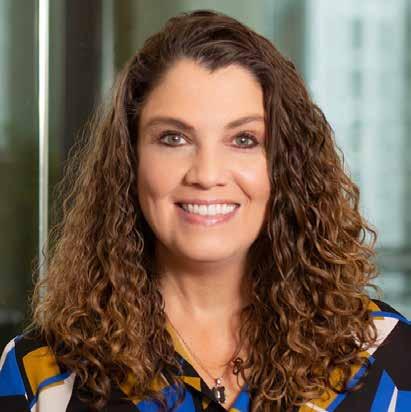

Saturday, June 15, 2024 8:15am – 9:15am
2024 OADC ANNUAL CONVENTION CONTINUING LEGAL EDUCATION GUIDEBOOK

Multiple Client Perils

Ethics Refresher for the Defense Practitioner:
Multiple Clients in One Lawsuit

June 15, 2024
8:15 a.m. – 9:15 a.m.
AZ CA CO OR UT WA │ BUCHALTER.COM
Courogen
Professional Responsibility Group Portland
Professional
Group
San Diego & Seattle 91
Olivia
Buchalter
Amber Bevacqua-Lynott Buchalter
Responsibility
Portland,

Our Premise

“[I]t
necessarily should occur to practicing lawyers that the simultaneous representation of multiple clients is fraught with professional danger.”
—In re Johnson, 300 Or. 52, 60, 707 P.2d 573 (1985)
buchalter.com
92
• The “Beautiful” Beginning
• Engaging multiple clients
• When insurance is involved
• The “Messy” Middle
• Keeping multiple clients happy as “stuff” happens
• Communication and privilege issues
• Billing considerations
• The “Uneasy” End
• Negotiating a settlement
• Allocating the proceeds

buchalter.com
Topics/Agenda
93

The content of this program is for general information purposes only and does not constitute legal or professional advice.

The opinions expressed are ours alone and do not necessarily represent the opinions of Buchalter or the OADC.
buchalter.com
94

Being a Defense Lawyer is Tough

buchalter.com
95

Word of the day

buchalter.com
96


buchalter.com 97



The Beautiful Beginning Engaging Multiple Clients

buchalter.com
98

The Situation








You have been asked by the Board of Directors for Construction Corp. to defend it in a construction defect and breach of contract case brought by Customer. The company also wishes to counterclaim for breach of contract, slander and defamation.
buchalter.com
99
Who is the Client?
• The company
o Who has the authority to retain you for the company?
o Officers & directors
o Who does that mean you represent?
o RPC 1.13: You represent the entity, generally…
RULE 1.13 ORGANIZATION AS CLIENT
(a) A lawyer employed or retained by an organization represents the organization acting through its duly authorized constituents.

buchalter.com
100
The Situation
Construction Corp. also asks you to defend the CEO and COO, who were individually named in the suit. These officers would also like to be included in the counterclaims for slander and defamation.
• May you do so?
• If so, what is required?

buchalter.com
101
Who is the Client?
• Individual stakeholders
o RPC 1.13: You represent the entity, generally…
• The “reasonable expectations” test
o In re Weidner, 310 Or. 757, 801 P2d 828 (1990)
RULE 1.13 ORGANIZATION AS CLIENT
(g) A lawyer representing an organization may also represent any of its directors, officers, employees, members, shareholders or other constituents, subject to the provisions of Rule 1.7. If the organization's consent to the dual representation is required by Rule 1.7, the consent may only be given by an appropriate official of the organization other than the individual who is to be represented, or by the shareholders.
• Does the client subjectively believe that the lawyer is representing the client?
• Is the client’s subjective belief objectively reasonable under the circumstances?

buchalter.com
102
Fee Agreement Not Necessarily Controlling
Contrary to defendants’ contention, although the retainer agreements do indeed establish defendants’ lawyer-client relationship with the LLCs, they do not preclude the existence of a lawyerclient relationship with the individual plaintiffs as well, through conduct and plaintiffs’ reasonable expectations.
—O'Kain v. Landress, 299 Or. App. 417, 430, 450 P.3d 508 (2019)

buchalter.com
103
The
Situation Construction Corp. would also like for you to defend a couple of individually named defendants who are employees of the company—a site foreman and an engineer. They, likewise, want to be included in the counterclaims for slander and defamation.
• May you do so?
• If so, what is required?


buchalter.com
104
Who is the Client?
RULE 1.7 CONFLICT OF INTEREST: CURRENT CLIENTS
(a) Except as provided in paragraph (b), a lawyer shall not represent a client if the representation involves a current conflict of interest. A current conflict of interest exists if:
(2) there is a significant risk that the representation of one or more clients will be materially limited by the lawyer's responsibilities to another client, a former client or a third person or by a personal interest of the lawyer

buchalter.com
105
Who is the Client?
RULE 1.7 CONFLICT OF INTEREST: CURRENT CLIENTS
(b) Notwithstanding the existence of a current conflict of interest under paragraph (a), a lawyer may represent a client if:
(1) the lawyer reasonably believes that the lawyer will be able to provide competent and diligent representation to each affected client;
(2) the representation is not prohibited by law;
(3) the representation does not obligate the lawyer to contend for something on behalf of one client that the lawyer has a duty to oppose on behalf of another client; and
(4) each affected client gives informed consent, confirmed in writing.

buchalter.com
106
Avoiding Conflicts from the Outset

“ * * * If there is the slightest doubt as to whether or not the acceptance of professional employment will involve a conflict of interest between two clients or with a former client, or a conflict between the interests of any client and that of the attorney, or may require the use of information obtained through the service of another client, the employment should be refused.”
—In re O'Neal, 297 Or. 258, 264, 683 P.2d 1352 (1984)
buchalter.com
107
Other Considerations
RULE 1.8 CONFLICT OF INTEREST: CURRENT CLIENTS: SPECIFIC RULES
(f) A lawyer shall not accept compensation for representing a client from one other than the client unless:
(1) the client gives informed consent;
(2) there is no interference with the lawyer's independence of professional judgment or with the client-lawyer relationship; and
(3) information related to the representation of a client is protected as required by Rule 1.6.
RULE 5.4 PROFESSIONAL INDEPENDENCE OF A LAWYER
(c) A lawyer shall not permit a person who recommends, employs, or pays the lawyer to render legal services for another to direct or regulate the lawyer's professional judgment in rendering such legal services.

buchalter.com
108



The Beautiful Beginning When Insurance is Involved

buchalter.com
109
The Situation
Construction Corp. has insurance through Insurance Co. General Counsel for Construction Corp. tendered a claim to Insurance Co. and requested coverage for Customer’s claims.
Insurance Co. denies coverage for the breach of contract claim, but accepts the tender of the defense of the construction defects claims with a reservation of rights.
Insurance Co. agrees to retain you for the representation.

May you do so?
If so, what is required?
buchalter.com
110
Who is the Client & Related Considerations

RULE 1.6 CONFIDENTIALITY OF INFORMATION
(a) A lawyer shall not reveal information relating to the representation of a client unless the client gives informed consent, the disclosure is impliedly authorized in order to carry out the representation or the disclosure is permitted by paragraph (b).
• RULE 1.7(a)(2) CONFLICT OF INTEREST: CURRENT CLIENTS
• RULE 1.7(b) CONFLICT OF INTEREST: CURRENT CLIENTS
• RULE 1.8(f) CONFLICT OF INTEREST: CURRENT CLIENTS: SPECIFIC RULES
• RULE 5.4 PROFESSIONAL
INDEPENDENCE OF A LAWYER

buchalter.com
111
The Tripartite Relationship
Lawyer



buchalter.com
Insured
Insurer Duty of good faith 112
An accepted evil?

“[The] so-called tripartite relationship has been well documented as a source of unending ethical, legal and economic tension.”
—Gonzales, J., dissenting, State Farm v. Traver, 980 S.W.2d 625 (1998)
buchalter.com
113
The Tripartite Relationship in Oregon
OSB Formal Op. 2005-30 [Revised 2016]
Trust Accounts: Claims of Two or More Persons
May defense attorney honor insurer’s request that defense provide all settlement funds to insurer to decide on distribution? [No]

Insured has a property-damage insurance policy with Insurer. When Insured’s property is damaged by the negligent conduct of a third party, Insurer pays Insured to the extent required by the policy, minus the applicable deductible. The policy provides that, to the extent that Insurer pays Insured, Insurer is subrogated to Insured’s claims against third parties.
Insurer now proposes to pay Lawyer to represent both Insurer and Insured in an action against a third party to recover damages not reimbursed by Insurer to Insured as well as the sums that Insurer paid to Insured. At the time that Insurer makes this request, it does not appear that the interests of Insurer and Insured do or may diverge.
buchalter.com
114
Circular Assumptions
• The Opinion ASSUMES a tripartite relationship exists:
• “In undertaking this representation, Lawyer would have both Insurer and Insured as clients, even though the action may be prosecuted on solely in Insured’s name.”
• Guess how many cites are given in the opinion for this proposition?

buchalter.com
115
Guidance in OSB Formal Op. 2005-30
• Must comply with Oregon RPC 1.8(f) (3d par ty payer):
o Obtain informed consent from client

o No interference with lawyer’s independence or with client-lawyer relationship
o Remember: RPC 1.6(a)
• Must comply with Oregon RPC 5.4(c): cannot permit a person who “pays the lawyer to render legal services for another to direct or regulate the lawyer’s professional judgment in rendering such legal services”
• Not conflict under RPC 1.7.
buchalter.com
116
Two-client Model
• The default position is that when an insurer retains a lawyer to represent an insured, the insurance defense lawyer in Oregon has two clients, the insured and the insurer.
o See OSB Formal Op. Nos. 2005-30, 77, 121
• Contrast Washington’s one-client approach.

buchalter.com
117
How did this Position Evolve?
OSB Formal Op. 2005-68
Trust Accounts: Claims of Two or More Persons
May defense attorney honor insurer’s request that defense provide all settlement funds to insurer to decide on distribution? [No]
OSB Formal Op. 2005-77 [Revised 2016]
Conflicts of Interest, Current Clients: Representation of Insured after Investigation of Matter for Insurer
May lawyer who previously provided insurer coverage analysis regarding complaint against insured, subsequently represent insurer and insured in defense of underlying litigation? [Maybe]
OSB Formal Op. 2005-121 [Revised 2016]
Conflicts of Interest, Current Clients: Insurance Defense
May lawyer file a motion to dismiss or for summary judgment against claim for which insurer has a duty to defend against and to pay damages on? [No]

buchalter.com
118
Opinions Continue to Struggle with Relationship

OSB Formal Op. 2005-157 [Revised 2016]
Information Relating to the Representation of a Client: Submission of Bills to Insurer’s Third-Party Audit Service
May lawyer submit client’s bills to a third-party audit service at the request of the insurance carrier? May lawyer seek client’s consent to do so? [Maybe]
OSB Formal Op. 2005-166
Competence and Diligence: Compliance with Insurance Defense Guidelines
May lawyer agree to comply with Insurer’s Litigation Billing/Management Guidelines “without regard to their effect on Lawyer’s clients? [No]

buchalter.com
119
Avoiding Tripartite?
• See Evraz Inc. Opinion – Case No. 3:08-cv-00447
• Held: No atty-client relationship between lawyer representing insured and insurer.
• See footnote 1 to OSB Formal Op. 2005-30 [revised 2016]:
• “Any assumption that a tripartite relationship exists can be overcome by the specific facts and circumstances in a particular matter. See In re Weidner, 310 Or 757, 801 P2d 828 (1990) (articulating the test for an attorney-client relationship); Evraz Inc., N.A., v. Continental Ins. Co., Civ No 3:08-cv-00447-AC, 2013 WL 6174839 (D Or Nov 21, 2013) (finding no tripartite relationship when insurer did not hire lawyer and when lawyer had made it clear to insurer that she only represented insured).”

buchalter.com
120

The Messy Middle Keeping Multiple Clients

Happy as

“Stuff”

Happens


buchalter.com
121
Case Development
During discovery, the engineer testifies at deposition that she alerted management to concerns over the quality of materials and inadequate workmanship at the construction site. This information exonerates the engineer from any individual culpability in the lawsuit, but supports that the company (or its officers and directors) are culpable under both causes of action.
• Does this information give rise to a conflict? If so, what result?
• Does the result change if the engineer’s testimony is found to be demonstrably untruthful?

buchalter.com
122
Divergence of Interests
RULE 1.7 CONFLICT OF INTEREST: CURRENT CLIENTS
(a) Except as provided in paragraph (b), a lawyer shall not represent a client if the representation involves a current conflict of interest. A current conflict of interest exists if:
(2) there is a significant risk that the representation of one or more clients will be materially limited by the lawyer's responsibilities to another client, a former client or a third person or by a personal interest of the lawyer
RULE 1.7 CONFLICT OF INTEREST: CURRENT CLIENTS
(b) Notwithstanding the existence of a current conflict of interest under paragraph (a), a lawyer may represent a client if:
(3) the representation does not obligate the lawyer to contend for something on behalf of one client that the lawyer has a duty to oppose on behalf of another client

buchalter.com
123
“Hot Potato” Rule

“So inviolate is the duty of loyalty to an existing client that not even by withdrawing from the relationship can an attorney evade it.”
—Forrest v. Baeza , 58 Cal. App. 4th 65, 79, 67 Cal. Rptr. 2d 857 (1997)
buchalter.com
124
Duty Arises upon Knowledge of Adversity
A lawyer must have available some factual predicate suggesting a conflict of interest before he or she will be held accountable for a violation of the ethics rules.
—In re Bristow, 301 Or. 194, 204-05, 721 P.2d 437 (1986)


buchalter.com
125
New Situation (Insurance Twist)
The COO, your contact on the Board for Construction Corp., wants you to take a deposition that is, in your professional judgment, completely unnecessary and does not advance the merits of the case.
The COO [both a engineer and a lawyer] admits he only wants the deposition to vindicate his opinions on an issue of interest to construction experts and to expose the deponent as a fraudster. Neither he nor Construction Corp. is willing to pay for the deposition. Rather, they want the insurer to cover the cost of the deposition.
• What do you do?

buchalter.com
126
Scope, Objectives & Authority
RULE 1.7(a) CONFLICT OF INTEREST: CURRENT CLIENTS RULE 5.4 PROFESSIONAL INDEPENDENCE OF A LAWYER
RULE 1.2 SCOPE OF REPRESENTATION AND ALLOCATION OF AUTHORITY BETWEEN CLIENT AND LAWYER
(a) [A] lawyer shall abide by a client's decisions concerning the objectives of representation and, as required by Rule 1.4, shall consult with the client as to the means by which they are to be pursued. A lawyer may take such action on behalf of the client as is impliedly authorized to carry out the representation.
RULE 3.1 MERITORIOUS CLAIMS AND CONTENTIONS
In representing a client or the lawyer’s own interests, a lawyer shall not knowingly bring or defend a proceeding, assert a position therein, delay a trial or take other action on behalf of a client, unless there is a basis in law and fact for doing so that is not frivolous, which includes a good faith argument for an extension, modification or reversal of existing law.
(c) A lawyer shall not permit a person who recommends, employs, or pays the lawyer to render legal services for another to direct or regulate the lawyer's professional judgment in rendering such legal services.

buchalter.com
127
Case Development
After discovery is complete and the arbitration/trial date is approaching, CEO notifies you that she is leaving Construction Corp. and initiating employment claims against the company.
• Does this information give rise to a conflict? If so, what result?
• Are you permitted to represent CEO in her action against Construction Corp.?

buchalter.com
128
Divergence of Interests
RULE 1.7 CONFLICT OF INTEREST: CURRENT CLIENTS
(a) Except as provided in paragraph (b), a lawyer shall not represent a client if the representation involves a current conflict of interest. A current conflict of interest exists if:
(2) there is a significant risk that the representation of one or more clients will be materially limited by the lawyer's responsibilities to another client, a former client or a third person or by a personal interest of the lawyer
RULE 1.7 CONFLICT OF INTEREST: CURRENT CLIENTS
(b) Notwithstanding the existence of a current conflict of interest under paragraph (a), a lawyer may represent a client if:
(3) the representation does not obligate the lawyer to contend for something on behalf of one client that the lawyer has a duty to oppose on behalf of another client

buchalter.com
129
Additional Fact

Former CEO agrees to have you continue defending her with respect to the Construction Corp. litigation, but tells you that she would like you to communicate with counsel for Customer and see if you can negotiate a settlement or otherwise get her dismissed from the case.
• May you do so?
• Do you need to consult with or get permission from Construction Corp. to do so?
• Are any conflicts created by this request? If so, what result?
buchalter.com
130
Change of Heart
RULE 1.2 SCOPE OF REPRESENTATION AND ALLOCATION OF AUTHORITY BETWEEN CLIENT AND LAWYER
(a) [A] lawyer shall abide by a client's decisions concerning the objectives of representation and, as required by Rule 1.4, shall consult with the client as to the means by which they are to be pursued. A lawyer may take such action on behalf of the client as is impliedly authorized to carry out the representation. A lawyer shall abide by a client's decision whether to settle a matter.
RULE 1.6 CONFIDENTIALITY OF INFORMATION
(a) A lawyer shall not reveal information relating to the representation of a client unless the client gives informed consent, the disclosure is impliedly authorized in order to carry out the representation or the disclosure is permitted by paragraph (b).
RULE 1.7(a)
CONFLICT
OF INTEREST: CURRENT CLIENTS
RULE 1.7(b) CONFLICT OF INTEREST: CURRENT CLIENTS

buchalter.com
131



The Messy Middle Communication and Privilege Issues

buchalter.com
132
A New Development
In discovery, it comes to light that the Construction Corp. site foreman either knowingly cut corners on the project or intentionally sabotaged it because he was unhappy with the company.
• What obligations do you have to disclose this information to Construction Corp.? To Insurance Co.?
• Does this information give rise to a conflict? If so, what result?

buchalter.com
133
Competing Duties
RULE 1.4 COMMUNICATION
(a) A lawyer shall keep a client reasonably informed about the status of a matter and promptly comply with reasonable requests for information
(b) A lawyer shall explain a matter to the extent reasonably necessary to permit the client to make informed decisions regarding the representation.
RULE 1.6 CONFIDENTIALITY OF INFORMATION
(a) A lawyer shall not reveal information relating to the representation of a client unless the client gives informed consent, the disclosure is impliedly authorized in order to carry out the representation or the disclosure is permitted by paragraph (b).
RULE 1.7(a) CONFLICT OF INTEREST: CURRENT CLIENTS
RULE 1.7(b) CONFLICT OF INTEREST: CURRENT CLIENTS

buchalter.com
134
Another New Development

Following her departure from the firm, CEO obtained other counsel and was dismissed from the case by Customer pursuant to an “undisclosed settlement.” While you did not negotiate the settlement, CEO did discuss with you what terms she would want/agree to.
• Are you able to share this information with Construction Corp.?
• Are you able to use this information to help resolve the litigation with Customer on behalf of Construction Corp.?
buchalter.com
135
Duties to Former Clients
RULE 1.6 CONFIDENTIALITY OF INFORMATION
(a) A lawyer shall not reveal information relating to the representation of a client unless the client gives informed consent, the disclosure is impliedly authorized in order to carry out the representation or the disclosure is permitted by paragraph (b).
RULE 1.9 DUTIES TO FORMER CLIENTS
(c) A lawyer who has formerly represented a client in a matter or whose present or former firm has formerly represented a client in a matter shall not thereafter:
(1) use information relating to the representation to the disadvantage of the former client except as these Rules would permit or require with respect to a client, or when the information has become generally known; or
(2) reveal information relating to the representation except as these Rules would permit or require with respect to a client.

buchalter.com
136

The Messy Middle Billing Considerations


buchalter.com
137
Insurer’s Billing Requirements
Insurance Co. has insisted that you provide detailed task billing entries each month prior to being paid for services in connection with Construction Corp. litigation.
Insurance Co. requires bills to be submitted electronically and its software reviews bills for compliance. You have figured out that more detail and “buzz” words that are used helps ensure that entries aren’t rejected.
• How much can you share with Insurance Co?

buchalter.com
138
No more than absolutely necessary
RULE 1.2 SCOPE OF REPRESENTATION AND ALLOCATION OF AUTHORITY BETWEEN CLIENT AND LAWYER
(a) [A] lawyer shall abide by a client's decisions concerning the objectives of representation and, as required by Rule 1.4, shall consult with the client as to the means by which they are to be pursued. A lawyer may take such action on behalf of the client as is impliedly authorized to carry out the representation. A lawyer shall abide by a client's decision whether to settle a matter.
RULE 1.6 CONFIDENTIALITY OF INFORMATION
(a) A lawyer shall not reveal information relating to the representation of a client unless the client gives informed consent, the disclosure is impliedly authorized in order to carry out the representation or the disclosure is permitted by paragraph (b).

buchalter.com
139
The Uneasy End

Negotiating a Settlement


buchalter.com
140
Case Development
Construction Corp. wants to settle the case and agrees on an amount on the breach of contract claim but Insurance Co. will not agree on construction defect claims and insists you continue to defend.
• How do you resolve these competing directions?

buchalter.com
141
Conflicting Instructions

RULE 1.2 SCOPE OF REPRESENTATION AND ALLOCATION OF AUTHORITY BETWEEN CLIENT AND LAWYER
(a) [A] lawyer shall abide by a client's decisions concerning the objectives of representation and, as required by Rule 1.4, shall consult with the client as to the means by which they are to be pursued. A lawyer may take such action on behalf of the client as is impliedly authorized to carry out the representation. A lawyer shall abide by a client's decision whether to settle a matter.
RULE 5.4 PROFESSIONAL INDEPENDENCE OF A LAWYER
(c) A lawyer shall not permit a person who recommends, employs, or pays the lawyer to render legal services for another to direct or regulate the lawyer's professional judgment in rendering such legal services.
buchalter.com
ABA
142
Formal Op. 96-403 (1996) Obligations of a Lawyer Representing an Insured Who Objects to a Proposed Settlement within Policy Limits
Primary Client Remains the Insured
• Kruger-Willis v. Hoffenburg, 198 Wn.App. 408 (2017)
o Insurer had contractual duty to defend driver, and counsel retained by insurer had authority to represent driver.
• But see Washington RPC 1.2(f) [not in Oregon]
o “A lawyer shall not purport to act as a lawyer for any person or organization if the lawyer knows or reasonably should know that the lawyer is acting without the authority of that person or organization, unless the lawyer is authorized or required to so act by law or a court order.”

buchalter.com
143
Settlement Negotiations
The mediation date is approaching and Construction Corp. and the other remaining defendants have authorized you to settle the claims against them for no more than $X (and Insurance Co. agrees). Construction Corp. has also authorized you to settle their breach of contract claims for no less than $2X. Finally, all defendants have agreed to no less than $2X for the counterclaims for slander and defamation.
• What are you able to share with the mediator?

buchalter.com
144
Lawyers (Mostly) Can’t Lie

RULE 4.1 TRUTHFULNESS IN STATEMENTS TO OTHERS
In the course of representing a client a lawyer shall not knowingly:
(a) make a false statement of material fact or law to a third person; or
(b) fail to disclose a material fact when disclosure is necessary to avoid assisting in an illegal or fraudulent act by a client, unless disclosure is prohibited by Rule 1.6.
RULE 8.4 MISCONDUCT
(a) It is professional misconduct for a lawyer to:
(3) engage in conduct involving dishonesty, fraud, deceit or misrepresentation that reflects adversely on the lawyer’s fitness to practice law
buchalter.com
145
Recognized “Puffing” Permitted

ABA Formal Op. 06-439 (2006)
Lawyer’s Obligation of Truthfulness When Representing a Client in Negotiation: Application to Caucused Mediation
“[Statements regarding a party’s negotiating goals or its willingness to compromise, as well as statements that can fairly be characterized as negotiation “puffing,” ordinarily are not considered “false statements of material fact” within the meaning of the Model Rules.”
ABA Formal Op. 93-370 (1993)
Judicial Participation in Pretrial Settlement Negotiations
“While … a certain amount of posturing or puffery in settlement negotiations may be an acceptable convention between opposing counsel, a party’s actual bottom line or the settlement authority given to a lawyer is a material fact. A deliberate misrepresentation or lie to a judge in pretrial negotiations would be improper under Rule 4.1.”
buchalter.com
146
Complications due to Multiple Clients
The Construction Corp. COO has insisted on appearing at mediation, and instructs you that no other defendants/cross-complainants are permitted to attend.
The site foreman (named defendant/cross-complainant) and majority shareholder have both requested to attend and participate.
• What can you do?

buchalter.com
147
Who is the Client?
RULE 1.2 SCOPE OF REPRESENTATION AND ALLOCATION OF AUTHORITY BETWEEN CLIENT AND LAWYER

(a) [A] lawyer shall abide by a client's decisions concerning the objectives of representation and, as required by Rule 1.4, shall consult with the client as to the means by which they are to be pursued. A lawyer may take such action on behalf of the client as is impliedly authorized to carry out the representation. A lawyer shall abide by a client's decision whether to settle a matter.
RULE 1.13 ORGANIZATION AS CLIENT
(a) A lawyer employed or retained by an organization represents the organization acting through its duly authorized constituents.
(g) A lawyer representing an organization may also represent any of its directors, officers, employees, members, shareholders or other constituents, subject to the provisions of Rule 1.7. If the organization's consent to the dual representation is required by Rule 1.7, the consent may only be given by an appropriate official of the organization other than the individual who is to be represented, or by the shareholders.
buchalter.com
148
Additional Complication
At mediation, you reach an agreement with plaintiffs, based in part on your representation that—in addition to the amounts covered by insurance—Construction Corp. has set aside an addition $1m that it will contribute to the deal.
As you are formalizing the agreement, Construction Corp. notifies you that it does not, in fact, have those funds, let alone have them set aside.
• What are your obligations in light of this information?

buchalter.com
149
Duty to Correct
In re Williams, 314 Or 530 (1992) (lawyer disciplined for not following through on a representation that he would hold certain client funds in trust pending the resolution of a dispute, even though the lawyer believed that he would do so and expected to do so when the representation was made).
• May have duty to correct a statement initially believed to be true that later turns out to be false.

RULE 8.4 MISCONDUCT
(a) It is professional misconduct for a lawyer to:
(3) engage in conduct involving dishonesty, fraud, deceit or misrepresentation [including representation by omission] that reflects adversely on the lawyer’s fitness to practice law

buchalter.com
150
The “Aggregate Settlement” Scenario
The mediator was not only able to resolve the case, but he was able to extract a $4X settlement from the defendants on the slander and defamation counterclaims.
You had not anticipated getting anywhere near the $2X that had been authorized, and you now must draft the formal settlement agreement indicating what each client is to receive.
• How do you decide how the settlement should be divided?

buchalter.com
151
Conflicting Instructions

RULE 1.2 SCOPE OF REPRESENTATION AND ALLOCATION OF AUTHORITY BETWEEN CLIENT AND LAWYER
(a) [A] lawyer shall abide by a client's decisions concerning the objectives of representation and, as required by Rule 1.4, shall consult with the client as to the means by which they are to be pursued. A lawyer may take such action on behalf of the client as is impliedly authorized to carry out the representation. A lawyer shall abide by a client's decision whether to settle a matter.
RULE 1.8 CONFLICT OF INTEREST: CURRENT CLIENTS: SPECIFIC RULES
(g) A lawyer who represents two or more clients shall not participate in making an aggregate settlement of the claims of or against the clients, … unless each client gives informed consent, in a writing signed by the client. The lawyer's disclosure shall include the existence and nature of all the claims or pleas involved and of the participation of each person in the settlement.
buchalter.com
152


The Uneasy End Allocating the Proceeds


buchalter.com
153
Send me the Money!
Following news of the windfall settlement, Construction Corp. instructs you to send the entire amount of the counterclaims ($4X) to the company. Given that they paid the legal fees for this part of the representation, they advised that they are entitled to work out how much each of the respective defendants receive from the proceeds.
May you do as Construction Corp. requests?

buchalter.com
154
Contested Funds
RULE 1.7 CONFLICT OF INTEREST: CURRENT CLIENTS
(b) Notwithstanding the existence of a current conflict of interest under paragraph (a), a lawyer may represent a client if:
(3) the representation does not obligate the lawyer to contend for something on behalf of one client that the lawyer has a duty to oppose on behalf of another client

RULE 1.15-1 SAFEKEEPING PROPERTY
(d) * * * Except as stated in this rule or otherwise permitted by law or by agreement with the client, a lawyer shall promptly deliver to the client or third person any funds or other property that the client or third person is entitled to receive and, upon request by the client or third person, shall promptly render a full accounting regarding such property.
(e) When in the course of representation a lawyer is in possession of property in which two or more persons … claim interests, the property shall be kept separate by the lawyer until the dispute is resolved. The lawyer shall promptly distribute all portions of the property as to which the interests are not in dispute.
buchalter.com
155
Professionalism

buchalter.com
156
Civility Still Matters

We agree a trial court may consider an attorney’s pervasive incivility in determining the reasonableness of the requested fees. The record before us amply supports the trial court’s finding that plaintiff’s counsel was repeatedly, and apparently intentionally, uncivil to defense counsel—and to the court—throughout this litigation.
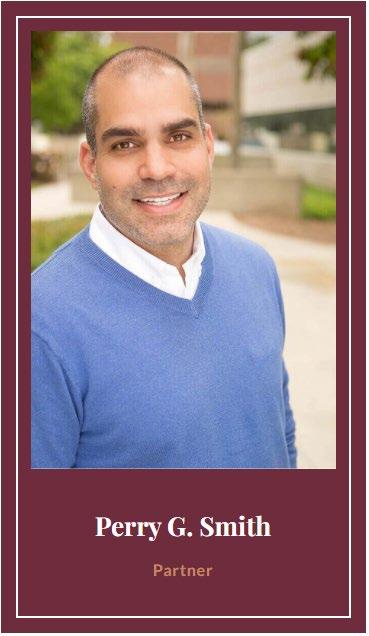
$1.45 million to $686,795

Photo credit: https://smithriddles.com/who-we-are/

buchalter.com
157


 James C. Mosser | Nicolas Mosser
James C. Mosser | Nicolas Mosser
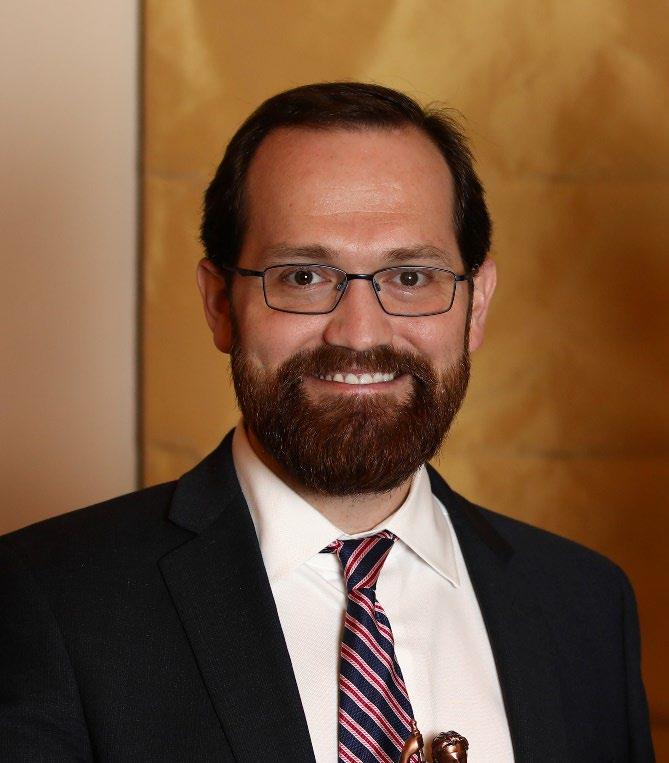
buchalter.com No harm—no foul?
didn’t do anything bad, we’re just mean people.”
Photo credit: www.mosserlaw.com/ourfirm/attorneys/ “We
158
Lessons to be Learned

buchalter.com
159
Questions?

buchalter.com
160
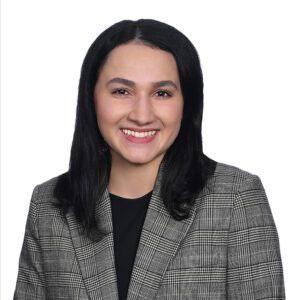

• Legal Ethics & Risk Management
• Legal Malpractice Defense
• Fee Disputes, Mediations, Arbitrations
• Litigation Issues, such as Withdrawal, Sanctions & Disqualification
• Disciplinary (Bar) Defense
• Judicial Ethics
• Judicial Conduct Commission
• Licensing, Admissions, and Reciprocity
• In-House Counsel Ethics
• Law Firm Dissolution and Partnership Disputes
• Law Firm Training / Audits
• Culture and Risk Management Reviews
• Internal Investigations
• Lawyer and Law Firm Innovation
• Modern Legal / Electronic Practice Issues
• Expert Witness
• Administrative Regulation, Professionals
• Continuing Legal Education (CLE) Presentations Olivia Courogen Attorney (503) 226-8469
ocourogen@Buchalter.com linkedin.com/in/oliviacourogen
Amber Bevacqua-Lynott Sr. Counsel/ Associate Gen. Counsel (503) 453-5813
alynott@Buchalter.com
linkedin.com/in/Bevacqua-Lynott
www.buchalter.com/industry-specialty/professional-responsibility-practicegroup/#overview
buchalter.com
Buchalter Professional Responsibility Group
161
Zombie CD Claims- Back from the Dead Breakout Session
CONSTRUCTION
PRESENTED BY:
Peter Willcox-Jones, Partner, Cosgrave Vergeer Kester
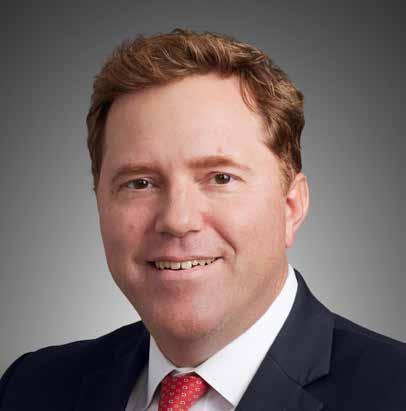
Saturday, June 15, 2024 9:30am – 10:30am
2024 OADC ANNUAL CONVENTION CONTINUING LEGAL EDUCATION GUIDEBOOK
PETER S. WILLCOX - JONES
CLAIRE WHITTAL
ZOMBIE CD CLAIMS
· BACK FROM THE DEAD






163
WHAT IS A ZOMBIE CLAIM?
• OWNER SETTLES CD DISPUTE – OWNER LATER FILES SUIT AGAINST REPAIR
CONTRACTOR

• OWNER SETTLES CD DISPUTE AND SELLS HOME – NEW OWNER FILES SUIT AGAINST
REPAIR CONTRACTOR. POSSIBLE CLAIMS AGAINST PRIOR OWNER.
164

INITIAL CONSIDERATIONS
• WHAT WAS FIRST LAWSUIT ABOUT?
• ALLEGED DEFECTS
• PROFFERED SCOPES OF REPAIR AND EXPERT REPORTS/COMMUNICATIONS
• DETAILS AND BREADTH OF SETTLEMENT DOCUMENTS
• WHAT REPAIR WORK WAS PERFORMED?
• WHAT WAS SCOPE?
• WHO DID WORK?
• COST OF REPAIR WORK?
165

INITIAL CONSIDERATIONS
• HOW DO NEWLY ALLEGED DEFECTS COMPARE TO DEFECTS PREVIOUSLY AT ISSUE
• WAS THERE A REPAIR CONSULTANT INVOLVED? WHAT WAS ITS ROLE? SHOULD THEY
BE A PARTY – BE CAREFUL
• MAKE SURE TO REVIEW CONSULTANTS CONTRACT – DAMAGE LIMITATIONS, LIABILITY LIMITATIONS, ETC.
• WHAT LAWYERS WERE INVOLVED IN PRIOR LAWSUIT?
• SELECTION OF EXPERT
• WHO WAS INVOLVED IN LAST CASE AND WHAT ROLE
166
DISCOVERY ISSUES AND HURDLES
• EXPERT MATERIALS – ARE THEY DISCOVERABLE?
• WORK-PRODUCT DIRECTLY AT ISSUE
• WAIVER

• STIPULATION FROM PARTY TO PRODUCE
• DEPOSITIONS OF EXPERTS – SAME ISSUES AS ABOVE
• FROM THE SECOND RESTATEMENT OF MIKE SCOTT: “WHAT YOU SEE IS NOT A MEDIATION COMMUNICATION”
167
BEST OFFENSE A GOOD DEFENSE

• IF SAME OWNER – FOCUS ON SCOPE OF REPAIR AND MONITORING REPAIR,
ESPECIALLY IF DEFECTS ARE SIMILAR TO PRIOR DEFECTS. IF OWNER WENT WITH LESS THAN RECOMMENDED REPAIR, DIG IN.
• BETTERMENT – UNDERUTILIZED FOCUS
• IF SECOND OWNER
• FOCUS ON KNOWLEDGE – PRE-PURCHASE INSPECTION
• WHAT WAS DISCLOSED AT TIME OF PURCHASE
• ESPECIALLY IMPORTANT IN COMMERCIAL TRANSACTION (APARTMENTS/HOTEL/BUSINESS)
168
BEST OFFENSE A GOOD DEFENSE

• REPAIR CONSULTANT
• IF REPAIR CONSULTANT WAS USED AND NOT SUED, GET THEM IN THE LAWSUIT
• REPAIR CONSULTANT’S ARE IN A BIND WHEN BROUGHT INTO A LAWSUIT
• WHAT WERE CONSULTANT’S RESPONSIBILITIES - PREPARE SCOPE, OVERSIGHT, PROJECT MANAGEMENT?
• CONTRACTOR SCOPE OF WORK AND ANALYSIS OF DEFECTS AND DAMAGE
• WHAT DID THEY DO? WHAT DID THEY SEE?
• ESPECIALLY IMPORTANT WHEN TARGETED REPAIR PERFORMED
• NEW DAMAGE VERSUS OLD DAMAGE
169

HOW TO ATTACK A ZOMBIE
• JUST LIKE IN MOVIES, ZOMBIES ARE HARD TO KILL!
• MEANS OF ATTACK – SOMETIMES THE OLD WAYS ARE THE BEST WAYS
• STRATEGIC AREAS OF FOCUS
• CAN NEW DAMAGE BE LINKED TO AN OLD PROBLEM?
• FIND SOMEONE ELSE TO BLAME
• REPAIR CONSULTANT
• PRIOR OWNER, IF APPLICABLE
• ORIGINAL CONSTRUCTION
• OTHER CONTRACTORS
• COST AND SCOPE OF REPAIR
• BETTERMENT
• TARGETED/LESS EXPENSIVE SCOPE
170

THE ZOMBIE IS DEAD, NOW WHAT?
• SETTLEMENT AGREEMENTS
• SETTLE FOR NOTHING LESS THAN THE CLASSIC MIKE SCOTT “DONE-DONE” DEAL
• WISH THE NEW REPAIR CONTRACTOR LUCK AND MAKE SURE THEY ARE NOT INSURED BY YOUR CARRIER!
171
EMPLOYMENT
Advising Employers on Advanced Leave Issues Breakout Session
PRESENTED BY:
Jaci Houser, Counsel, Littler Mendelson
Chet Nakada, Training and Development Specialist, BOLI Rachel Timmins, Associate, Tonkon Torp

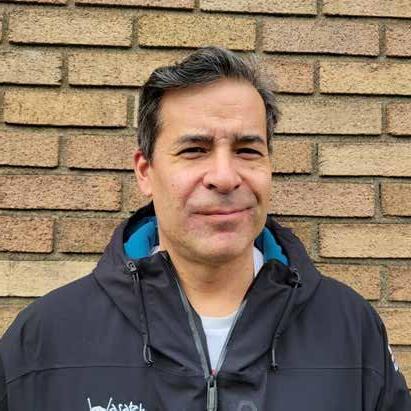

Saturday, June 15, 2024 9:30am – 10:30am
2024 OADC ANNUAL CONVENTION CONTINUING LEGAL EDUCATION GUIDEBOOK

Advanced Leave and Accommodation Issues for Defense Counsel
OADC Convention
June 15, 2024
Presented by:
Jacqueline Houser
Littler Mendelson, P.C.
Rachel Timmins
TonkonTorp LLP
Chet Nakada
Oregon Bureau of Labor and Industries
• Family leave update
• Accommodations
• Disability
• Mental health
• Leave
Agenda

Family and Medical Leaves
BOLI’s Role in Paid Leave
• No discrimination or adverse employment action against employee who invokes paid leave protections
• Intersection with other legal obligations:
•Oregon Family Leave Act
•Family Medical Leave Act
•Oregon Sick Time Law
•Leave and Accommodations for Victims of Domestic Violence
•Disability laws
•Sex/Gender laws (including pregnancy)

Who grants the leave?
Who grants the leave?
The employer determines if leave qualifies and it may, at times, run concurrently with Paid Leave
Oregon Employment Department decides whether to grant Paid Leave.
Equivalent

FMLA OFLA PAID
LEAVE
Plans 29 CFR 825.300(d)(1) OAR 839‐009‐0250(6) ORS 657B.090 and 657B.210‐260
Equivalent Plans and 3rd Party Administrators
Who grants the leave?


•Tracking and protections remain the same.
•Make sure you communicate with the employee and third-party administrator to facilitate leave.
•Continue to provide oversight by tracking leave and being in communication.
•Does not absolve an employer of liability.

Qualifying Reason (1) The 4 components of leave requirements

Covered







Employee
Reason
Employer Eligible
Qualifying
Leave Available
Paid Family Leave:
SB 1515 will bring big changes
SenateBill1515 willamendsPaidLeaveOregonandOFLAtobetteralign theprotections.MostchangeswilltakeeffectJuly1,2024.
• OFLAwillnolongercover parental leaveorserious health condition leave. EmployeesneedingleavewillusePaidLeaveOregon(andpotentially,sick timeifavailable).
• No concurrency with OFLA.OFLA leavewillbe separate and inaddition toleaveunder PaidLeaveOregon.
• OFLA still allows for an additional 12 weeks of pregnancy disability leave. In additiontoanyotherOFLAleaveusedforsickchildleaveandbereavement leave,anemployeemaystilltakeupto12additionalweeksofOFLAleavefor theirownpregnancydisabilityinthesameleaveyear.

Paid Family Leave:
SB 1515: More changes to OFLA
• OFLASickChildLeaveexpanded. AnemployeemaytakeleaveunderOFLAto careforachildsufferingfromanyillness,injury,orconditionthatrequireshomecare (evenifitmayqualifyasaserioushealthcondition).
•Employersmay capPTOusageat100% ofwhatemployeewouldhaveearned duringaPaidLeaveOregonclaim. However,theyalso mayallowemployeesto exceedthislimit. (NochangestoOFLA659A.174)
• BereavementleaveunderOFLAiscappedatfourweeksperyear. Anemployee’s TOTALentitlementtobereavementleaveunderOFLAwillbecappedatfourweeks perleaveyear.
• Nochanges toOregon’spregnancyaccommodationlaw.

Paid Family Leave:
SB 1515: Other provisions
•BeginningJan2025,PaidLeaveOregonwillprotectleavetofacilitatethefoster childplacementoradoption.Priorto2025,thisleaveiscoveredunderOFLA.
• OFLAistemporarilyamendedtocovertwoadditionalweeksofleavefor thefosteringoradoptionprocess.
•Between July1,2024 and December31,2024,anemployeemaytakean additionaltwoweeksofOFLAleavetoeffectuatethelegalprocessrequired fortheplacementofafosterchildoradoptionofachild.
•Some predictivescheduling reliefrelatingtoreturningemployees(onlyrelates tolargeretailers,foodserviceorhospitalityemployers).
•SB1515here:
https://olis.oregonlegislature.gov/liz/2024R1/Downloads/MeasureDocument/SB1515 /Enrolled

Paid Family Leave: Changes to Sick Leave and OFLA Rules
•Defines affinity and provides sample attestation for affinity
•Adds to eligibility calculation that an employer must count any hours of protected leave and actual hours worked
•Definition of parent now includes stepparents, legal guardians, and a spouse’s or domestic partner’s parent
•Pregnancy leave now includes termination of pregnancy and fertility/infertility treatments
•Substantially conforms definition of leave year toPaid Leave’s definition of benefit year
•Temporary rules filed May 8, 2024 here: https://www.oregon.gov/boli/about/Documents/BLI_14‐2024TrackedChanges.pdf

Accommodations


We Never See the Easy Cases
• An employee who needs a few weeks off for surgery
• An employee who needs an ergonomic keyboard
We See the Hard Cases
• An employee who has panic attacks every time their manager talks to them about their performance
• An employee who is taking frequent time off with no advance notice
• An employee who has been gone for six months but keeps getting notes from a doctor excusing them for one more month

Common ADA Issues


Lack of Organization/Preparedness
• Maintain accurate job descriptions
• Attendance as essential function
• Social or in-person elements of job
• Manage performance before accommodations are requested
• Train managers and supervisors
Notice
• When are you on notice of a disability?
• Potential signs of a need for accommodation:
• New/sudden performance issues
• Mention of depression/anxiety; “hormones”
• Request for time off (especially before eligible for FMLA/OFLA)
Insufficient Process
• Rushing through the meaningful interactive process
• Jumping too quickly to undue hardship
• Bad doctor’s notes
• Ask clarifying questions
• When to get a second opinion?
• What type of health care provider?
Misc.
• The accommodation will not allow employee to perform essential functions of the job
• The accommodation is expensive
• Employee’s provider is in another state/other indicia that provider has never actually seen patient
• The only requested “accommodation” is one you’ve already determined won’t work

Mental Health and Accommodations


Mental Health and Accommodations
• When is it a disability?
• Intermittent ADA leave
• Fitness for duty/safety risks
• Issues that affect performance management
Potential Mental Health Issues* in the Workplace
• Anxiety
• Post Traumatic Stress Disorder (PTSD)
• Major depression
• Attention Deficit Hyperactivity Disorder (ADD or ADHD)
• Learning disabilities
• Drug and alcohol addiction
• Obsessive Compulsive Disorder (OCD)
• Bipolar disorder
• Delusional or paranoid behavior
*Need to be treated just like physical disabilities
What Do Mental Health Accommodations Look Like?
• Flexible schedule to allow for appointments
• More or longer breaks
• More frequent reminders of tasks or deadlines
• Quieter work environment or noise-canceling headphones
• Removing marginal functions
• Work from home
• Others?
What Is Not a Mental Health Accommodation?
• Allowing employee outbursts in violation of workplace rules (generally)
• Eliminating essential job functions
• Requiring other employees to work harder
• Monitoring an employee’s medication
• Providing a stress-free work environment
What Can You Require?
Ability to:
• Be respectful toward coworkers, supervisors and customers
• Require reliable and predictable attendance
• Work in a stressful environment
Employers can also hold all employees to the same conduct standards, when job related
Fit for Duty/Safety Concerns
• What to do when an employee presents a safety risk
• Direct threat = significant risk of substantial harm to self or others
• Not required to accommodate a direct threat
• Weigh risk of ADA violation versus safety risk
• Consider requiring a fitness for duty evaluation
• Is there a reasonable accommodation available to eliminate or reduce the threat?
Examples
• Employee found cutting himself at work
• Employee who makes complaints of harassment that appear to be delusional
• Employee who threatens violence against boss but claims the threats are not real and just a symptom of his disability
• Employee who swears at meetings, upsetting coworkers, but says the swearing is an uncontrollable result of anxiety
Fit for Duty/Safety Concerns
• Key takeaways
• Can enforce workplace rules even if violation is caused by employee’s disability
• Not required to excuse disabled employees from standards of conduct or safety rules
• Workplace rules should be job related and consistent with business necessity
• May need to explore accommodations to help employee comply with workplace rules
Takeaways
• Mental health conditions need to be treated just like physical limitations
• Don’t single out mental health disabilities for extra scrutiny (such as requiring doctor’s note only for mental health conditions)
• Don’t do away with essential job functions, but be prepared to think outside the box

Leave as a Reasonable Accommodation


When Should Leave Be Considered?
• Employee may return from leave with restrictions
• No “fully healed” policies
• Leave may be a reasonable accommodation even if no OFLA/FMLA available
• There are no workplace accommodations that will help employee perform essential job functions
• A leave will help employee return to work
Leave as a Reasonable Accommodation
• How much leave do we have to give?
• No clear guidance on what length of leave is reasonable
• Fact-specific
• Nature of job
• Size of employer
• Not required to provide indefinite leave
• If claiming undue hardship, document!
Forms of Leave as a Reasonable Accommodation
• Continuous leave
• Intermittent days off
• Additional or longer breaks
• Shorter shifts
• Adjusted start or end time
• Leave to attend medical appointments
• Grace period for arriving late to work
Leave as a Reasonable Accommodation
• Always consider the ADA when an employee requests leave for own health condition but isn’t OFLA/FMLA eligible
• Request supporting medical documentation
• Explore other accommodations first; don’t automatically resort to leave as an “easy out”
• Leave can be continuous or intermittent
• If leave is not an option, look to reassignment






Littler Mendelson, P.C.
(503) 889-8856
jhouser@littler.com
Oregon Bureau of Labor and Industries
(971) 612-0516
chet.nakada@boli.oregon.gov
TonkonTorp LLP
(503) 802-2150
Rachel.Timmins@tonkon.com
Questions?
Chet Nakada
Jacqueline Houser
Rachel Timmins
PRACTICE MANAGEMENT
Confidentiality and Non-Disparagement Clauses: A Mediator’s Role Breakout Session
PRESENTED BY:
Karen Bamberger, Mediator/Arbitrator, JAMS Richard Vangelisti, Mediator, Vangelisti Mediation

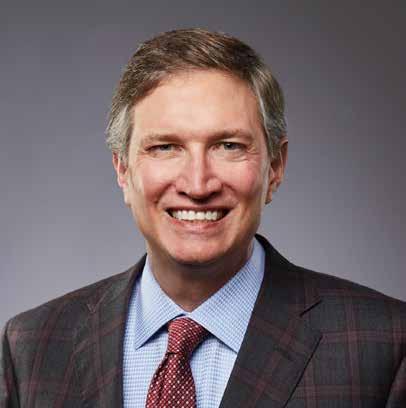
Saturday, June 15, 2024 9:30am – 10:30am
2024 OADC ANNUAL CONVENTION CONTINUING LEGAL EDUCATION GUIDEBOOK
AMERICAN BAR ASSOCIATION
STANDING COMMITTEE ON ETHICS AND PROFESSIONAL RESPONSIBILITY
Formal Opinion 00-417 April 7, 2000
Settlement Terms Limiting a Lawyer’s Use of Information
Although a lawyer may participate in a settlement agreement that prohibits him from revealing information relating to the representation of his client, the lawyer may not participate or comply with a settlement agreement that would prevent him from using information gained during the representation in later representations against the opposing party, or a related party, except in limited circumstances. An agreement not to use information learned during the representation effectively would restrict the lawyer's right to practice and hence would violate Rule 5.6(b).
The Committee has been asked whether, under the ABA Model Rules of Professional Conduct, a lawyer representing a party in a controversy may agree to a proposal by opposing counsel that settlement of the matter be conditioned on the lawyer not using any of the information learned during the current representation in any future representation against the same opposing party. The proposed settlement would be favorable to the lawyer’s client. The Committee notes that, while this particular situation is most likely to arise in litigation, it also could arise in transactional matters.
The Model Rules prohibit a lawyer, as part of the settlement of a controversy, from participating in offering or making an agreement that would restrict the lawyer’s right to practice.1 In ABA Formal Opinion 93-371, this Committee expressed the opinion that a lawyer may not offer, nor may opposing counsel accept, a settlement term that would obligate the latter to refrain from representing either present or future clients who might opt out of a set-
1.Model Rule 5.6(b) provides: “A lawyer shall not participate in offering or making an agreement in which a restriction on the lawyer’s right to practice is part of the settlement of a controversy between private parties.” This rule is an expansion of former disciplinary rule DR 2-108(B), which did not proscribe “participating in the offering” as does Model Rule 5.6(b).
This opinion is based on the Model Rules of Professional Conduct and, to the extent indicated, the predecessor Model Code of Professional Responsibility of the American Bar Association. The laws, court rules, regulations, codes of professional responsibility, and opinions promulgated in the individual jurisdictions are controlling.
AMERICAN BAR ASSOCIATION STANDING COMMITTEE ON ETHICS AND PROFESSIONAL RESPONSIBILITY, 541 North Fairbanks Court, 14th Floor, Chicago, Illinois 60611-3314 Telephone (312)9885300 CHAIR: Donald B. Hilliker, Chicago, IL ❏ Loretta C. Argrett, Washington, DC ❏ Jackson M. Bruce, Jr., Milwaukee, WI ❏ William B. Dunn, Detroit, MI ❏ James W. Durham, Philadelphia, PA ❏ Mark I. Harrison, Phoenix, AZ ❏ Daniel W. Hildebrand, Madison, WI ❏ William H. Jeffress, Jr., Washington, DC ❏ Bruce Alan Mann, San Francisco, CA ❏ M. Peter Moser, Baltimore, MD ❏ CENTER FOR PROFESSIONAL RESPONSIBILITY: George A. Kuhlman, Ethics Counsel; Eileen B. Libby, Associate Ethics Counsel © 2000 by the American Bar Association. All rights reserved.
209
tlement of mass tort or class action litigation. Although a lawyer normally would be required, pursuant to Rule 1.2 (Scope of Representation), to abide by the client’s instructions to accept a settlement offer, the proscription in Rule 5.6(b) (Restrictions on Right to Practice) makes it impossible for the lawyer to comply with a client’s instructions in these circumstances. The Committee later, in Formal Opinion 95-394, specifically affirmed that this Rule 5.6(b) proscription would apply even where one of the parties was a government entity.
A lawyer is a client’s representative and must represent the client diligently.2 Nevertheless, the Model Rules’ Preamble makes clear that the lawyer also is “an officer of the legal system and a public citizen having special responsibility for the quality of justice.” Although the Committee did not cite the Preamble in Formal Opinion 93-371, it must have had these principles in mind when it stated:
The rationale of Model Rule 5.6 is clear. First, permitting such agreements restricts the access of the public to lawyers who, by virtue of their background and experience, might be the very best available talent to represent these individuals. Second, the use of such agreements may provide clients with rewards that bear less relationship to the merits of their claims than they do to the desire of the defendant to “buy off ” plaintiff’s counsel. Third, the offering of such restrictive agreements places the plaintiff’s lawyer in a situation where there is conflict between the interests of present clients and those of potential future clients. While the Model Rules generally require that the client’s interests be put first, forcing a lawyer to give up future representations may be asking too much, particularly in light of the strong countervailing policy favoring the public’s unfettered choice of counsel.3
Thus, a lawyer may not, as part of settlement of a controversy on behalf of a client, agree to a limitation on the lawyer’s right to represent other clients against the same opposing party.
Here, however, the opposing party’s lawyer has not proposed a restriction that, in specific terms, would limit the lawyer’s right to represent other clients with similar claims against that party. Rather, the proposed settlement provision would prohibit the lawyer from “using” information learned during the current representation in any future representation against the opposing
2.Comment [1] to Rule 1.3 (Diligence) provides that a lawyer “may take whatever lawful and ethical measures are required to vindicate a client’s cause or endeavor.”
3. See also David J. Luban, Settlements and the Erosion of the Public Realm, 83 GEO. L.J.2619, 2624 (1995). Luban argues that “[t]he ban on lawyer buyout is virtually the only piece of the ethics codes that recognizes that accumulated legal skills are a public good that should not be squandered on a single favorable settlement.”
00-417 Formal Opinion 2
210
party.4 Nevertheless, some jurisdictions have interpreted the prohibition in Rule 5.6(b) to include settlement provisions that, while not outright bars on future representation, would have the effect of limiting the lawyer’s right to practice. For example, the District of Columbia Bar Ethics Committee has determined that it is unethical for a lawyer to agree, as part of a settlement, not to refer a potential client to another lawyer if that potential client has a claim against the settling defendant.5 The Arizona Ethics Committee has determined that a lawyer who represents several franchisees against a franchisor may not enter into a settlement agreement requiring the lawyer to disclose the names of all franchisees that have contacted the lawyer regarding potential representation against the defendant.6 Recognizing that these and similar limitations indirectly restrict a lawyer’s right to practice, the Colorado Ethics Committee has set forth a general principle to guide lawyers in determining when a limitation amounts to a restriction on practice that violates Rule 5.6(b)—“a claimant’s attorney should not agree to a settlement restriction giving the attorney significantly less discretion in the prosecution of a claim than an attorney independent of the agreement would have.”7
In this case, the proposed settlement provision would not be a direct ban on any future representation. Rather, it would forbid the lawyer from using information learned during the representation of the current client in any future representations against this defendant. As a practical matter, however, this proposed limitation effectively would bar the lawyer from future representations because the lawyer’s inability to use certain information may materially limit his representation of the future client and, further, may adversely affect that representation. Once the lawyer reaches these conclusions, client consent is ineffective. Rule 1.7(b)8 would prohibit the representation. Thus, a prohibition against using the information is a restriction upon the lawyer’s right to practice.
4.Rule 5.6(b) applies only to restrictions imposed as part of settlement of a controversy. Thus, the rule and this opinion have no application to agreements restricting the use of information where the agreement is entered into as a condition of receiving the information. Nor does the rule apply to protective orders imposed during litigation.
5.D.C. Bar Legal Ethics Comm. Op. No. 35 (1977).
6.Ariz. Op. No. 90-6 (1990).
7.Colo. Bar Ethics Comm. Op. No. 92 (1993).
8.Rule 1.7(b) provides:
A lawyer shall not represent a client if the representation of that client may be materially limited by the lawyer’s responsibilities to another client or to a third person, or by the lawyer’s own interests, unless: the lawyer reasonably believes the representation will not be adversely affected; and the client consents after consultation. When representation of multiple clients in a single matter is undertaken, the consultation shall include explanation of the implications of the common representation and the advantages and risks involved.
3 Committee on Ethics and Professional Responsibility00-417
211
A prohibition on a lawyer’s use of information gained during representation of a client is similar to a proposed settlement provision that bars a lawyer in future representations from subpoenaing certain records or fact witnesses, or using certain expert witnesses.9 Knowledge of the existence of these records, or witnesses, and an agreement not to use such knowledge is tantamount to agreeing not to subpoena or use the information. The Committee believes that each of these restrictions is a restriction on the lawyer’s right to practice.
On the other hand, it generally is accepted that offering or agreeing to a bar on the lawyer’s disclosure of particular information is not a violation of the Rule 5.6(b) proscription. For example, Rule 5.6(b) does not proscribe a lawyer from agreeing not to reveal information about the facts of the particular matter or the terms of its settlement.10 This information, after all, is information relating to the representation of the attorney’s present client, protected initially by Rule 1.6 (Confidentiality of Information) and, after conclusion of the representation, by Rule 1.9(c) (Conflict of Interest: Former Client). With respect to former clients, a lawyer may reveal information relating to the representation only with client consent or in certain limited circumstances not relevant here.11 A proposed settlement provision, agreed to by the client, that prohibits the lawyer from disclosing information relating to the representation is no more than what is required by the Model Rules absent client consent, and does not necessarily limit the lawyer’s future practice in the manner accomplished by a restriction on the use of information relating to the opposing party in the matter. Thus, Rule 5.6(b) would not proscribe offering or agreeing to a nondisclosure provision.
Although the Model Rules also place a restraint on the “use” of information relating to the former client’s representation, it applies only to use of the information to the disadvantage of the former client.12 Even in this circum-
9. In considering restrictions that may affect a lawyer’s right to practice, the Colorado Bar Ethics noted that:
Prohibited restrictions may include barring a lawyer representing a settling claimant from subpoenaing certain records or fact witnesses in future actions against the defending party, preventing the settling claimant’s lawyer from using a certain expert witness in future cases, and imposing forum or venue limitations in future cases brought on behalf of non-settling claimants.
Colo. Bar Ethics Comm. Op. No. 92.
10. See, e.g., Colo. Bar Ethics Comm. Op. No. 92; N.M. Bar Adv. Op. Comm. Op. No. 1985-5 (1985).
11. Model Rule 1.9(c)(2) provides: “A lawyer who has formerly represented a client in a matter or whose present or former firm has formerly represented a client in a matter shall not thereafter reveal information relating to the representation except as Rule 1.6 or Rule 3.3 would permit or require with respect to a client.”
12. Model Rule 1.9(c)(1) provides: “A lawyer who has formerly represented a client in a matter or whose present or former firm has formerly represented a client in a matter shall not thereafter use information relating to the representation to the disad-
00-417 Formal Opinion 4
212
5 Committee on Ethics and Professional Responsibility00-417
stance, the prohibition does not apply when the information has become generally known or when the limited exceptions of Rule 1.6 or 3.3 (Candor Towards the Tribunal) apply.13 This prohibition has been interpreted to mean that a lawyer may not use confidential information against a former client to advance the lawyer’s own interests, or advance the interests of another client adverse to the interests of the former client.14 If these circumstances are not applicable, using information acquired in a former representation in a later representation is not a violation of Rule 1.9(c).15 Thus, from a policy point of view, the subsequent use of information relating to the representation of a former client is treated quite liberally as compared to restrictions regarding disclosure of client information. This fact provides further support for the Committee’s determination that a general bar, requested by the opposing party, on the use of such information would restrict the access of the public to lawyers. These lawyers, by virtue of their background and experience, might be the most qualified lawyers available to represent future clients against the same opposing party. As long as the lawyer does not disclose information relating to the representation of the former client to a third party, the lawyer may use that information in subsequent representations, subject to the limited restrictions of Rule 1.9(c)(1).
Conclusion
Although a lawyer may participate in a settlement agreement that prohibits him from revealing information relating to the representation of his client, the lawyer may not participate or comply with a settlement
vantage of the former client except as Rule 1.6 or Rule 3.3 would permit or require with respect to a client, or when the information has become generally known.”
13.The Committee notes that a more stringent rule applies against the use of information during a current representation. The rules do not permit the use of this information to the disadvantage of the client, even if it has become generally known. See Model Rule 1.8(b) (Conflict of Interest: Prohibited Transactions).
14. See Centerline Indus., Inc. v. Knize, 894 S.W.2d 874, 876 (Tex. App. 1995) (even though all confidences obtained by lawyer from former client had been disclosed in another proceeding, lawyer could not represent individual suing that former client in substantially related matter); In re Wood’s Case, 137 N.H. 698, 704-06, 634 A.2d 1340, 1344-45 (N.H. 1993) (lawyer censured for using information relating to representation of former client to further his own interests in publicly opposing former client’s plan to develop a shopping mall next to lawyer’s home).
15.Rule 1.9(c)(1) protects against use of information relating to the representation of a former client to the former client’s disadvantage. The former client’s disadvantage does not, however, encompass any detriment that might result when a client does not receive a monetary enhancement to a settlement conditioned on his lawyer’s agreement not to use information relating to the representation against the opposing party in future representations. The lawyer must be free to use the information in future representations. Otherwise, Rule 5.6(b) could be circumvented by an interpretation of 1.9(c) that was not intended.
213
agreement that would prevent him from using information gained during the representation in later representations against the opposing party, or a related party, except to the limited extent described above. An agreement not to use information learned during the representation would effectively restrict the lawyer’s right to practice and hence would violate Rule 5.6(b).
00-417
214
Formal Opinion 6
FORMAL OPINION NO 2015-190
Lawyer Indemnification of Defendant for Failure to Reimburse, or Set Aside Sufficient Funds to Reimburse Third-Party Payer for Medical Expenses Already Advanced, or for Future Liability under Medicare Secondary Payer Act
Facts:
Lawyer A represents Party A against Party B in a personal-injury case, who is represented by Lawyer B. Party A’s Third-Party Payers 1 have advanced funds to provide medical care for injuries related to the claims Party A asserts against Party B.
In order to settle Party A’s case, Lawyer B asks Lawyer A to join with Party A, as a condition of the disbursement and receipt of settlement proceeds, to agree to indemnify Party B, and Party B’s insurers, agents, and lawyers (collectively “representatives”), for any failure to reimburse, or set aside sufficient funds to reimburse, the Third-Party Payer for medical expenses already advanced and for future liability under the Medicare Secondary Payer Act.
Questions:
1.As a condition of receipt and disbursement of settlement proceeds, may Lawyer A join with Party A in agreeing to indemnify Party B and Party B’s representatives for a failure to reimburse, or set aside sufficient funds to reimburse, Third-Party Payers for medical expenses already advanced for Party A’s care? 2
1 By “Third-Party Payer” we mean Medicare under the current law. As mandatory insurance coverage expands, the definition of Third-Party Payer may also change.
2 Example of indemnification language:
I and my lawyer hereby agree to satisfy and hold defendant harmless from any and all bills, liens, subrogation claims, or other settlement rights or interests, whether known or unknown, including but not limited to any claims, demands, liens of Welfare, or conditional payment claims of
2024 Supp
[REVISED 2024]
215
2.As a condition of receipt and disbursement of settlement proceeds, may Lawyer A join with Party A in agreeing to indemnify Party B and Party B’s representatives for a failure to reimburse, or set aside sufficient funds to reimburse, Third-Party Payers for future payment of Party A’s care? 3
3.May Lawyer B propose a condition of receipt and disbursement of settlement proceeds that requires Lawyer A to join with Party A in agreeing to indemnify Party B and Party B’s representatives for a failure to reimburse, or set aside sufficient funds to reimburse?
Conclusions:
1.No.
2.No.
3. No.
Discussion:
Question 1 involves a proposed indemnification for an amount hypothetically known, but not yet quantified or asserted by the Third-Party Payer. 4
Medicare or Medicaid, arising out of the above described incidents or events, the consequences thereof, or any medical care or treatment obtained as a result thereof or any expense incurred as a result.
3 Example of indemnification language:
I and my lawyer hereby agree to hold harmless, defend, and personally indemnify the settling party, as well as the settling party’s corporations, hospital, clinics, officers, directors, shareholders, employees, agents, assigns, lawyers, and professional liability insurance companies, should I and my lawyer fail to establish, obtain approval for, and/or fund a Medicare set-aside account.
4 Assume that: (1) Medicare is Party A’s primary Third-Party Payer; (2) Party A suffers from a pre-existing condition, chronic fibromyalgia; and (3) Medicare pays for the pain management treatment. Party A’s “claim” is based on an automobile accident. Before sub-
Formal Opinion No 2015-190 2024 Supp
216
Question 2 involves a proposed indemnification for an amount that is unknown and might never materialize. Under Question 2, a set-aside account to cover future payments for medical care may never be required because an amount may never materialize, in which case lawyer will never be liable for indemnification. If, however, the funds have been disbursed, no set-aside account is created, and future payments for medical care are made for which client is financially unable to pay, the lawyer becomes squarely liable for indemnification.
Lawyer A’s agreement to join with Party A to indemnify Party B as part of any settlement agreement is proscribed by Oregon RPC 1.7, which provides:
(a) Except as provided in paragraph (b), a lawyer shall not represent a client if the representation involves a current conflict of interest. A current conflict of interest exists if:
(1) the representation of one client will be directly adverse to another client;
(2) there is a significant risk that the representation of one or more clients will be materially limited by the lawyer’s responsibilities to another client, a former client or a third person or by a personal interest of the lawyer; or
(3) the lawyer is related to another lawyer, as parent, child, sibling, spouse or domestic partner, in a matter adverse to a person whom the lawyer knows is represented by the other lawyer in the same matter.
(b) Notwithstanding the existence of a current conflict of interest under paragraph (a), a lawyer may represent a client if:
(1) the lawyer reasonably believes that the lawyer will be able to provide competent and diligent representation to each affected client;
mitting its claim for “conditional payment,” Medicare must determine which portion of the current round of pain management was for treatment of the precondition (fibromyalgia) and which portion was related to the automobile accident. This situation will result in a delay of Medicare’s “claim” for reimbursement for an undetermined period of time.
Formal Opinion No 2015-190 2024 Supp
217
(2) the representation is not prohibited by law;
(3) the representation does not obligate the lawyer to contend for something on behalf of one client that the lawyer has a duty to oppose on behalf of another client; and
(4) each affected client gives informed consent, confirmed in writing.
By joining with Party A to indemnify Party B and Party B’s representatives, Lawyer A would become a surety for Party A and Party A’s duty to pay present and future medical providers. 5 As a surety, Lawyer A would have inchoate claims against Party A that could mature into claims against Party A if Party A fails to pay the Third-Party Payer or establish a required set-aside account to cover future payments for medical care. 6 Those inchoate claims could include claims for reimbursement, restitution, and subrogation. 7 As a result, there is a significant risk that Lawyer A’s personal interest in avoiding such liability would materially limit Lawyer A’s representation of Party A, the client. For example, Lawyer A may recommend that client reject an offer of settlement that is in the client’s interest, but not in the lawyer’s interest. Moreover, in advising client regarding whether to use settlement funds to pay Third-Party Payer, lawyer’s own interests in avoiding personal liability would likely interfere with lawyer’s independent professional judgment in advising the client.
Notwithstanding the conflict, Oregon RPC 1.7(b) might allow Lawyer A to continue representation of Party A with Party A’s informed consent, confirmed in writing.
Even if that were achieved, however, Oregon RPC 1.8(e) would still prevent Lawyer A from agreeing to indemnify Party B in either scenario. Oregon RPC 1.8(e) provides:
5 United States v. Frisk, 675 F2d 1079, 1083 (9th Cir 1982).
6 SouthTrust Bank of Alabama, N.A. v. Webb-Stiles Co., Inc., 931 So2d 706, 712 (Ala 2005).
7 Restatement (Third) of Suretyship and Guaranty §§ 22, 26, 27 (1996).
Formal Opinion No 2015-190 2024 Supp
218
A lawyer shall not provide financial assistance to a client in connection with pending or contemplated litigation, except that:
(1) a lawyer may advance court costs and expenses of litigation, the repayment of which may be contingent on the outcome of the matter;
(2) a lawyer representing an indigent client may pay court costs and expenses of litigation on behalf of the client; and
(3) a lawyer representing an indigent client pro bono, a lawyer representing an indigent client through a nonprofit legal services or public interest organization, and a lawyer representing an indigent client through a court appointment, or through a law school clinical or pro bono program, may provide modest gifts to the client for food, rent, transportation, medicine, and other basic living expenses. The lawyer:
(i) may not promise, assure, or imply the availability of such gifts prior to retention or as an inducement to continue the client-lawyer relationship after retention;
(ii) may not seek or accept reimbursement from the client, a relative of the client or anyone affiliated with the client; and
(iii) may not publicize or advertise a willingness to provide such gifts to prospective clients.
Lawyer A’s agreement to indemnify Party B and Party B’s representatives for not yet quantified conditional medical payments advanced by Third-Party Payers for Party A’s expenses would constitute “financial assistance” to Party A. The indemnification agreement in Question 1 would require Lawyer A to pay the presettlement medical expenses if Party A fails to do so. Correspondingly, the indemnification agreement presented in Question 2 would require Lawyer A to maintain a set-aside account with sufficient funds for future medical expenses if Party A fails to do so. In either case, Lawyer A would be providing financial assistance to Party A, the client.
In light of the problems discussed above, Lawyer B should also remain aware of the ethical issues inherent in proposing a settlement agreement that would require Lawyer A to join with Party A in the indemnification of Party B. In relevant part, Oregon RPC 8.4(a) provides as follows:
Formal Opinion No 2015-190 2024 Supp
219
It is professional misconduct for a lawyer to: (1) violate the Rules of Professional Conduct, knowingly assist or induce another to do so, or do so through the acts of another.
Because Lawyer B is prohibited from knowingly inducing another to violate the rules of professional conduct, Lawyer B would be prohibited from proposing an agreement that they know would cause Lawyer A to violate Oregon RPC 1.7 and 1.8(e).
Approved by Board of Governors, February 2024.
COMMENT: For additional information on this general topic and other related subjects, see The Ethical Oregon Lawyer § 3.5-7(c) (advances of costs and disbursements), § 9.2-1 to § 9.2-1(b) (personal-interest conflicts) (OSB Legal Pubs 2015); and Restatement (Third) of the Law Governing Lawyers §§ 36, 121, 125 (2000).
Formal Opinion No 2015-190 2024 Supp
__________________
220
DIGISTREAM Principles for Advanced Investigations Breakout Session
PRESENTED BY:
Garrett McGinn, DitiStream Investigations
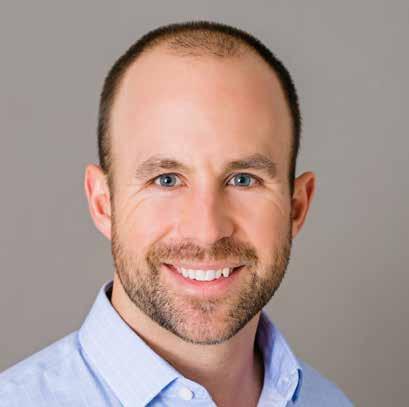
Saturday, June 15, 2024 9:30am – 10:30am
2024 OADC ANNUAL CONVENTION CONTINUING LEGAL EDUCATION GUIDEBOOK

INTELLIGENCE TRADECRAFT: Principles for Advanced Investigations

DigiStream Investigations
Garrett McGinn Partner
222


What would you say you do here?
ⓘ Start presenting to display the poll results on this slide.
223

“THE
INTs” GEOINT
OSINT MASINT SIGINT
HUMINT
224

INVESTIGATIVE BREADTH
Entities
Individuals
Devices
Locations
225


What types of investigations interest you the most?
ⓘ Start presenting to display the poll results on this slide.
226

“THE
INTs” GEOINT
HUMINT OSINT SIGINT
227

CROWD-SOURCED INTELLIGENCE
Sociologists have been studying the effects of social media on society and have coined the term “self surveillance” or “participatory surveillance” to encapsulate a widely-observed phenomenon: For many people, the desire to promote their “personal brand” is greater than their desire for privacy. Self-surveillance dominates the social habits of younger generations of “Digital Natives.” However, increasingly older generations are the most notable content posters.
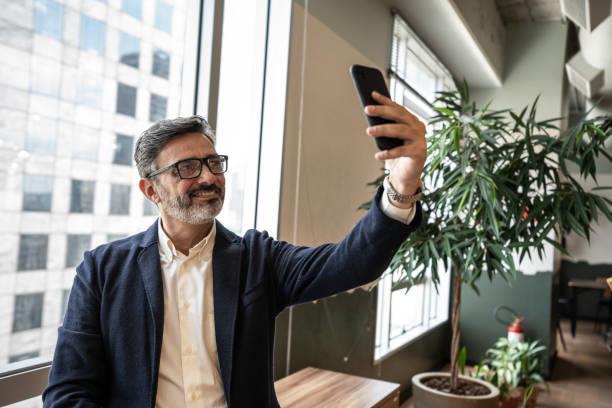
OSINT 228

THREE PILLARS OF OSINT
IDENTITY RESOLUTION CHRONOLOGIC
OSINT 229
RESOLUTION GEOGRAPHIC RESOLUTION

IDENTITY RESOLUTION CASE STUDY
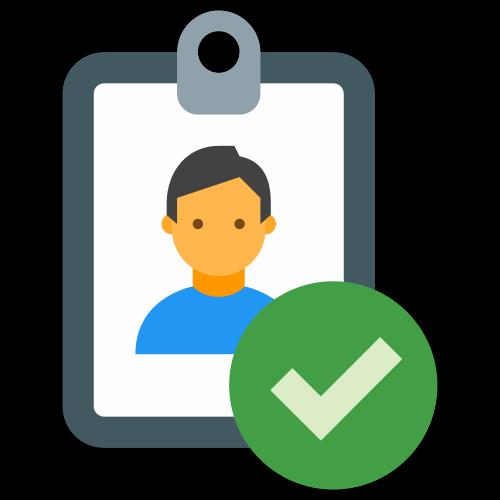
• 28 year-old trucker claimed a workers’ compensation injury due to an alleged cumulative back injury.
• The subject was found to have an active lifestyle on social media.
• An Instagram account was located via a cell number and featured dozens of videos posted by the subject featuring him engaging in skydiving after the date of loss.
OSINT 230

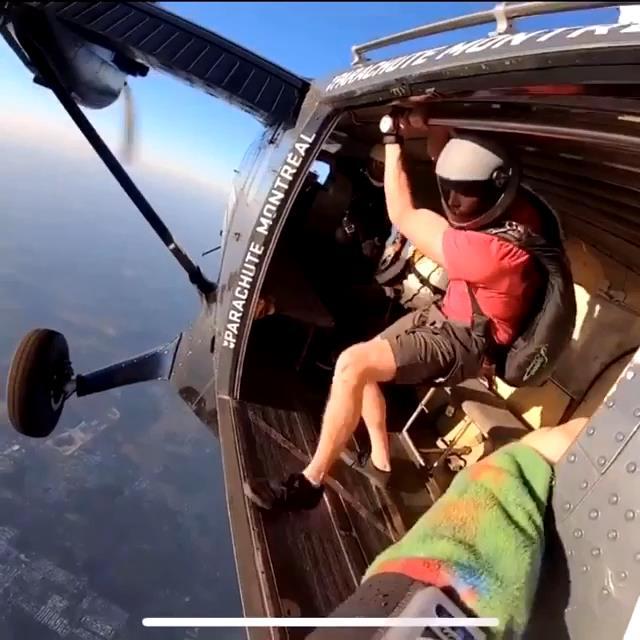
231



THE PROCESS OF IDENTITY RESOLUTION
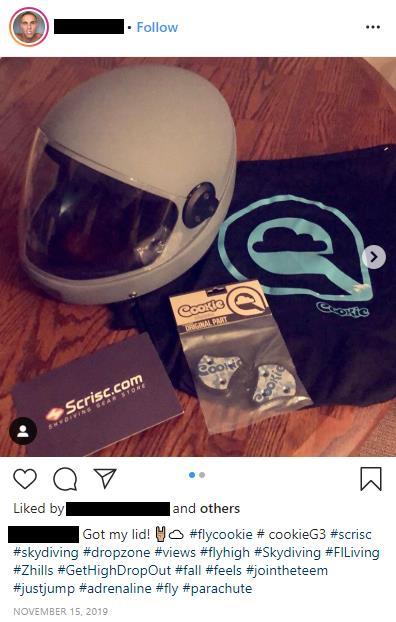


OSINT 232

THE PROCESS OF GEOGRAPHIC RESOLUTION


OSINT 233



234
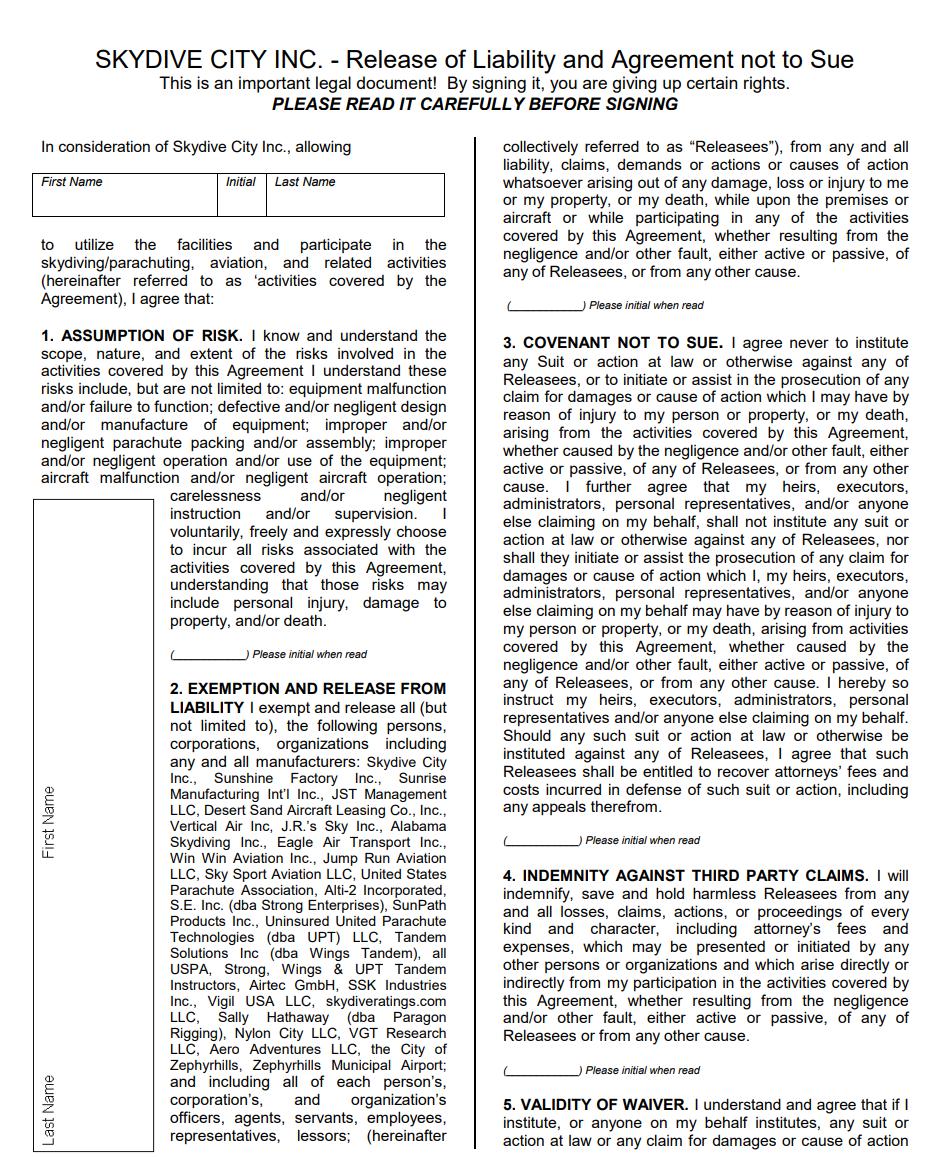
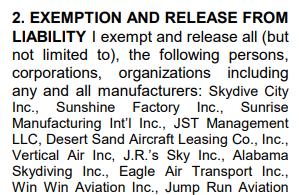

235


OSINT 236

Geographic Resolution –
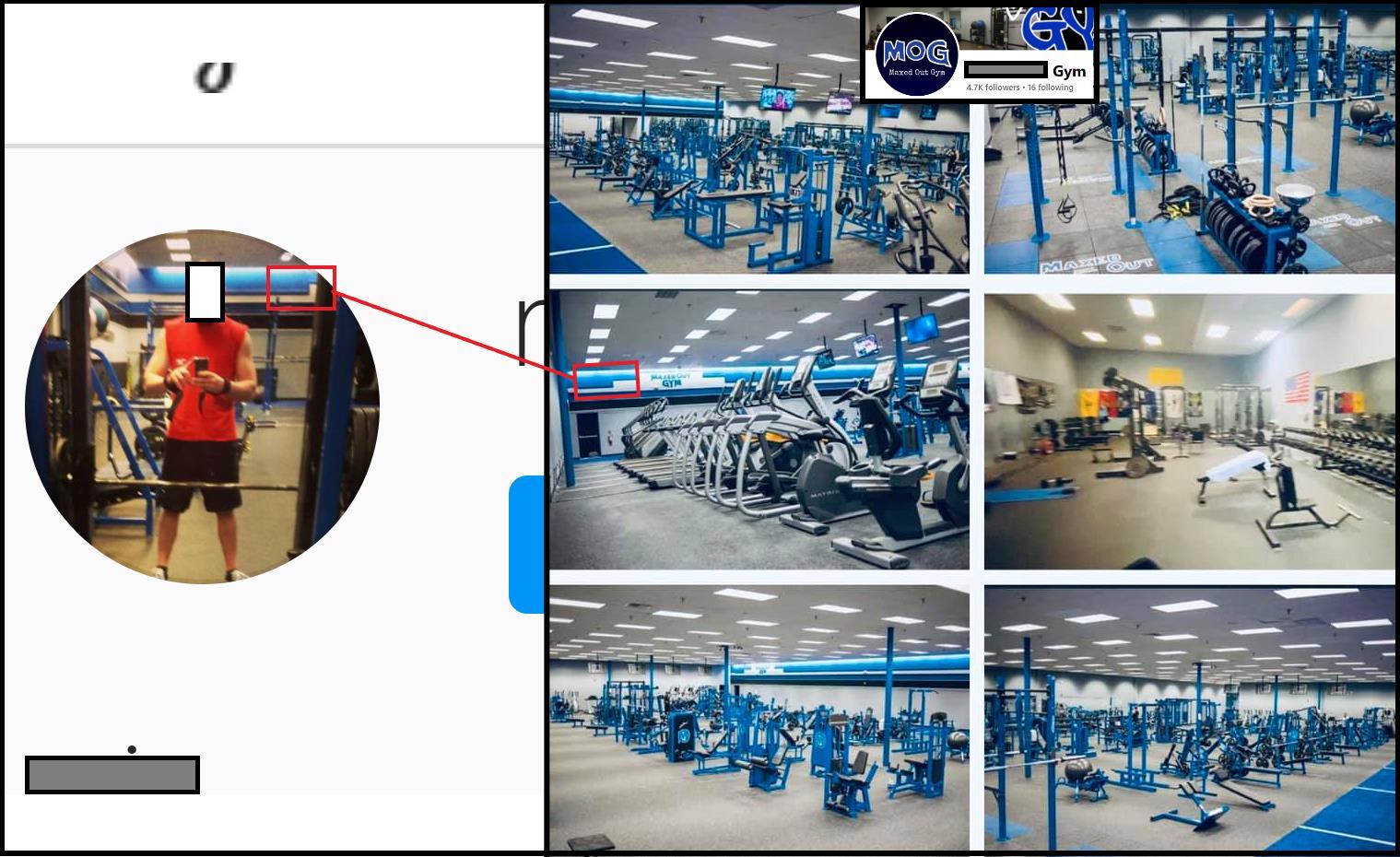
OSINT>HUMINT OSINT 237


OSINT
OSINT>HUMINT 238
Geographic Resolution –

“THE
INTs” GEOINT
HUMINT OSINT SIGINT
239









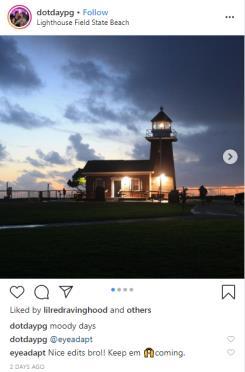



240
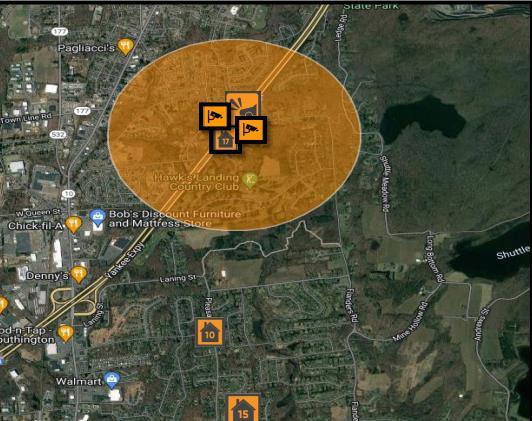
GEOINT CASE EXAMPLE: EVIDENCE COLLECTION & WITNESS IDENTIFICATION
GEOINT 241

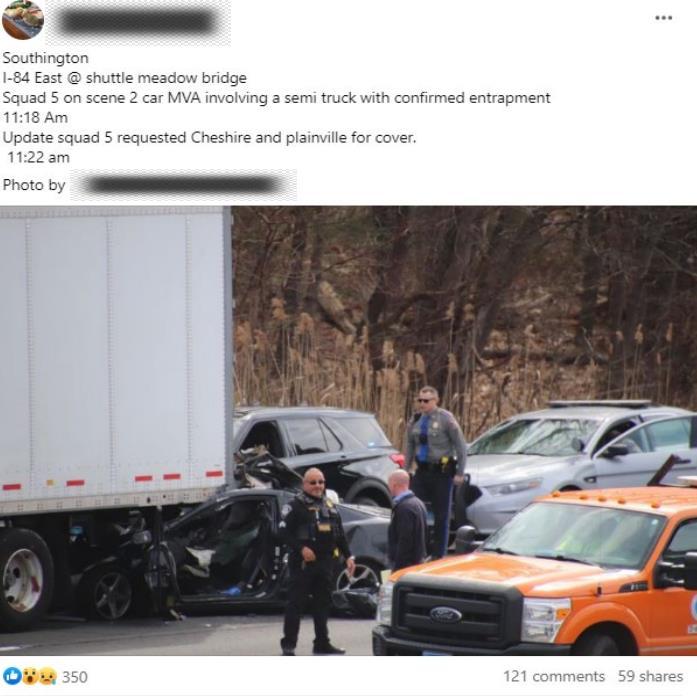
GEOINT 242



GEOINT 243

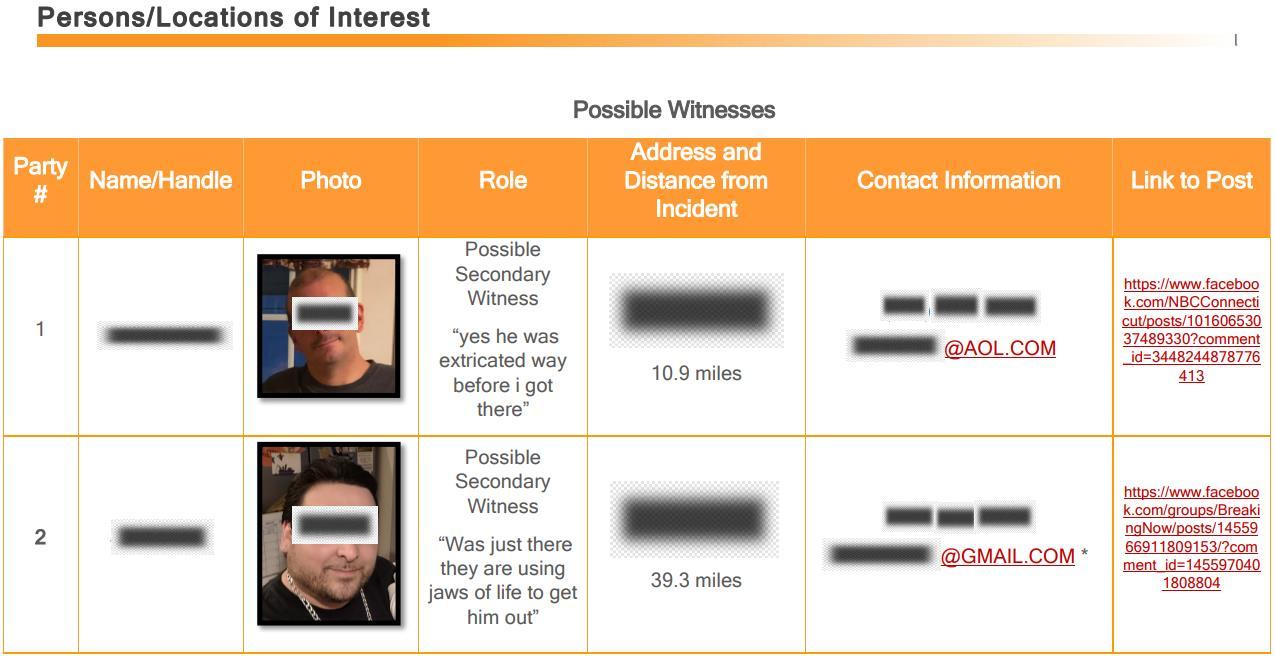
GEOINT 244

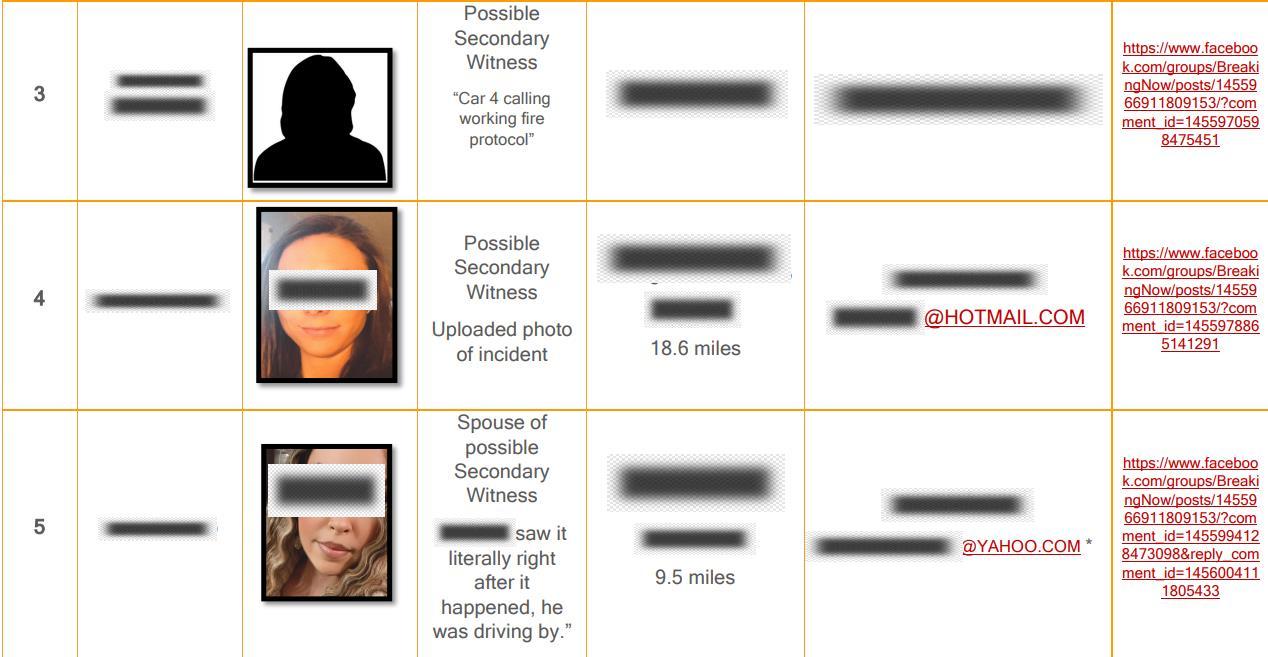
GEOINT 245


GEOINT 246

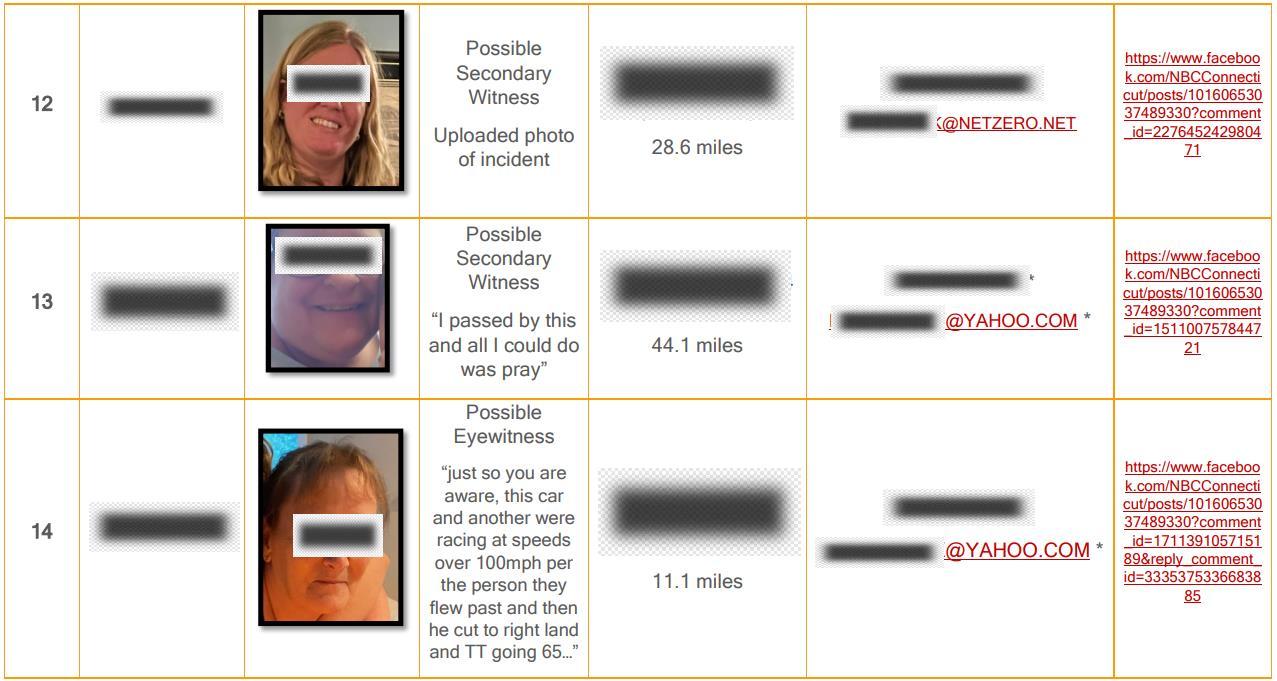
GEOINT 247

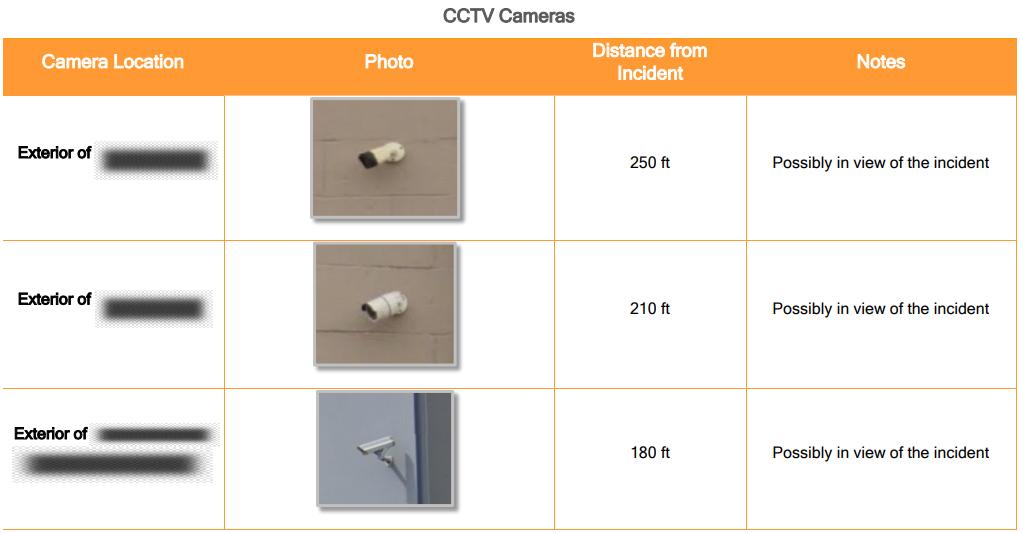
GEOINT 248
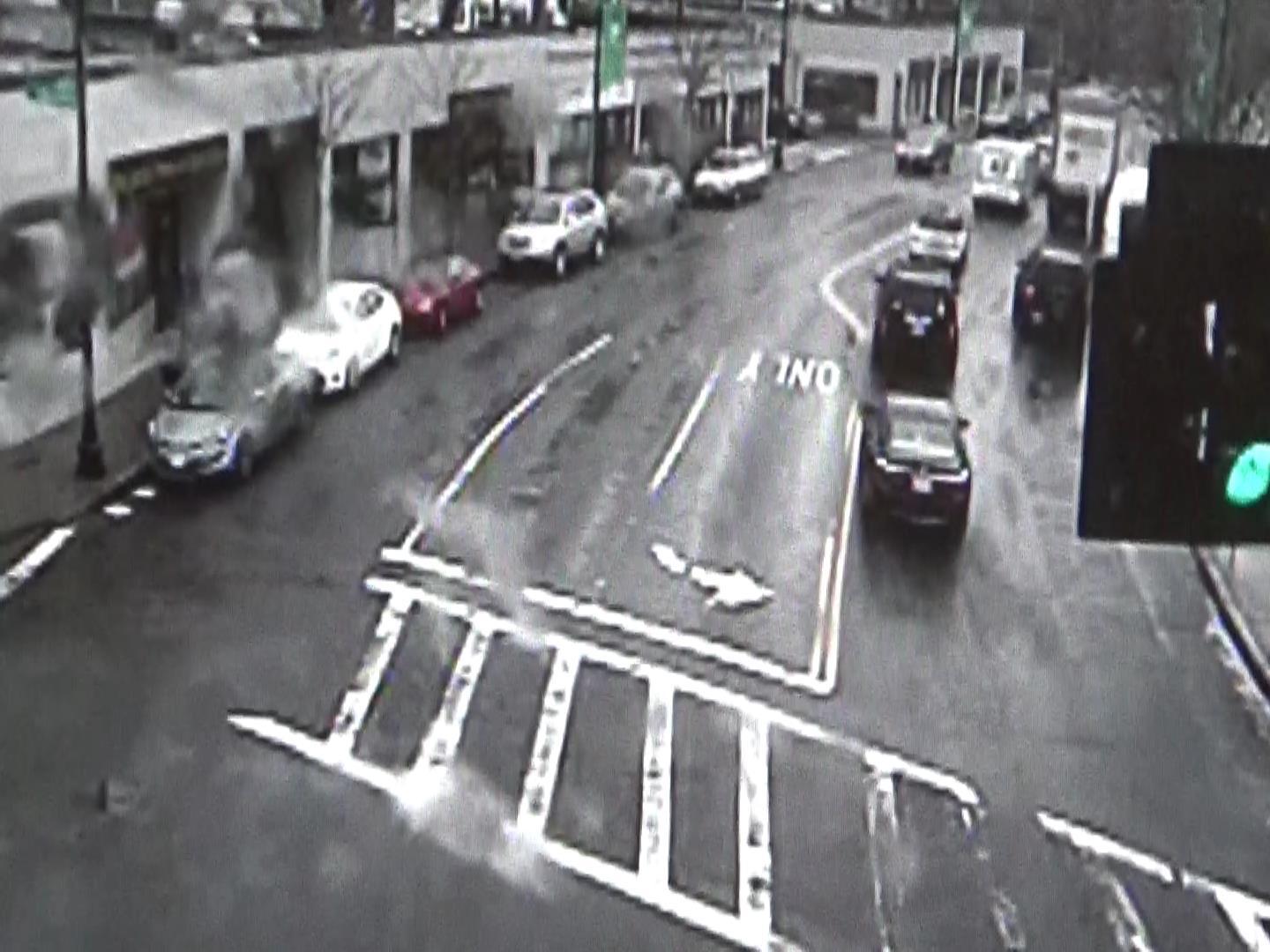
249


250
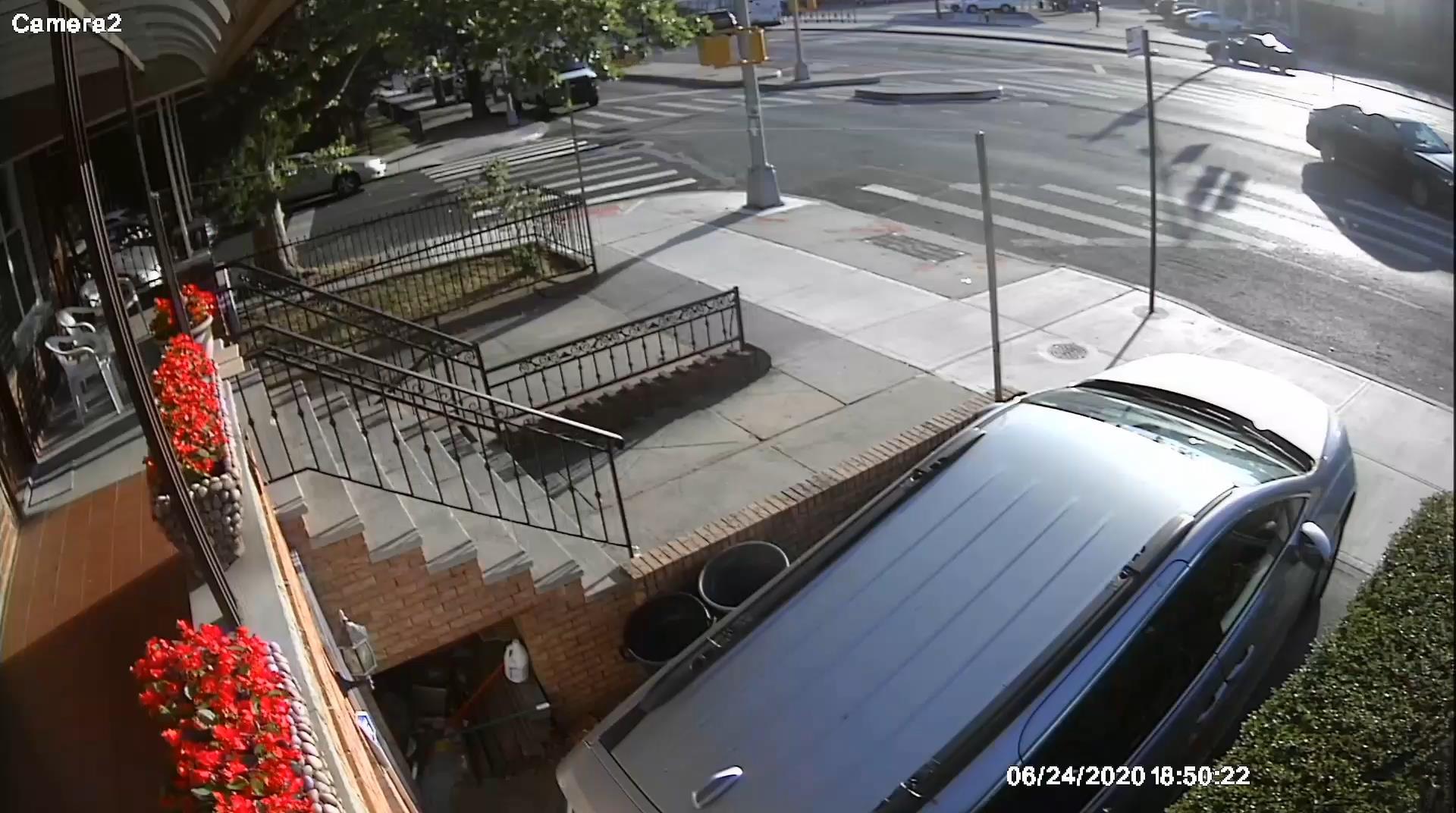
251

OBTAINING CCTV IN THE PRIVATE SECTOR


252


Imagery & Video Enhancement

Extracting & enhancing intel from degraded content
GEOINT 253

Image Enhancement: Motion Deblurring
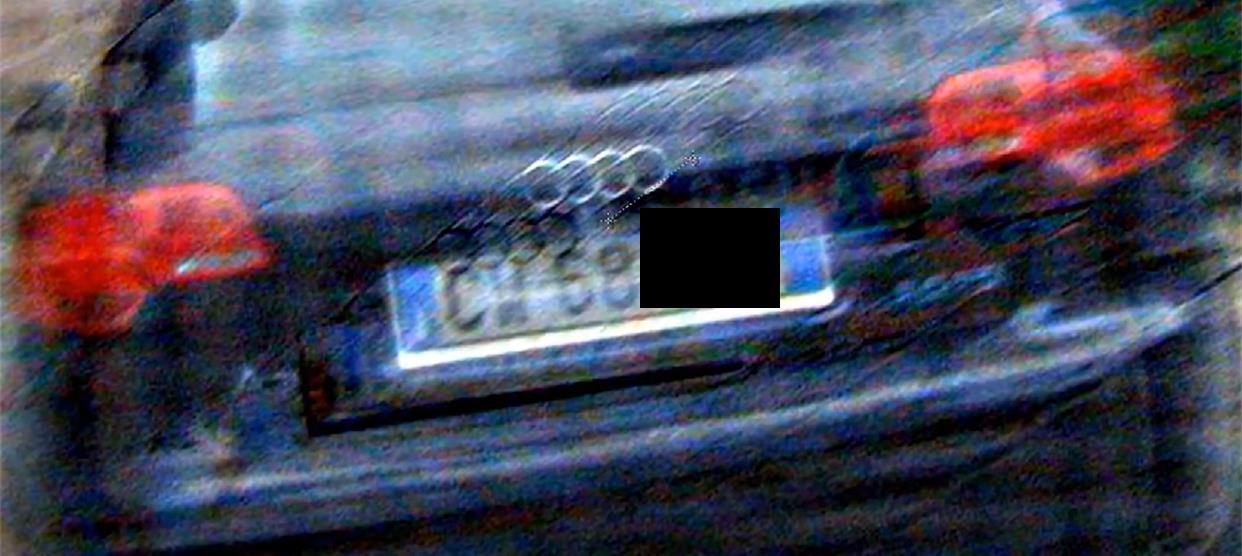
GEOINT 254

Image Enhancement: Optical Deblurring

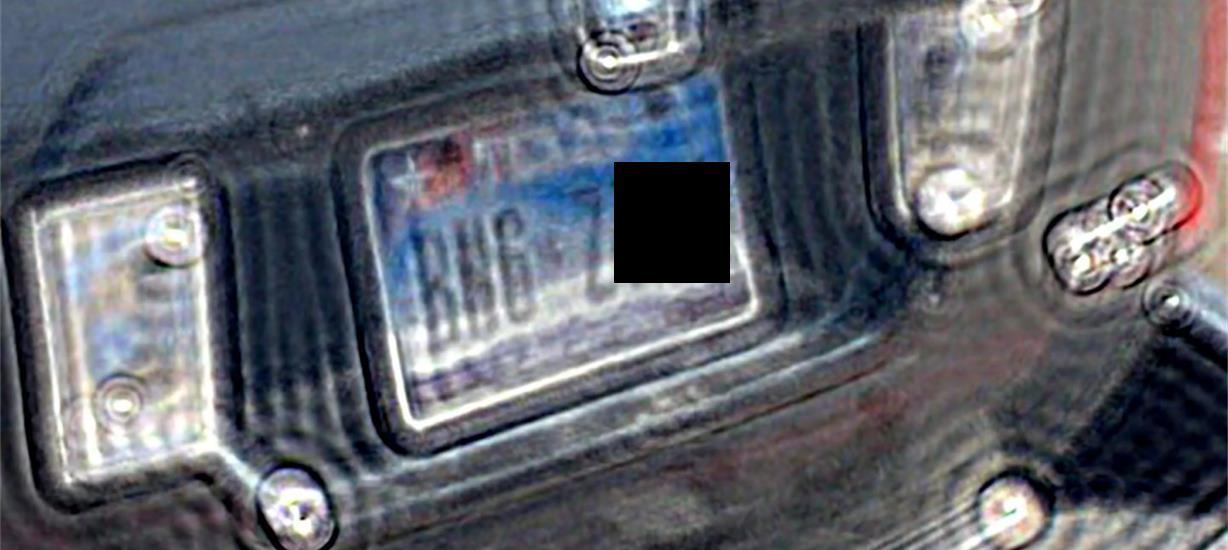
GEOINT 255



Image Enhancement: Turbulence Deblurring
GEOINT 256

Image Enhancement: Upscaling

GEOINT 257

Facial Recognition Search
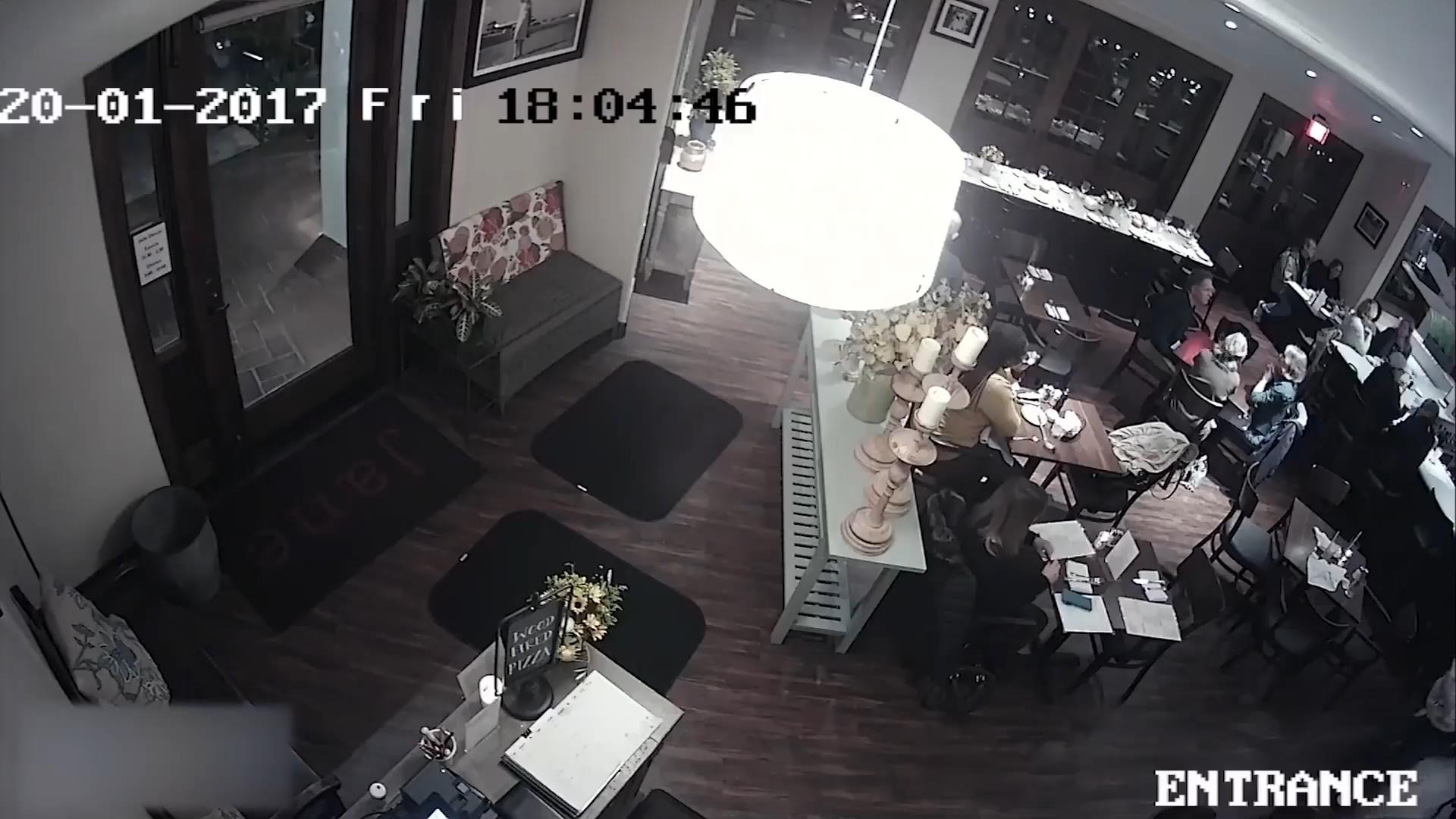
258




Facial Recognition Search
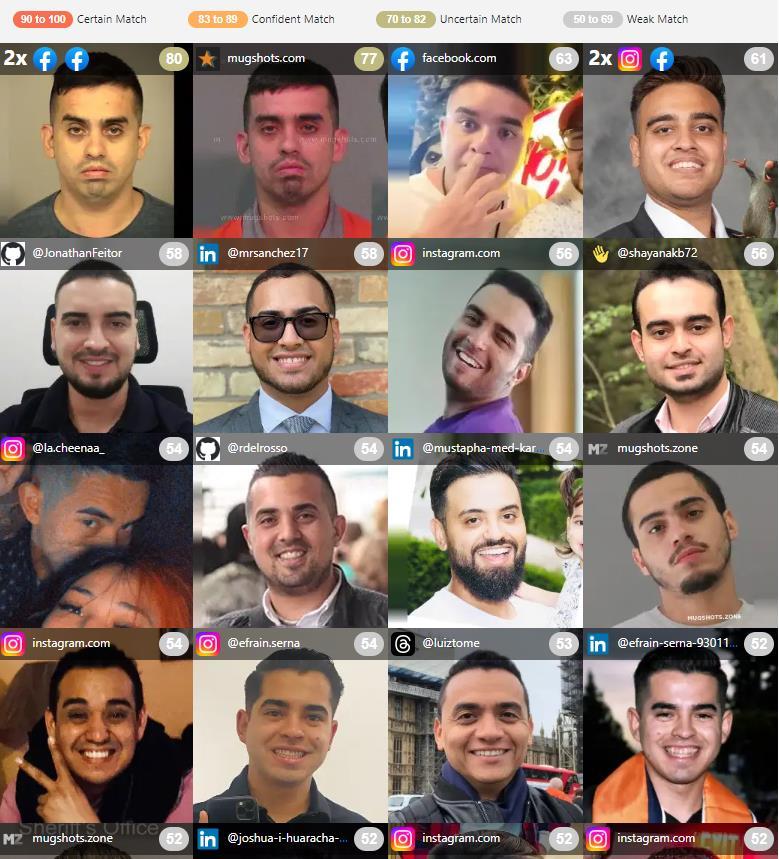
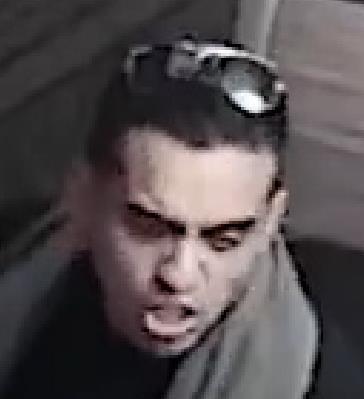


259

Image Enhancement: Correct Perspective


GEOINT 260
Video Enhancement: Local Stabilization
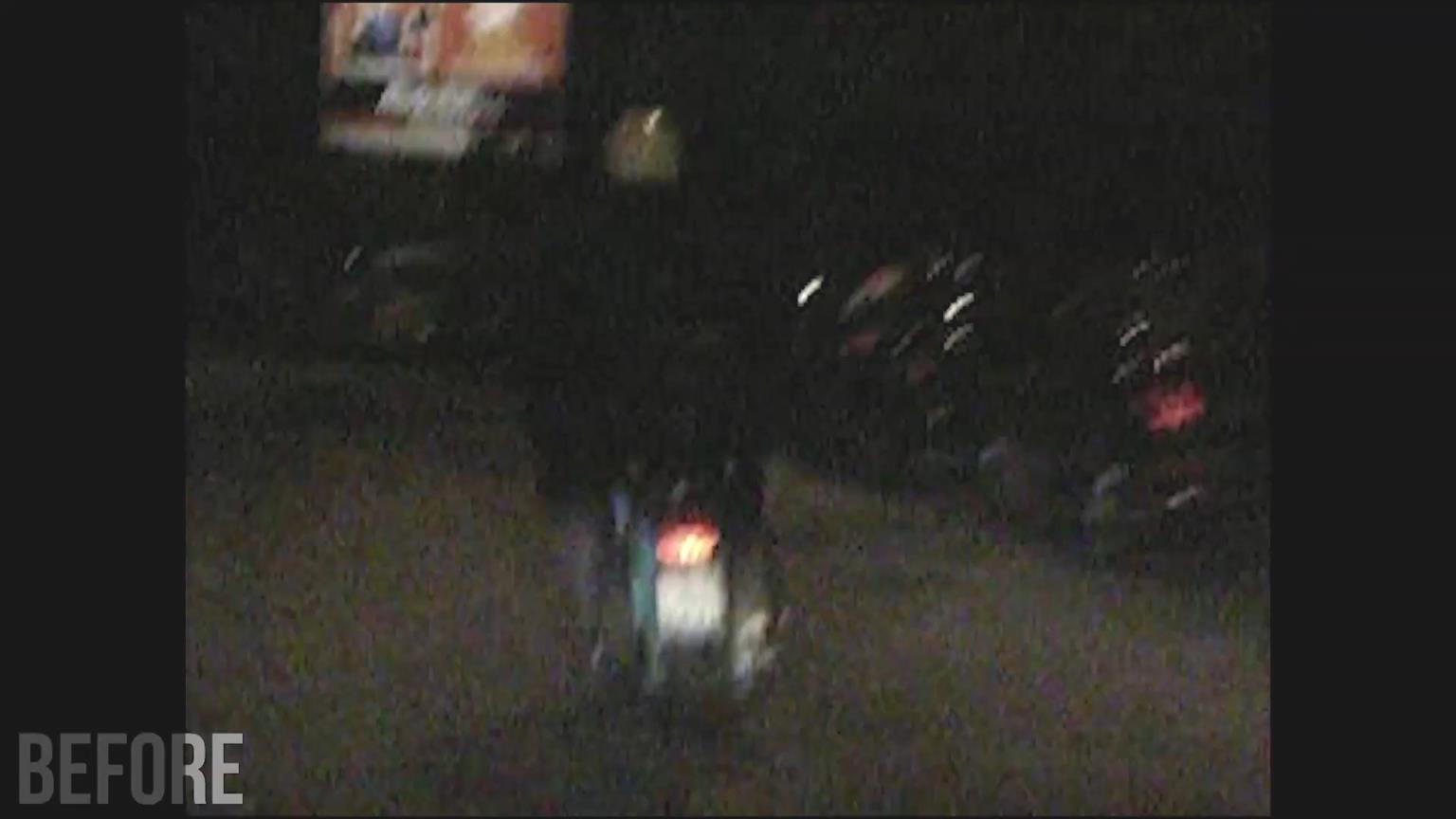
261

Video Enhancement: Frame Averaging
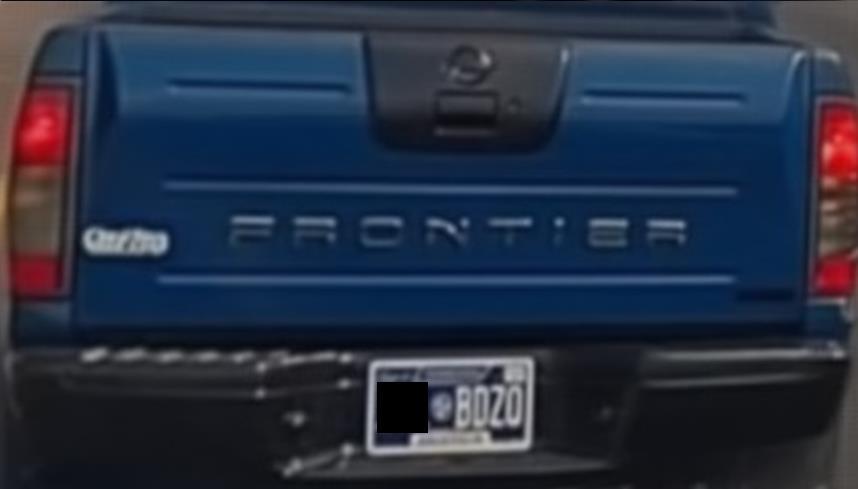
GEOINT 262

Video Enhancement: Fisheye Correction

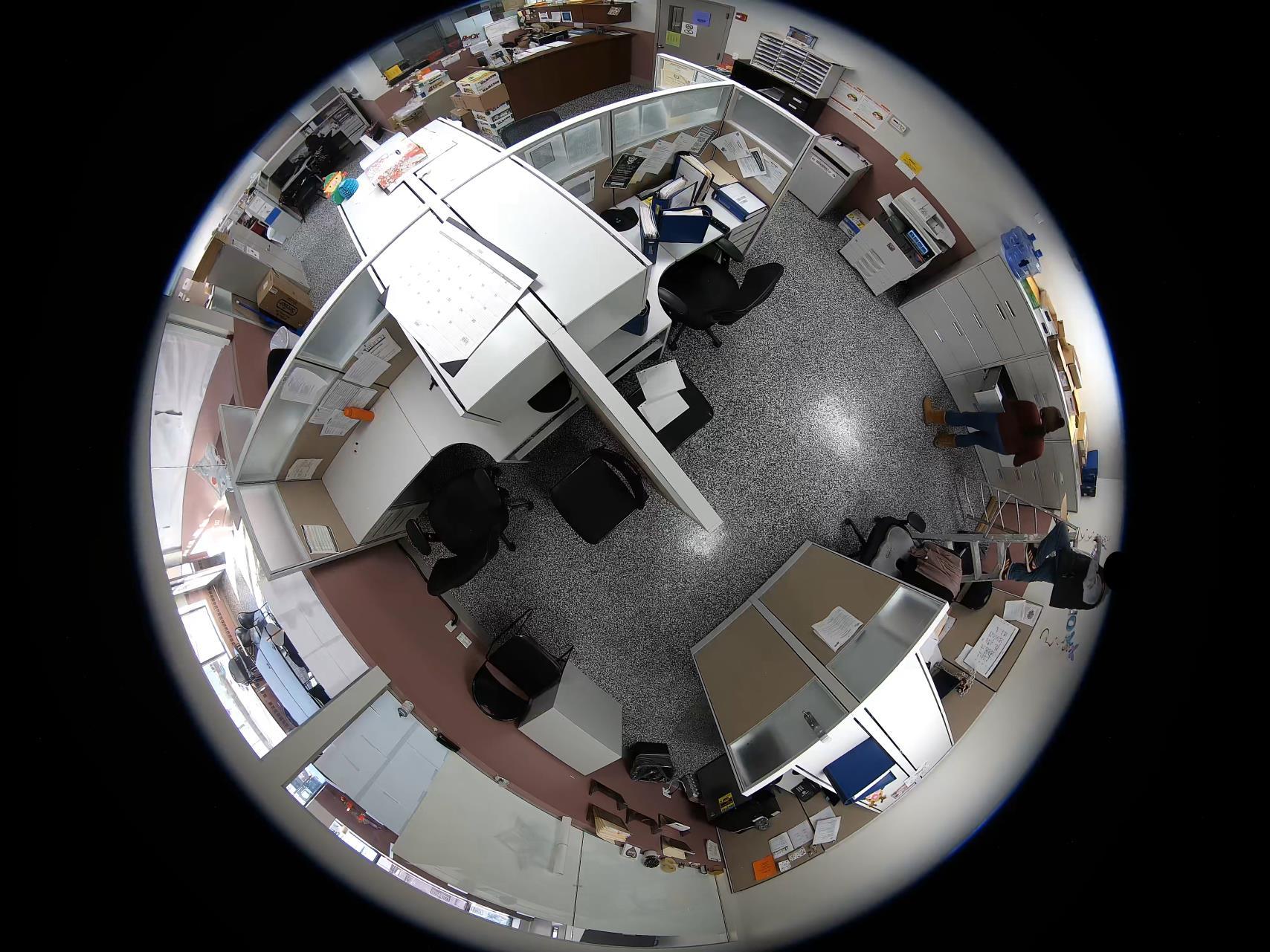
GEOINT 263

Forensic examination of the side mirror revealed that the semi-trailer maintained a consistent position relative to the right-hand traffic line, which confirmed that the pick-up truck initiated contact after swerving into the semi-truck.
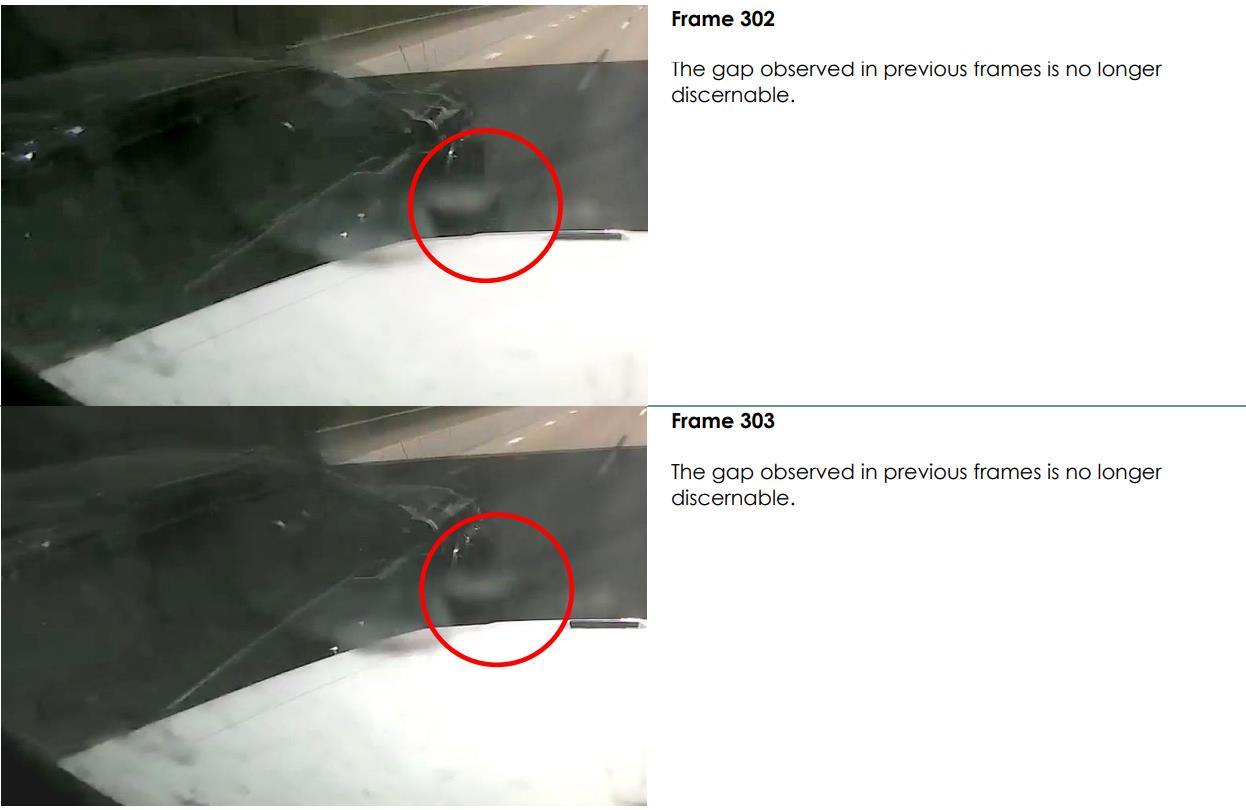

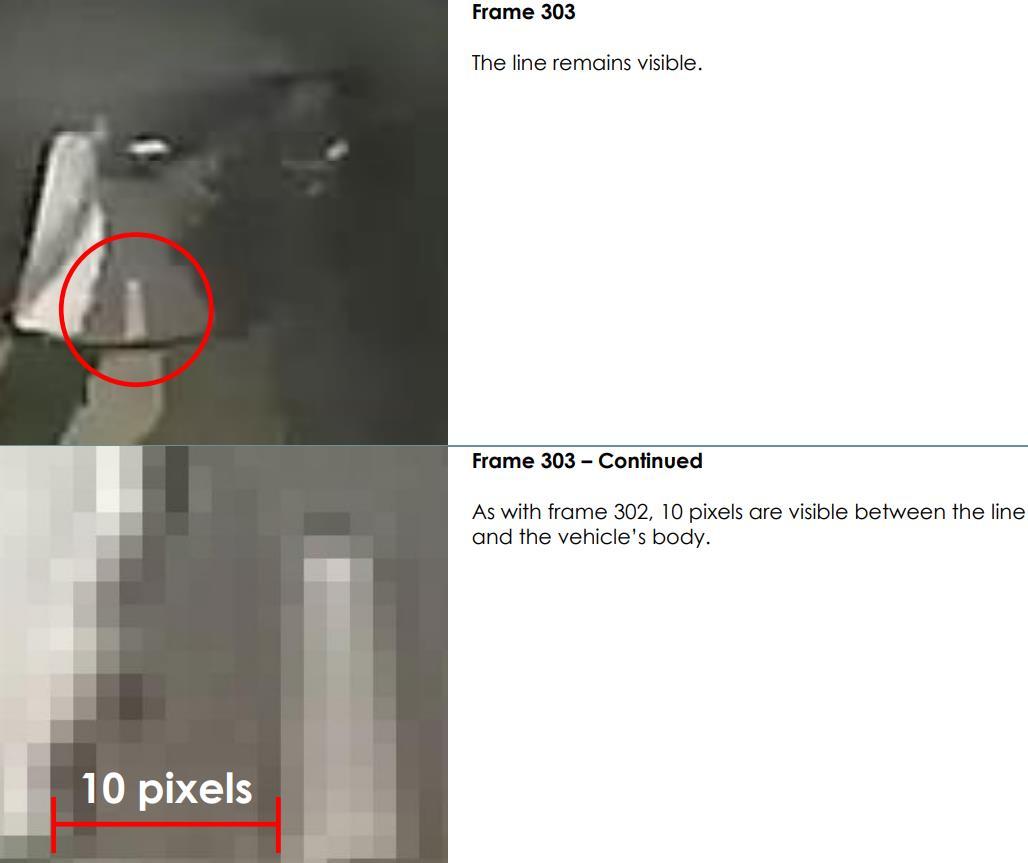

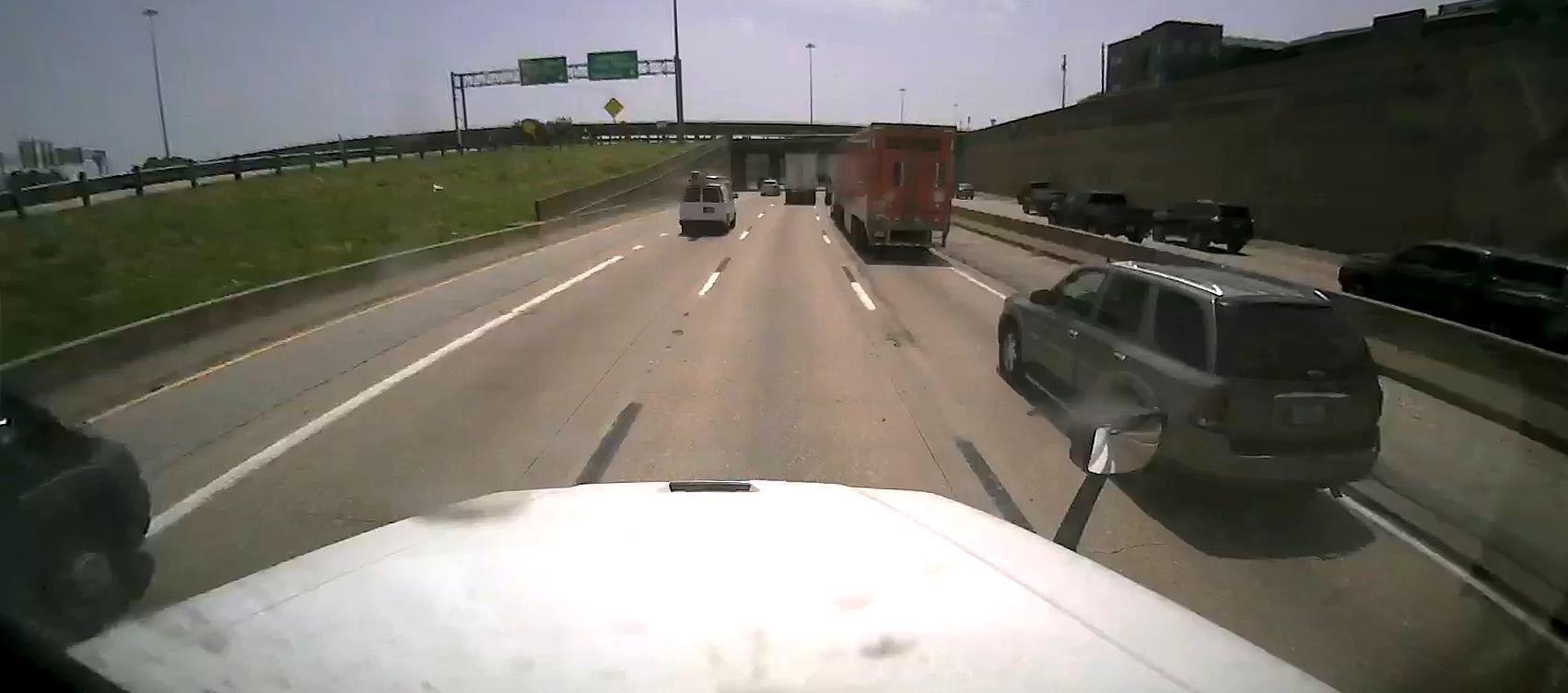
264

Process Documentation and Verification

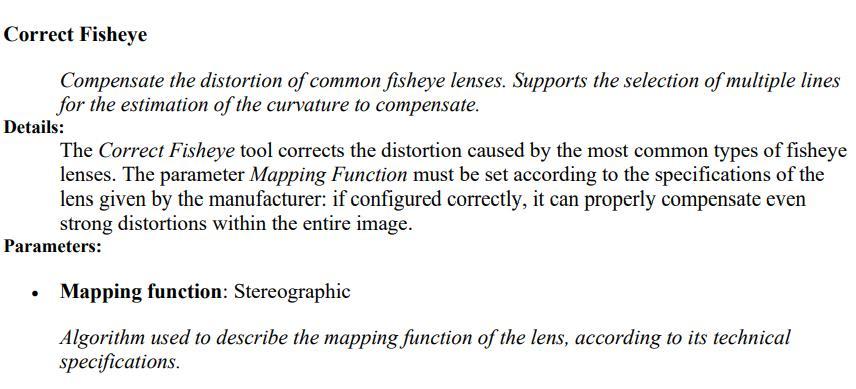
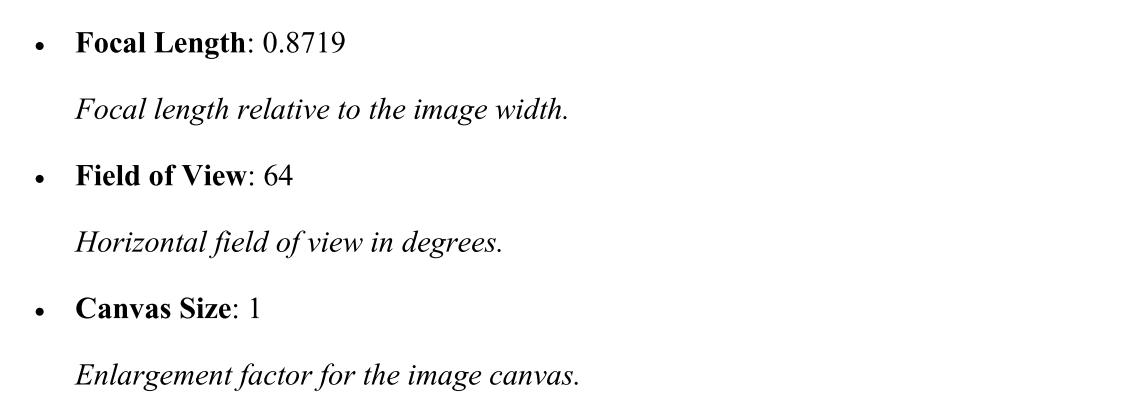

GEOINT 265

The Magic Bullet?

11 pixels
GEOINT 266

Vehicle ‘Wildcard’ Searches
• Due to the video not providing clear
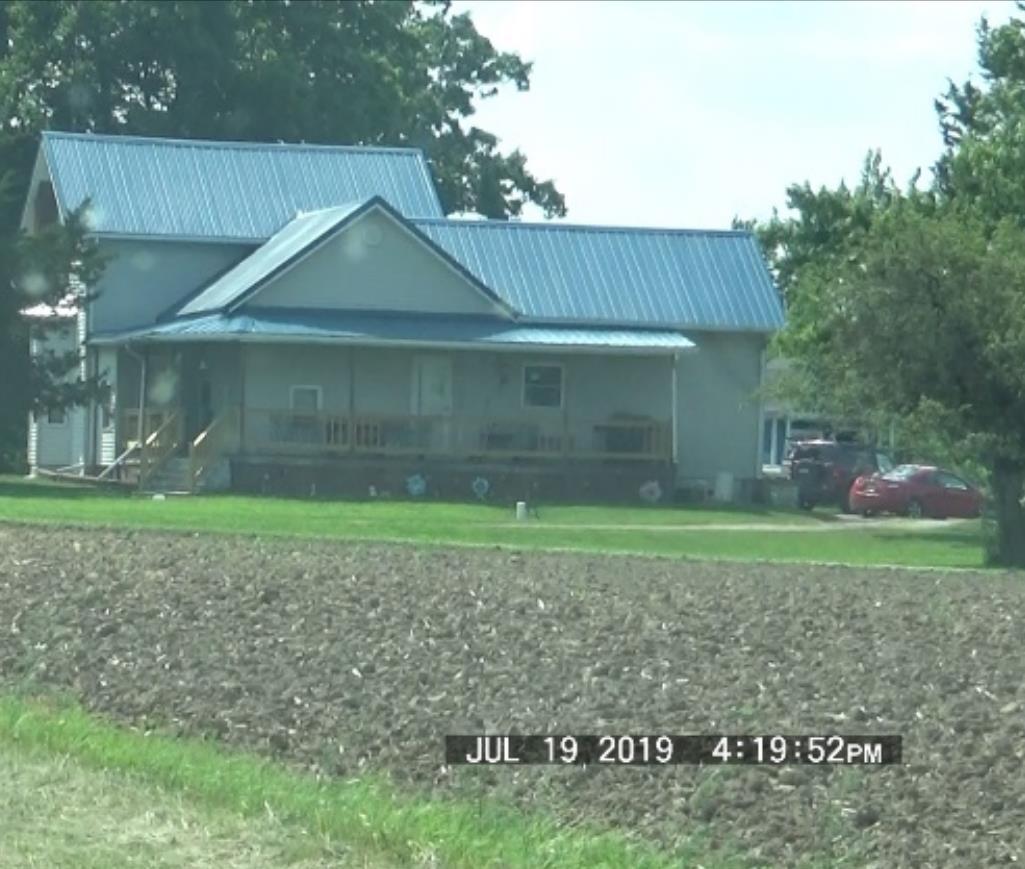

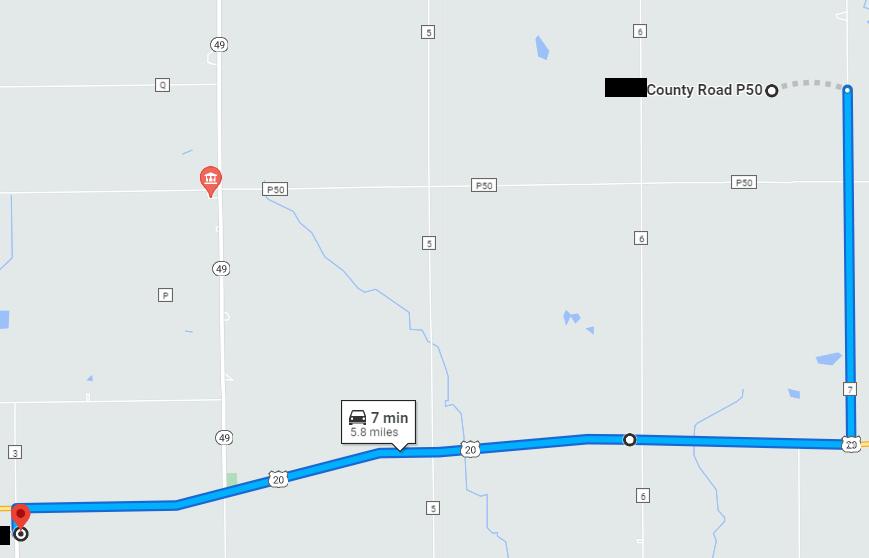
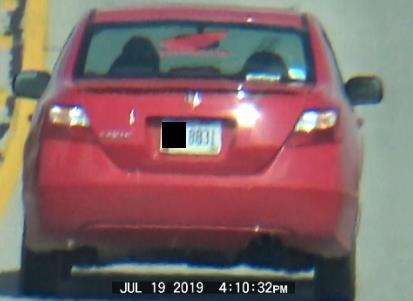
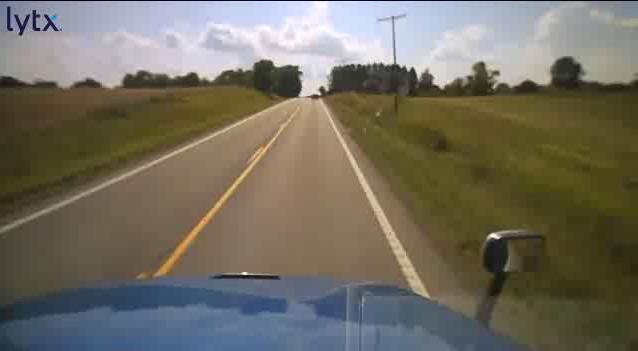
• GEOINT 267

Satellite & Aerial Imagery
Historical data answering present questions
GEOINT 268

Understanding
terminology:
50cm resolution means each pixel covers a 50cm square of ground
50cm


Understanding applications:
2m)
Very high resolution (<50cm)
GEOINT
269



270

“THE
INTs” GEOINT
HUMINT OSINT SIGINT
271
DUE DILIGENCE
“A competent attorney needs to recognize the potential treasure trove of relevant information that mobile digital devices contain and to take steps to specifically request discovery of mobile devices and to preserve the digital information that is stored on them.” – ABA, 2016

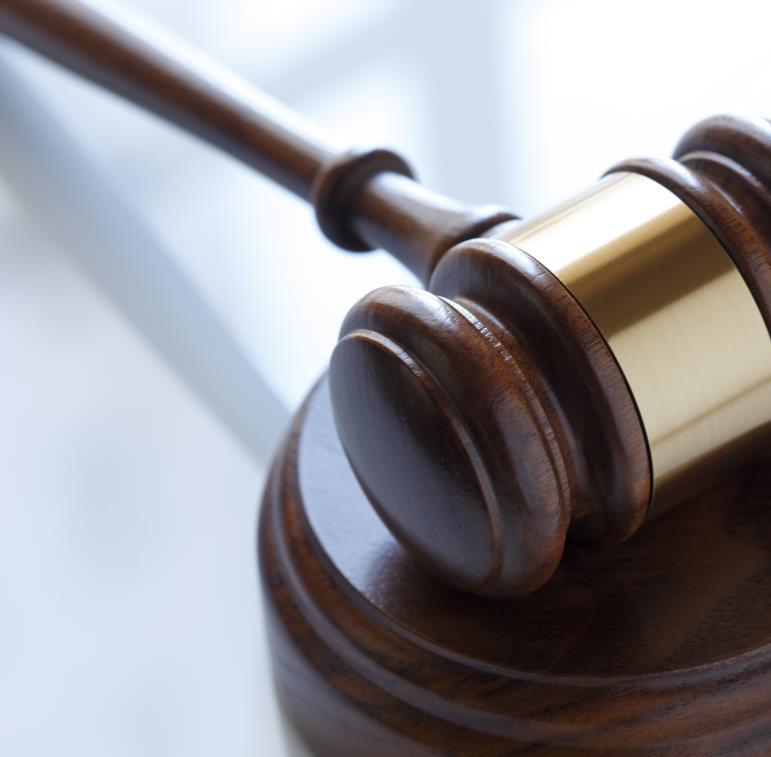
SIGINT 272
SCOPE
Mobile Phone Capabilities:
• Device state (face-up/face-down)
• Text logs
• Call logs
• App data
• Location data
• Health data
• Photo/Video metadata
• Private chat data
• Deleted Data


273
COMMON DEVICE REQUESTS
Mobile Phones
Data stored on the device, as well as within apps and the cloud may be extracted along with information about the state of the device at a specific time/date
Personal Computers
File creation, transmission and storage can be examined, as well as “deleted” content
Internet of Things (IoT)
A forensic specialist can examine any device that stores data locally. In some cases, device data is stored remotely, requiring download or subpoena.
Vehicle Black Box
Computers within motor vehicles capture a wealth of data including speed, acceleration, runtime, and diagnostic codes.
SIGINT 274
OBTAINING EVIDENCE
IDENTIFY THE OPPORTUNITY
Parties to the suit may not be transparent about devices that store information pertinent to the investigation.
INTERROGATORIES & DEPOSITIONS
Knowing what type of information you seek to examine and all possible forms of that data will aid in posing pointed interrogatories. We have sample interrogatories available upon request.
KNOW THE PROCESS
In most cases, devices will need to be transferred, using chain-ofcustody procedures. Device turnaround is typically 3-5 business days.
SIGINT 275
DEVICE RECEIVED
Smaller devices are often shipped to UpStream using chain-of-custody measures.
On-site examination is available for larger projects.
DATA IMAGING
All data stored on the device is retrieved and stored electronically for analysis using industrystandard technology.
PROCESS
DEVICE RETURNED
DATA ANALYSIS
REPORTING
As soon as the data retrieval is complete and checked for accuracy, the device is returned to the client/owner.
Captured data is analyzed and report compiled that directly identifies the goals of the investigation and results.
Case-relevant data is identified and included in a written report to clearly summarizes the most notable investigative findings.
SIGINT 276
CASE STUDIES
SIGINT 277
MOBILE PHONE
• Background: Subject allegedly contracted COVID19 at work. We were asked to investigate his phone to trace his movements and activities leading up to his diagnosis.
• Forensics revealed emails suggesting involvement in community social events, and GPS data placed the device near addresses associated with these events.
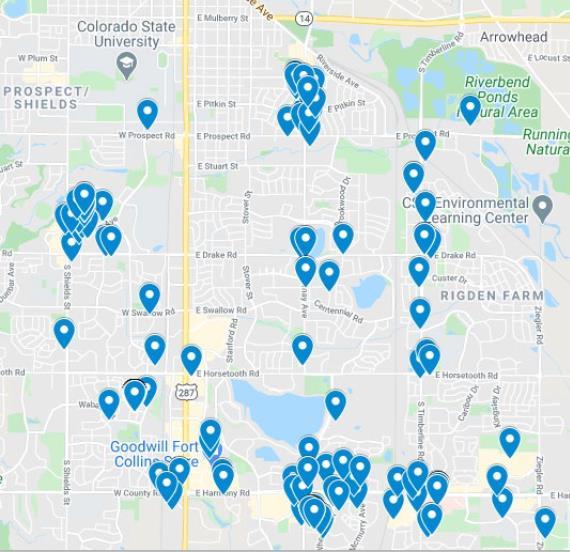



SIGINT 278
MOBILE PHONE
• Background: Subject driving a commercial truck ran a stop sign, injuring a young woman in another vehicle.
• Forensics revealed that at the time of the incident, the subject’s cell phone was playing a continuous stream of SnapChat videos, many of which contained adult content.



SIGINT 279
INTERNET OF THINGS
• Background: the plaintiff was involved in a motor vehicle collision and claimed that their sleep and active lifestyle were adversely affected. During online research, UpStream noted the plaintiff regularly wore a FitBit, and after a subpoena was sent to the company, the data revealed information contradictory to the plaintiff’s claims.

0.00 1.00 2.00 3.00 4.00 5.00 6.00 7.00
incident 0 100 200 300 400 500 600
of incident 6.0 6.5 7.0 7.5 8.0
SIGINT 280
Miles Walked Date of
Minutes Spent in or Above Fat Burn Zone Date
Hour Total of all Sleep Stages Date of incident
SUMMARY
A competent attorney must recognize when data collected from mobile devices, computers, and IoT may be useful to their case.
Sample interrogatories are available, as well as a one-page explainer that can be used in court to obtain a subpoena.
Questions can be directed to DigiStream or UpStream and one of our technical experts can guide you through the process.
SIGINT 281
Device Location Forensics

Utilizing signal datasets to locate witnesses
SIGINT 282

Rate your ride with Amy!

Sorry! Sports betting is not allowed in California!

283

Geolocation data in order to locate nearby events and venues.
Data Collected
Geolocation data to locate nearby drivers, track ride, confirm drop off.
Device
037F85EF-2PHC-39D5A066-7D6UAC1EB308
Geolocation data to confirm proximity to venue.
Geolocation data to confirm service eligibility.
SIGINT 284

With a known location and time of incident, anonymized devices can be harvested within the area of interest
Witness Location
Once devices are harvested within the location, time filters can be applied to drill down even further If a device is identified within the area of interest, and was present in the appropriate timeframe, analysis of the device’s location history can be utilized to locate possible residences to deanonymize the device’s owner.

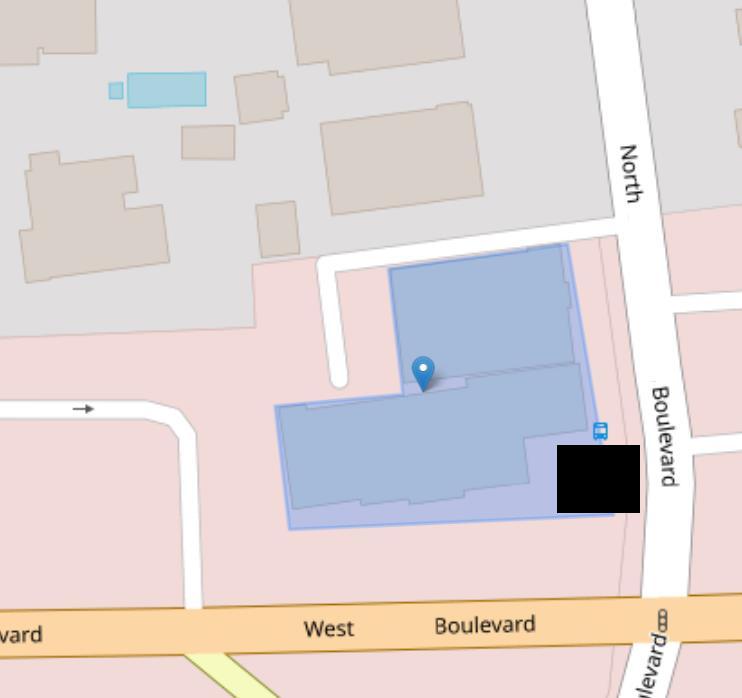
Device recorded at residential location at night on consecutive days
Current Property Owner: Joe Public

SIGINT 285

“THE
INTs” GEOINT
HUMINT OSINT SIGINT
286


THANK YOU FOR YOUR KIND ATTENTION OADC Questions? Garrett McGinn Partner DigiStream Investigations UpStream Intelligence www.digistream.com www.upstream-intelligence.com 287
Past President Lightning Round
MODERATED BY:
George Pitcher, Wilson Elser Moskowitz Edleman & Dicker
PRESENTED BY:
Lloyd Bernstein, Partner, Bullivant Houser
Dan Schanz, Partner, Schanz-Lawler
Katie Smith, Walhood Law Group
Vicki Smith, Partner, Chinn Smith Winters
Grant Stockton, Partner, Brisbee & Stockton
Peter Tuenge, Partner, Keating Jones Hughes
Gordon Welborn, Retired Partner, Hart Wagner
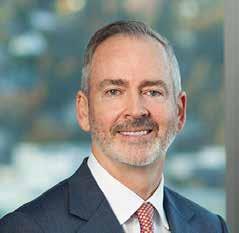
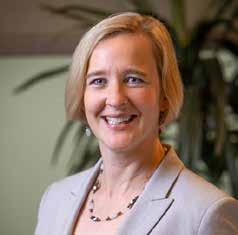

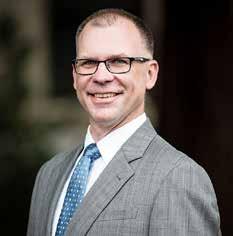

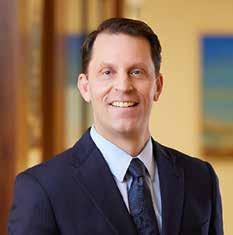


Saturday, June 15, 2024
11:00am – 12:00am
2024 OADC ANNUAL CONVENTION CONTINUING LEGAL EDUCATION GUIDEBOOK
Thank You for Attending the 2024 Annual Convention We’ll See You Next Year! oadc.com | info@oadc.com 289



 Diane Lenkowsky
Diane Lenkowsky




























 by Amanda Nadell, Chair, and Anne Milligan MBA Court Liaison Committee
by Amanda Nadell, Chair, and Anne Milligan MBA Court Liaison Committee

















































































































































































 James C. Mosser | Nicolas Mosser
James C. Mosser | Nicolas Mosser



























































































































































